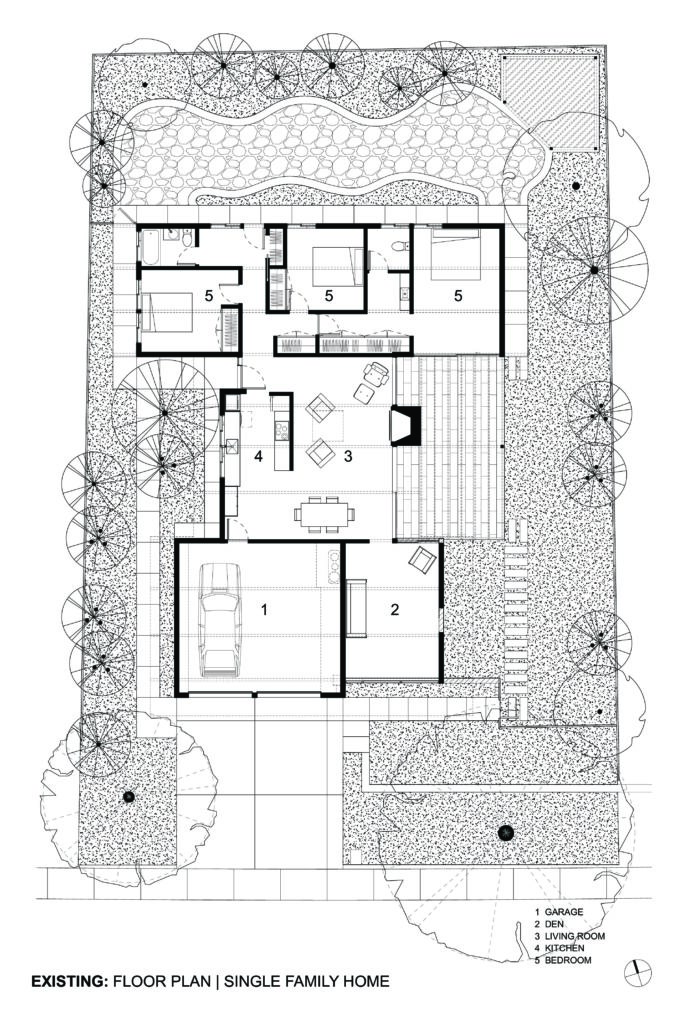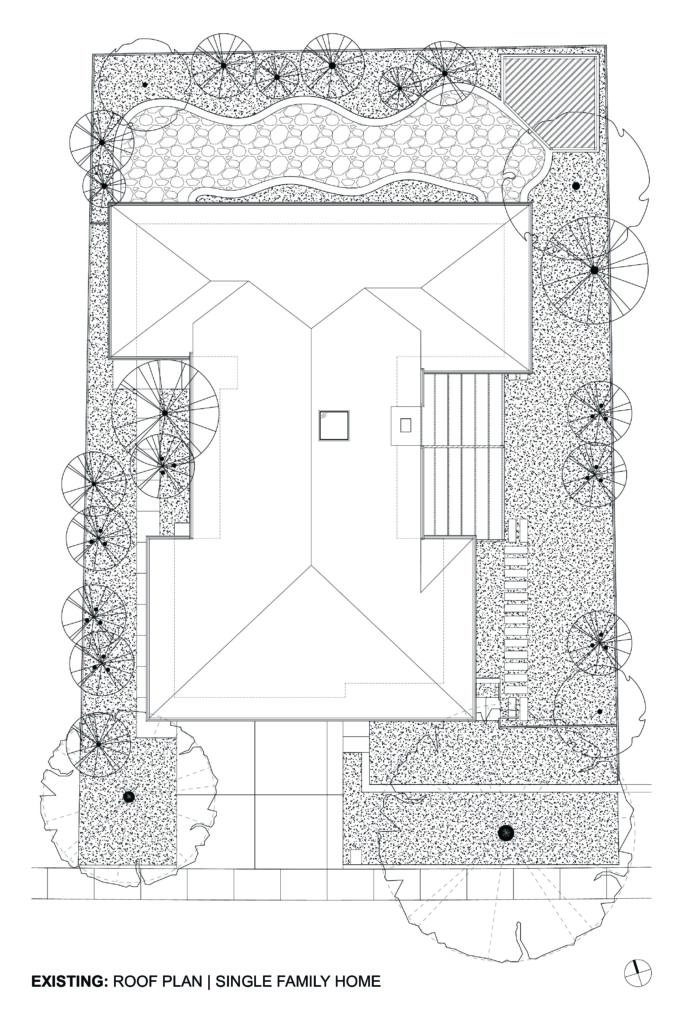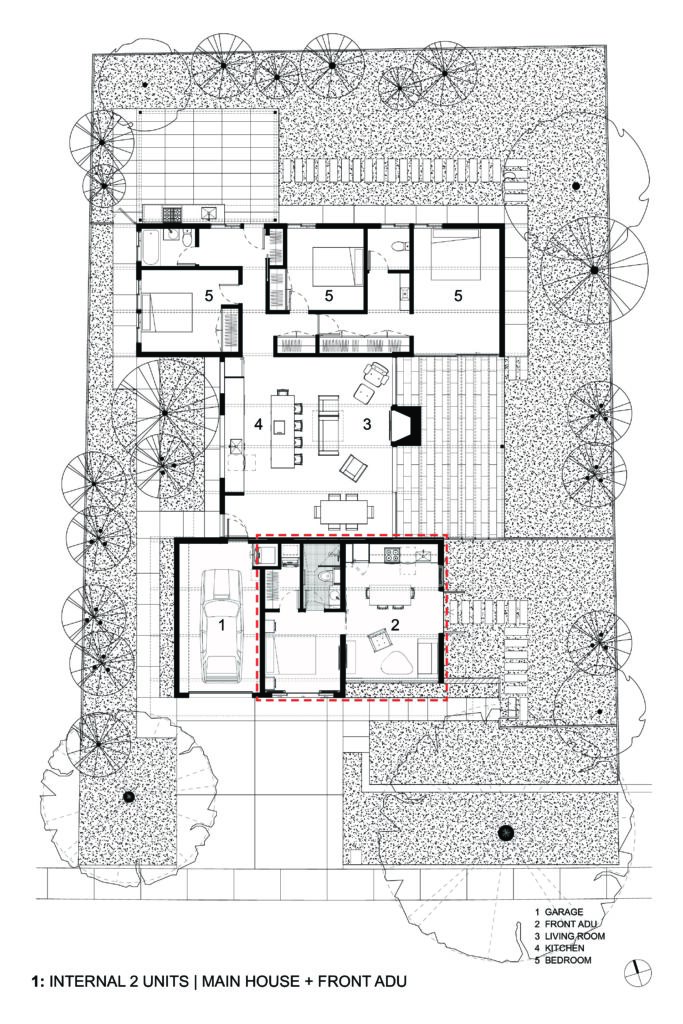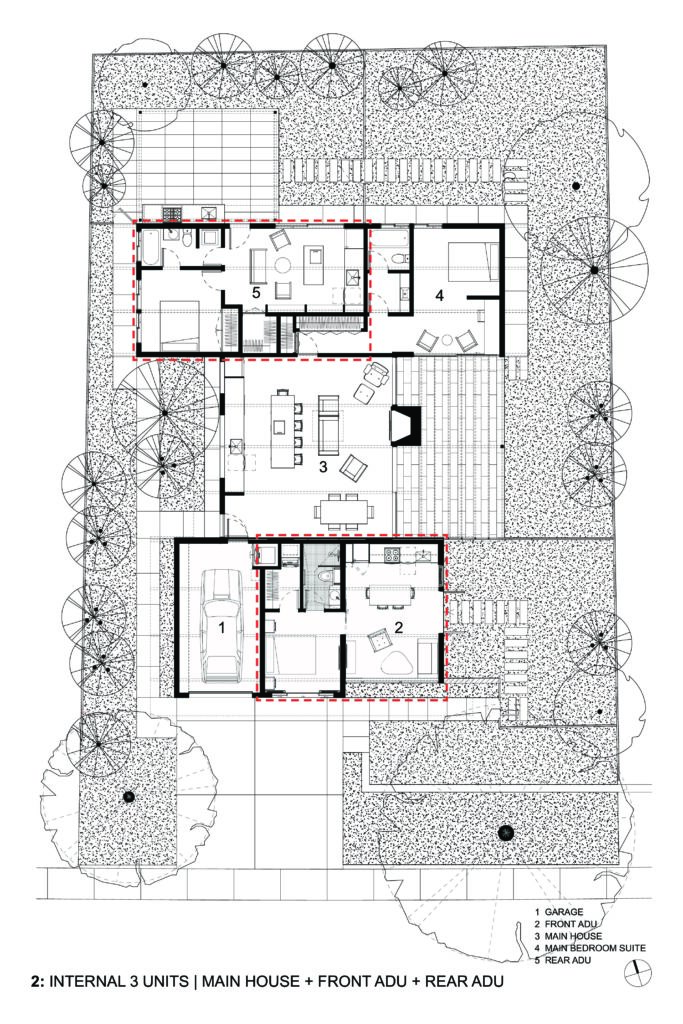Project Tag: Residential
Candlewood Lake House
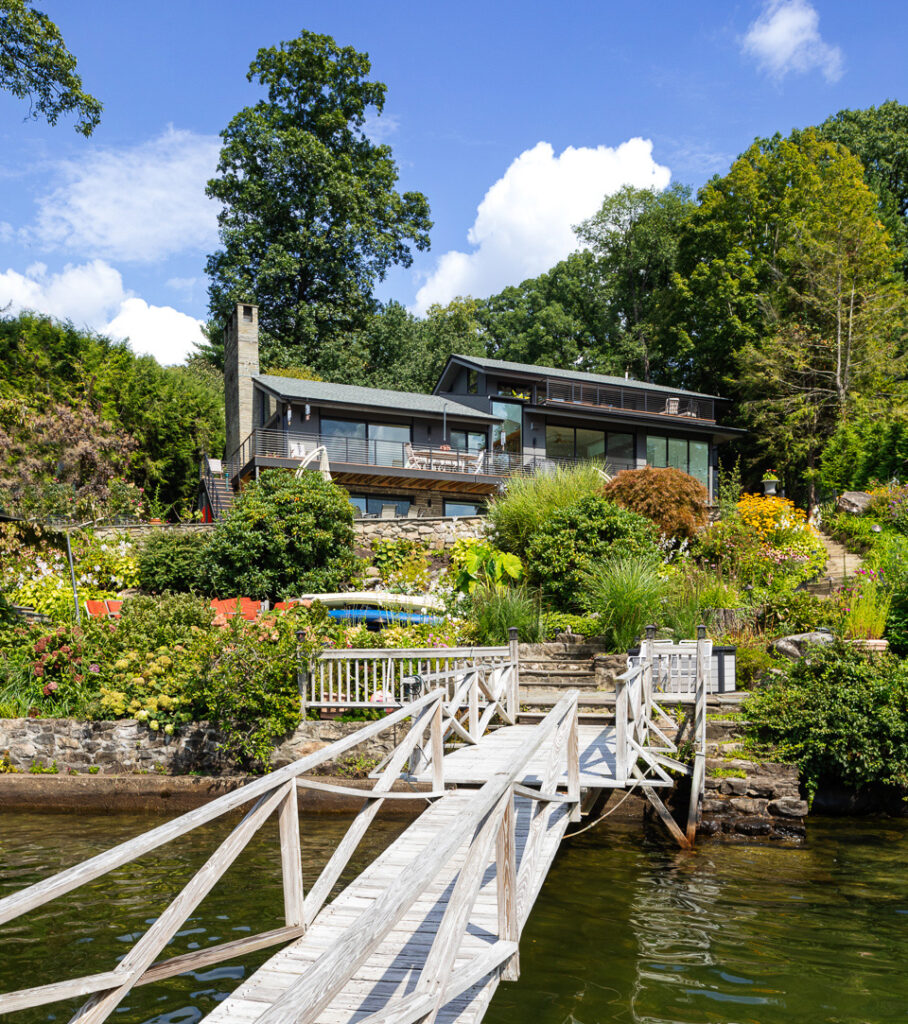
Reorienting a Home to Its Lake
Transforming a two-story summer home on a steeply sloped site over Candlewood Lake in New Milford, Connecticut, into a year-round primary residence meant expanding the home, while opening it up to capture more light and intensify its relationship with the seasonal spectacle of the lakefront. The resulting home merges dramatic interior living space with the landscape using local, authentic materials and carefully choreographed transparency to connect the lived experience of the house with the place that inspires and defines it.
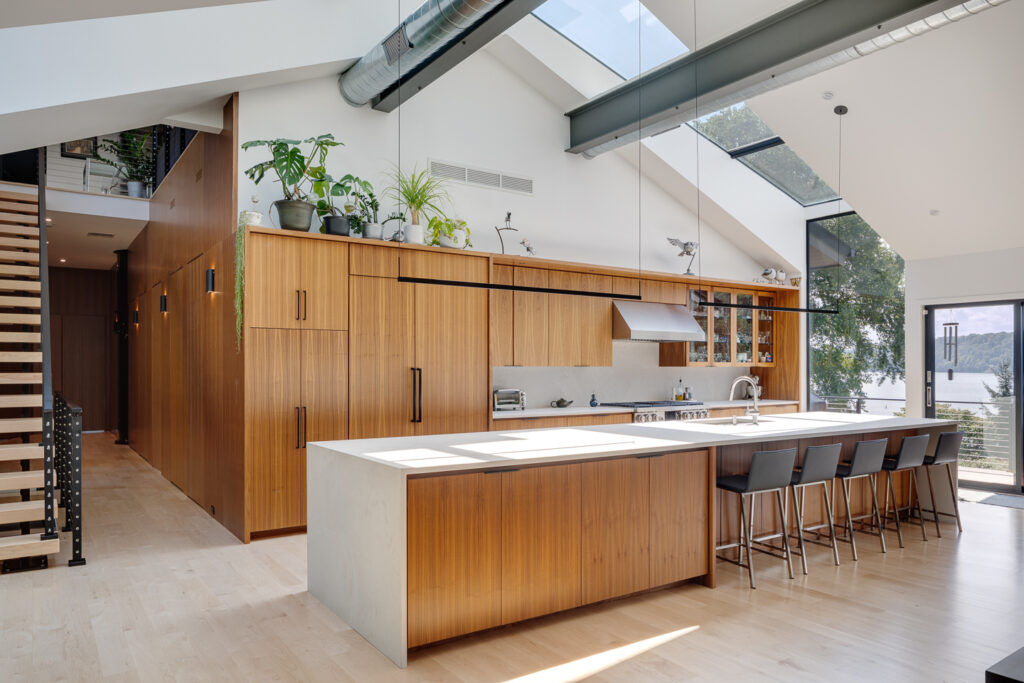
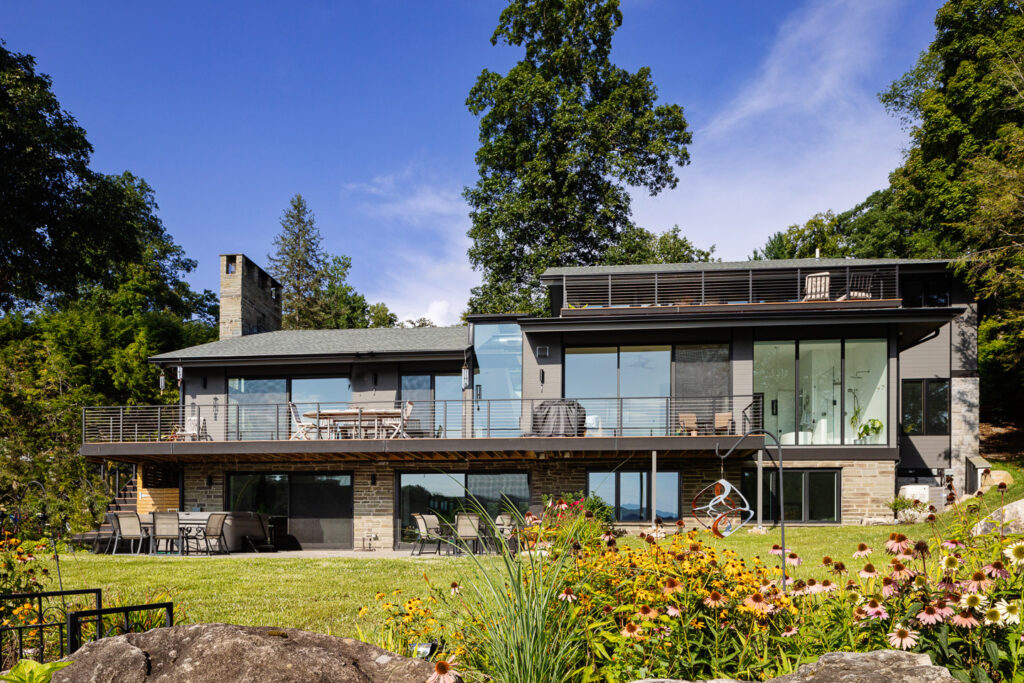
Lake Life
The existing home, built in the mid-20th century, was a modest self-contained gable structure, passively neutral to its spectacular surroundings and its privileged site. INTERSTICE Architects began from the premise that the home needed to be more than a house beside a lake—it needed to be a true expression of lakeside dwelling: it had to respond to its place in celebration of the rituals and daily experiences of New England lake life. Calling for an architecture that is in stronger dialogue with the exterior, the house needed to be more porous, yet protective, providing sweeping views both horizontally and vertically of its surroundings. From the upper canopy of the surrounding trees, down to the shoreline and the shimmering water below, the reimagined home engages the changing light, movement, and color of its setting.
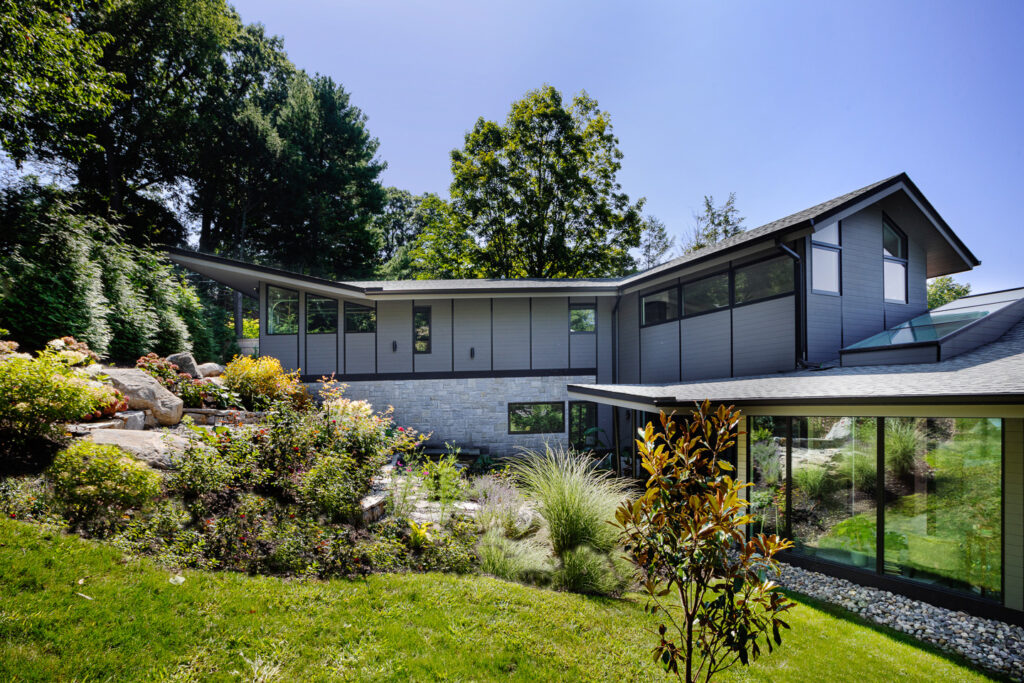
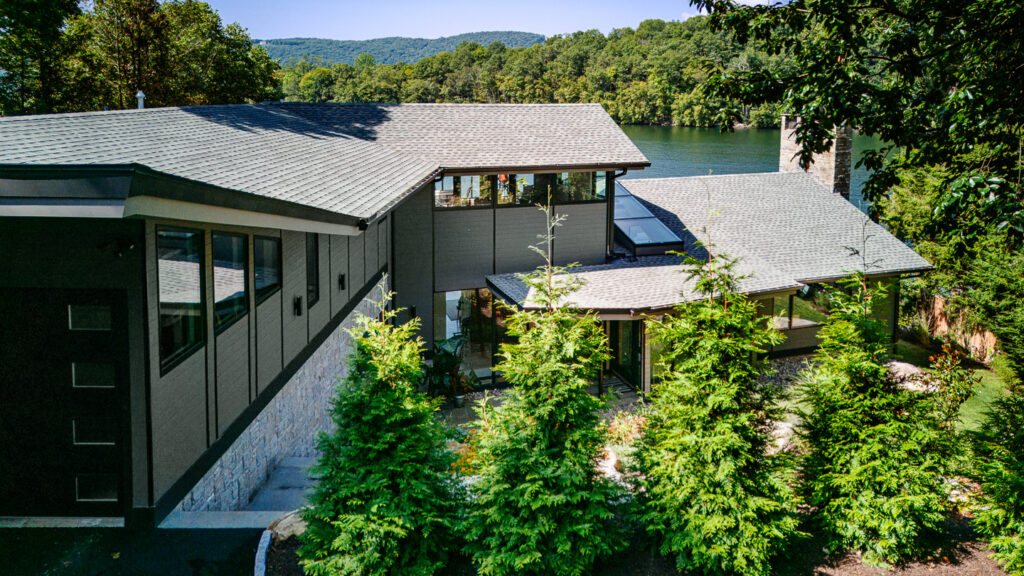
Exploring Ma
The layering and interweaving of space-time and becoming is best summed up in the Japanese spatial and temporal concept of ma. Guiding our design approach for the lake house spatial experience, this concept is demonstrated in the enfolding of interior space with the exterior world. The entry is where interior and exterior fuse and blur. This pivotal experience of the house orients the interior space and is a point of juxtaposition. A glass entry vestibule fans out from the main volume of the house, allowing the slope-side garden paving stones to flow seamlessly inwards at a slightly lower level than the main living spaces of the house. This gives the arrival experience a moment of pause and repose, between interior and exterior, before one steps up onto the warm hardwood floors of the home. Just within is the open stairway which occupies the transparent center of the home, an in-between space, that interconnects all three levels of the house, from office and studio lofts above, to the lower garden patio level facing the lake. The bright and social stairway allows light to penetrate deep into the structure.
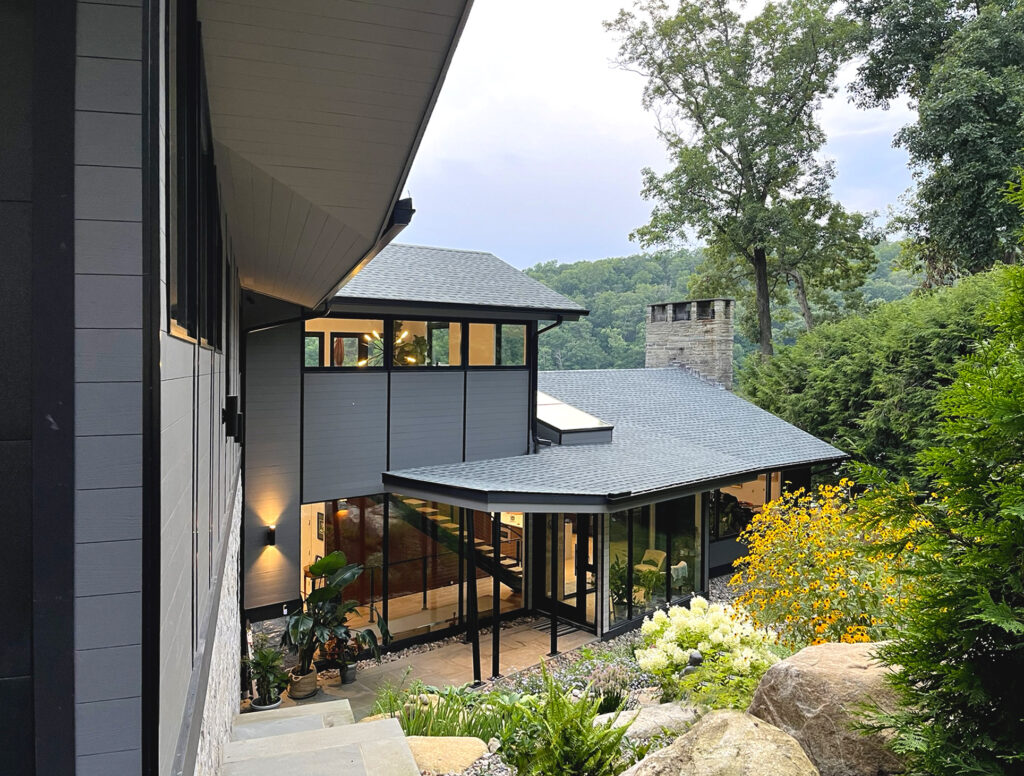
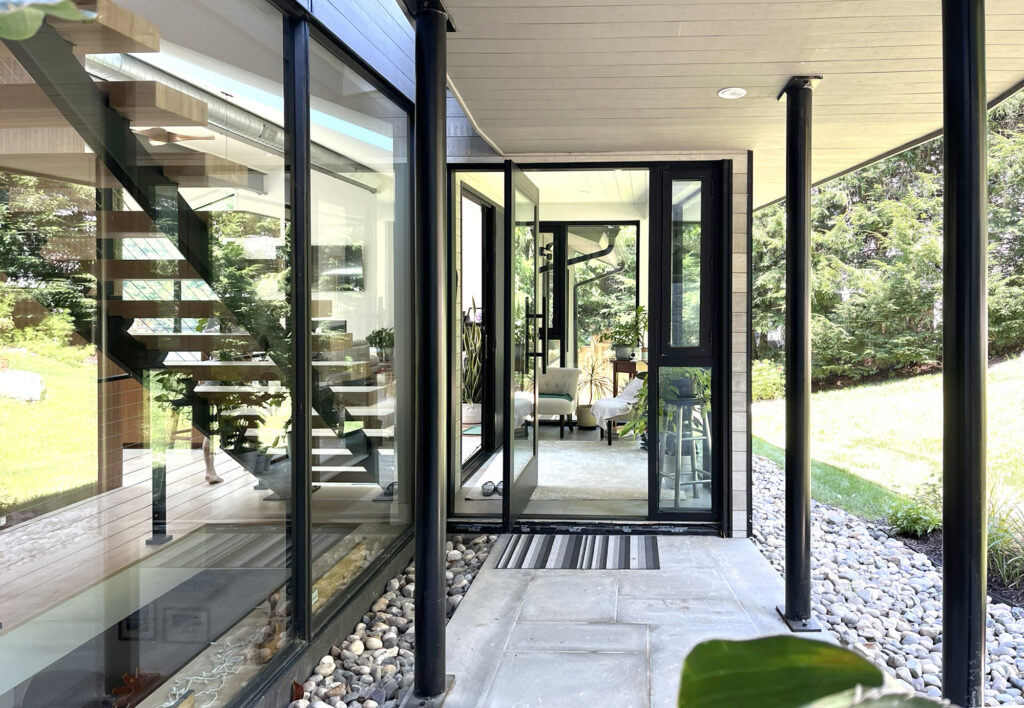
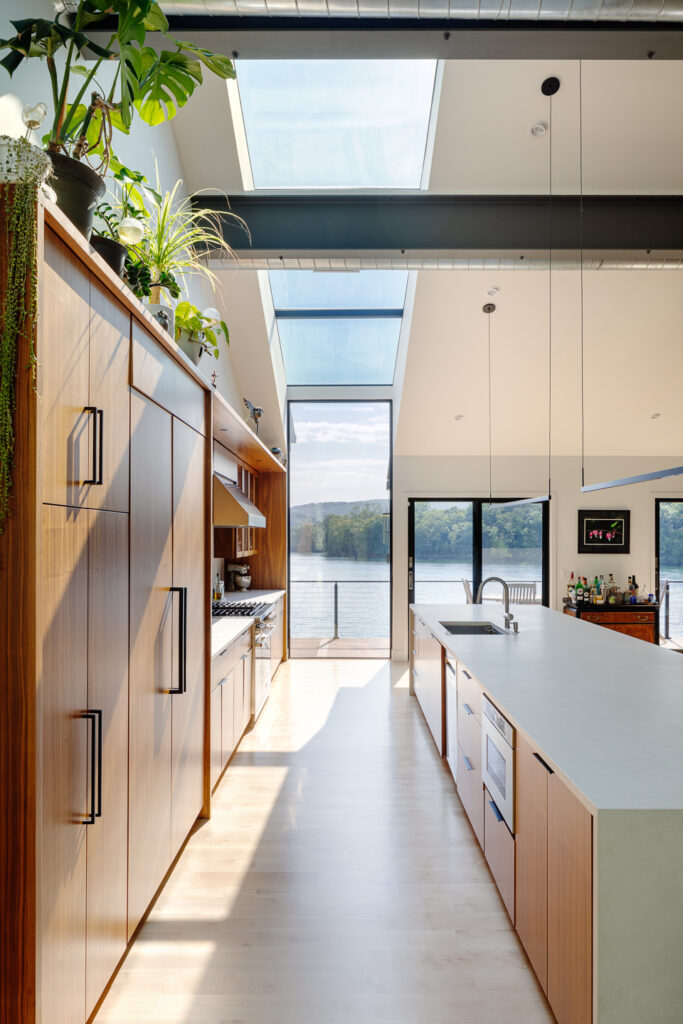
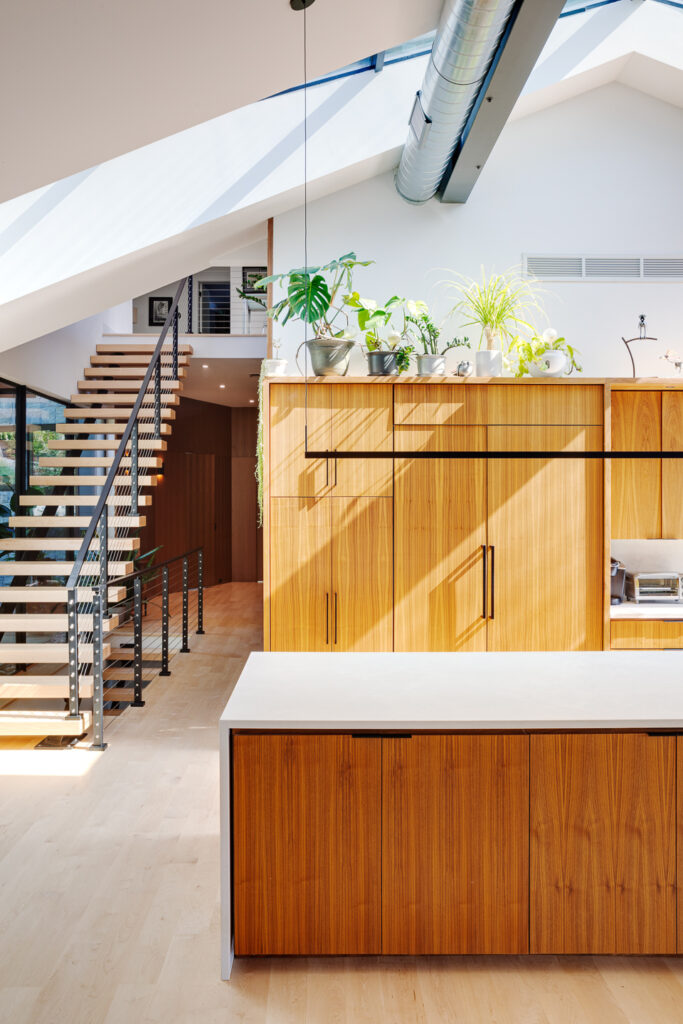
Lake and Sky
To “wake up and see only the lake and sky,” to always have a place to put everything away, and to experience the great reveal of the lake through the house, upon entry and “in every room,” were client aspirations expressed in the design brief. Walls that previously prevented the free flow of movement were removed, expanding spaces and merging volumes. New volumes are added to store vehicles, provide office space, and additional bedrooms, in a constant effort to reframe the lake and views to the forest landscape and garden. Roofs are lifted upwards in response to the slope, and the house is reconfigured so that volumes cascade down towards the shoreline. The main circulation is organized to be transparent to the landscape, allowing interior spaces to interact and connect along a central three-story space bathed in natural light.
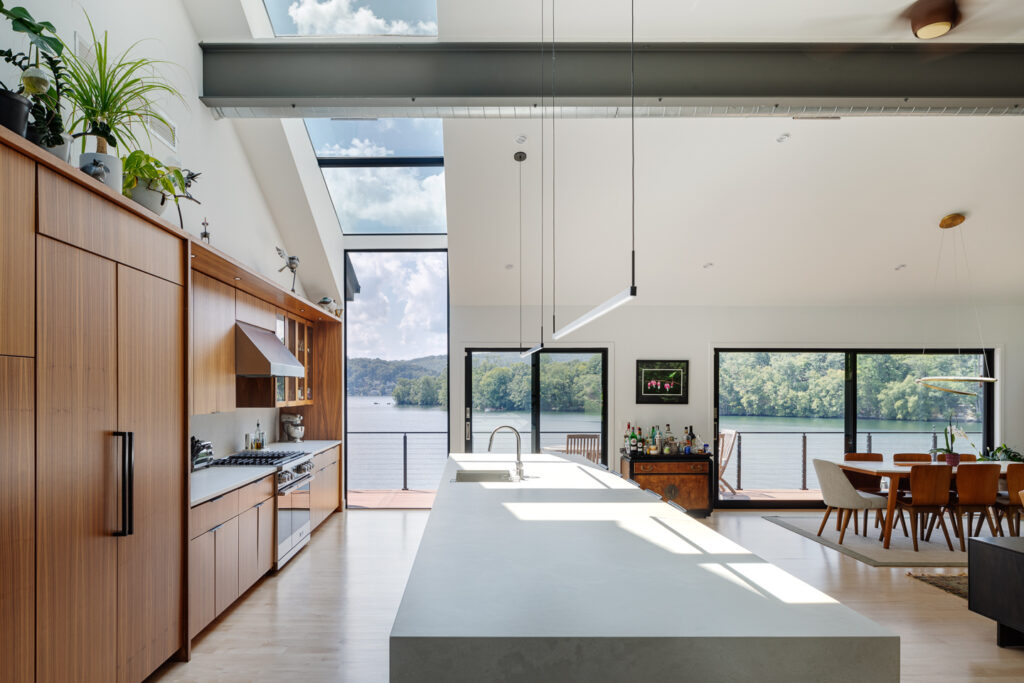
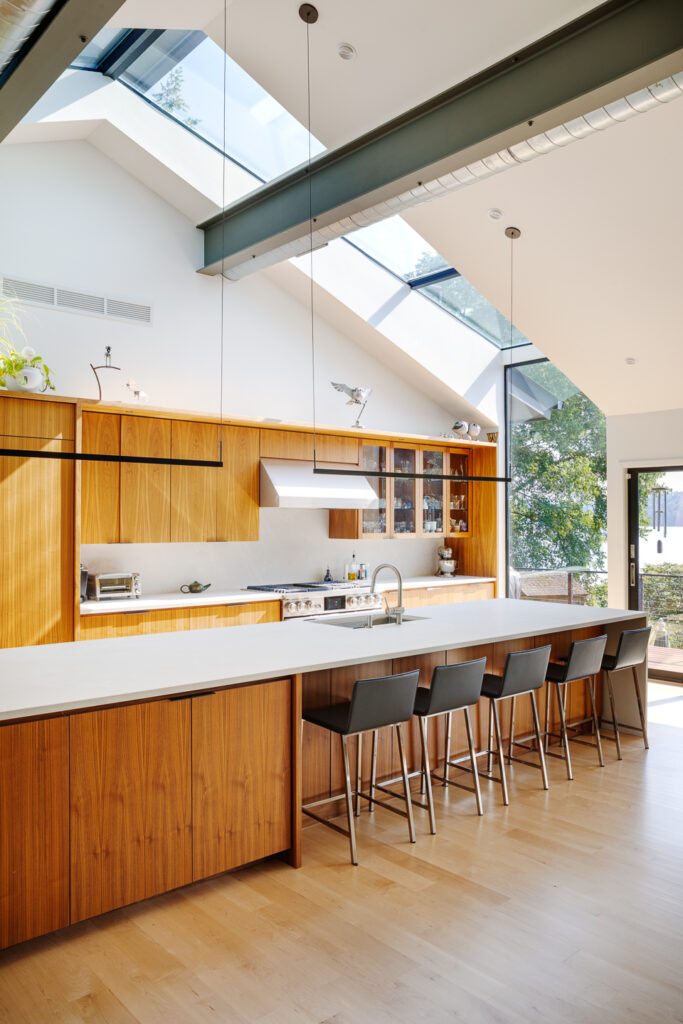
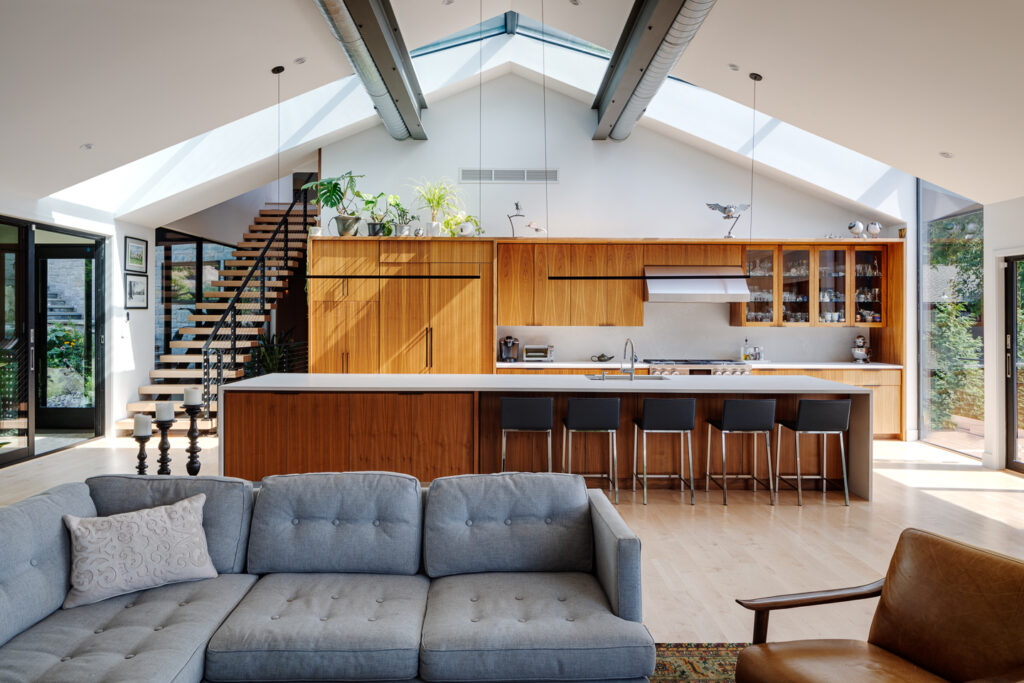
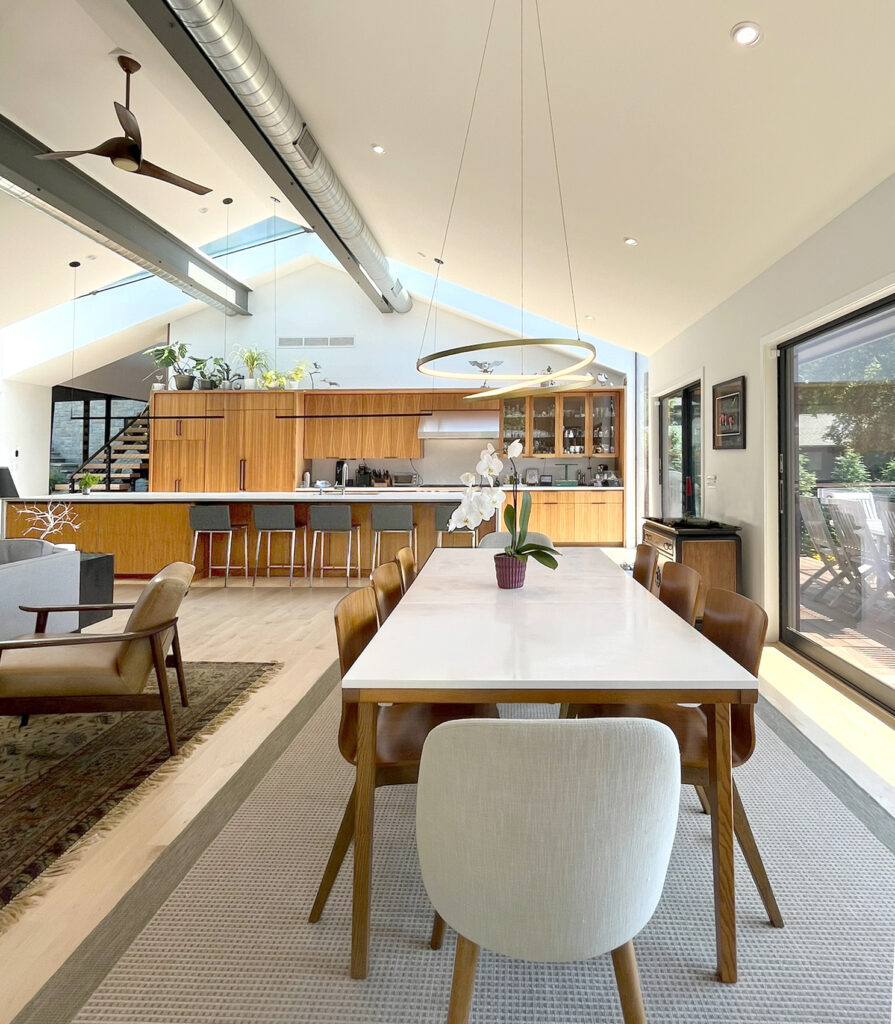
An Oasis Within
The master suite is designed to be an enclosed oasis within the house, a private sanctuary from guests at the heart of the home with ample closets, a private study, and a spacious bathroom. Glass and wood are used in floor to ceiling planes—a wall of glass facing southwest creates a uniquely intimate relationship with the lakefront and allows the bedroom sweeping views that descend to the lakeshore below, a year-round vista that changes seasonally.
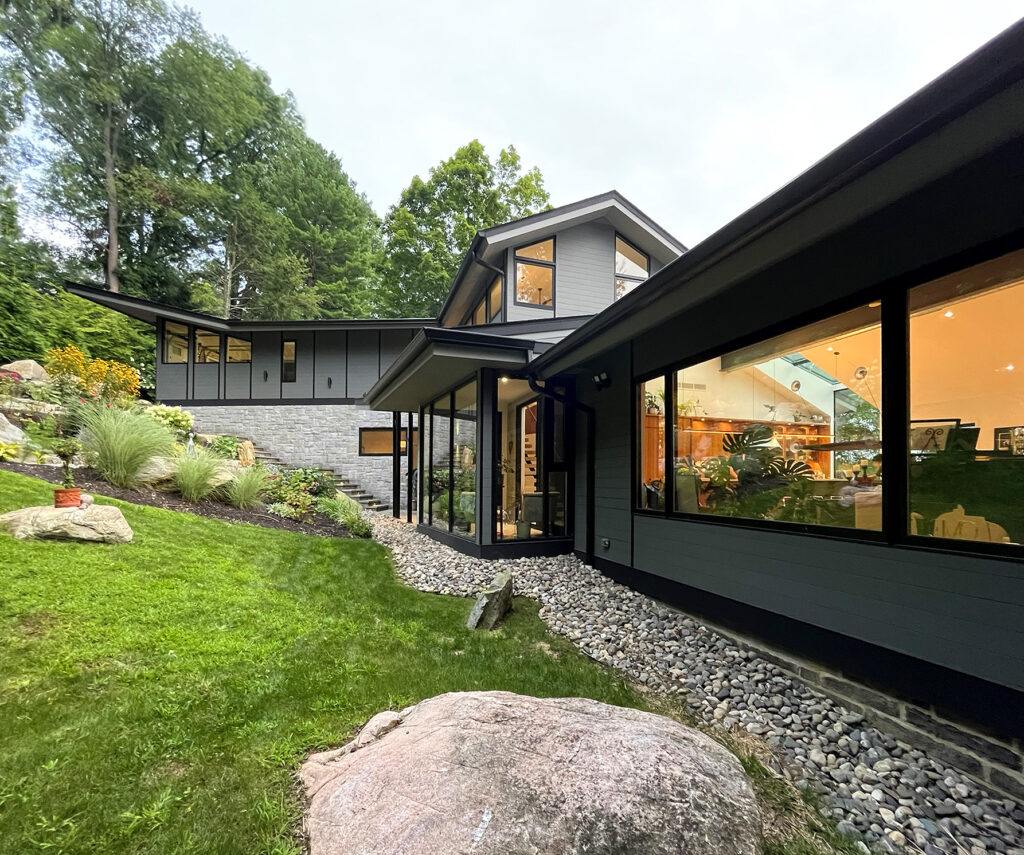
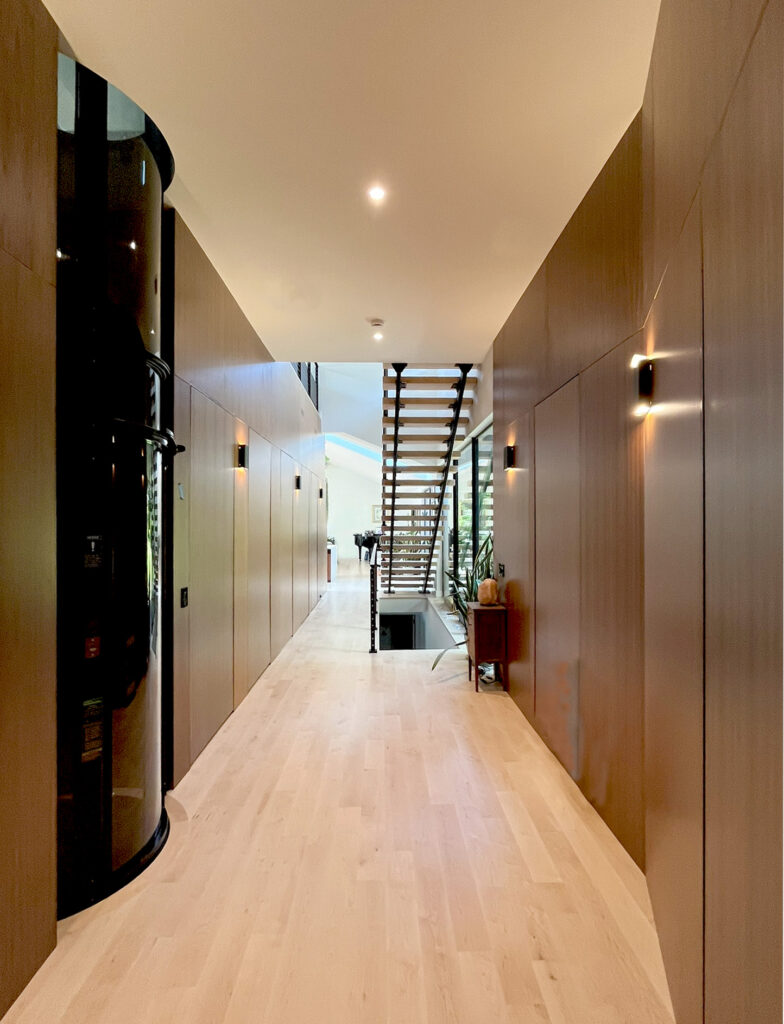
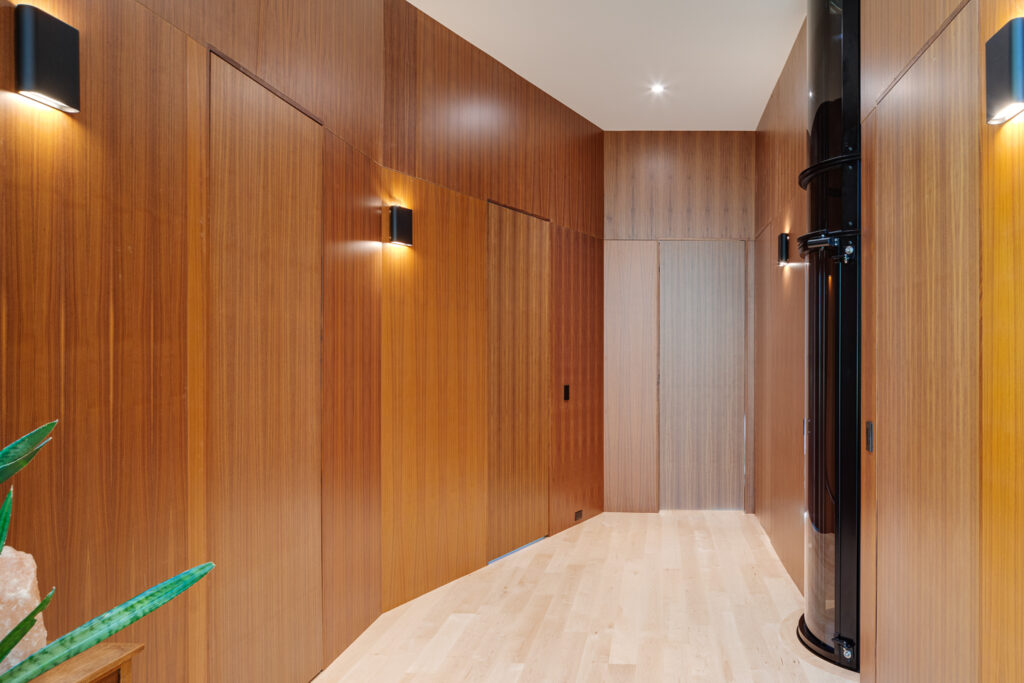
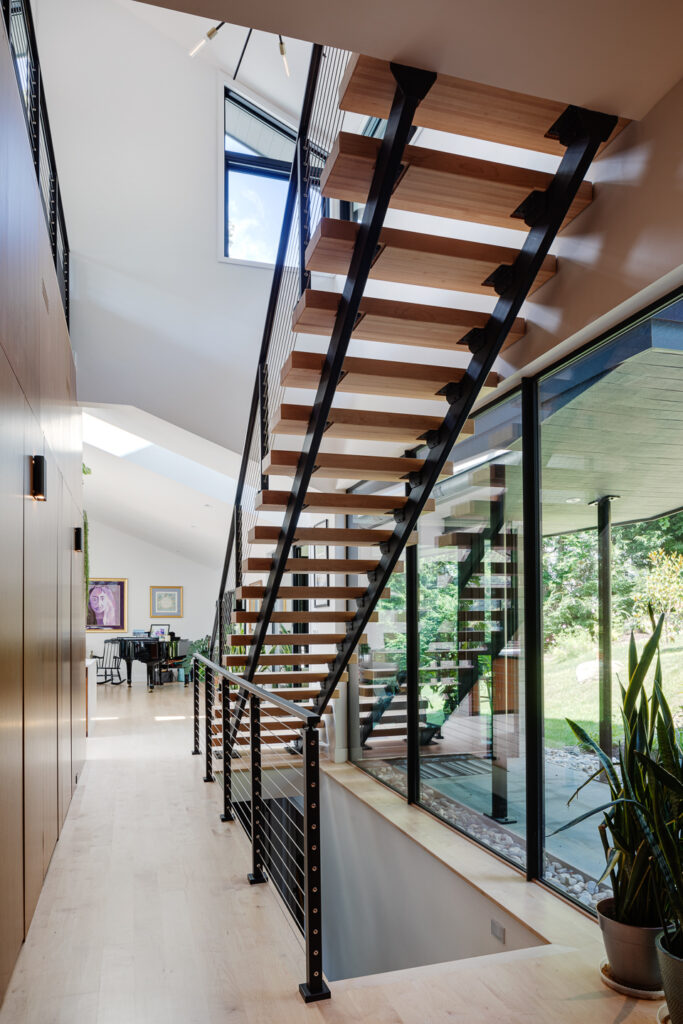
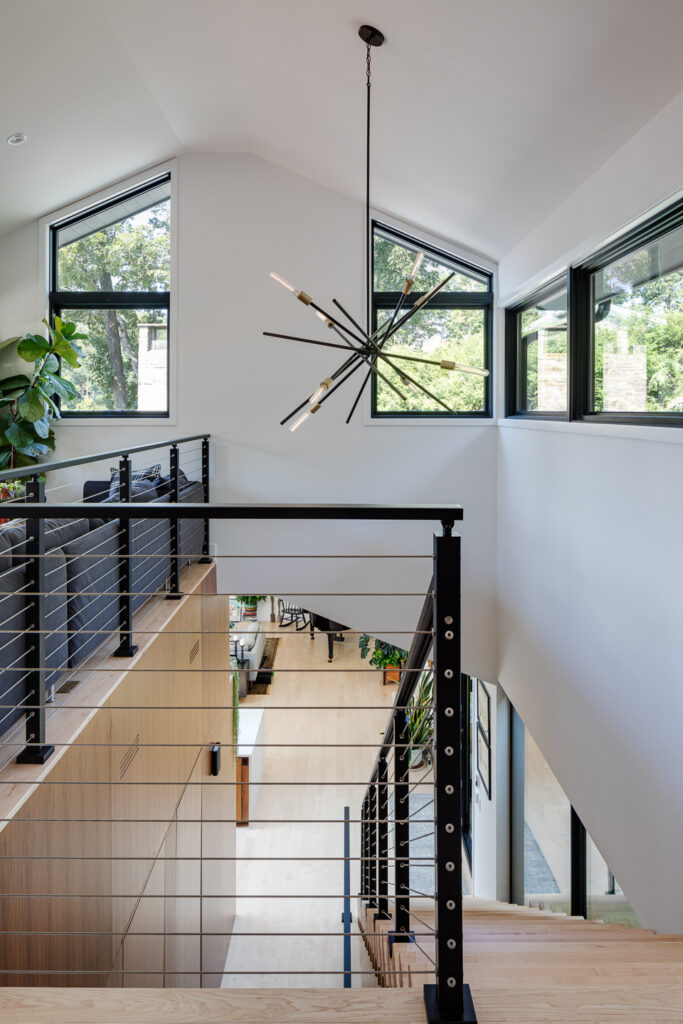
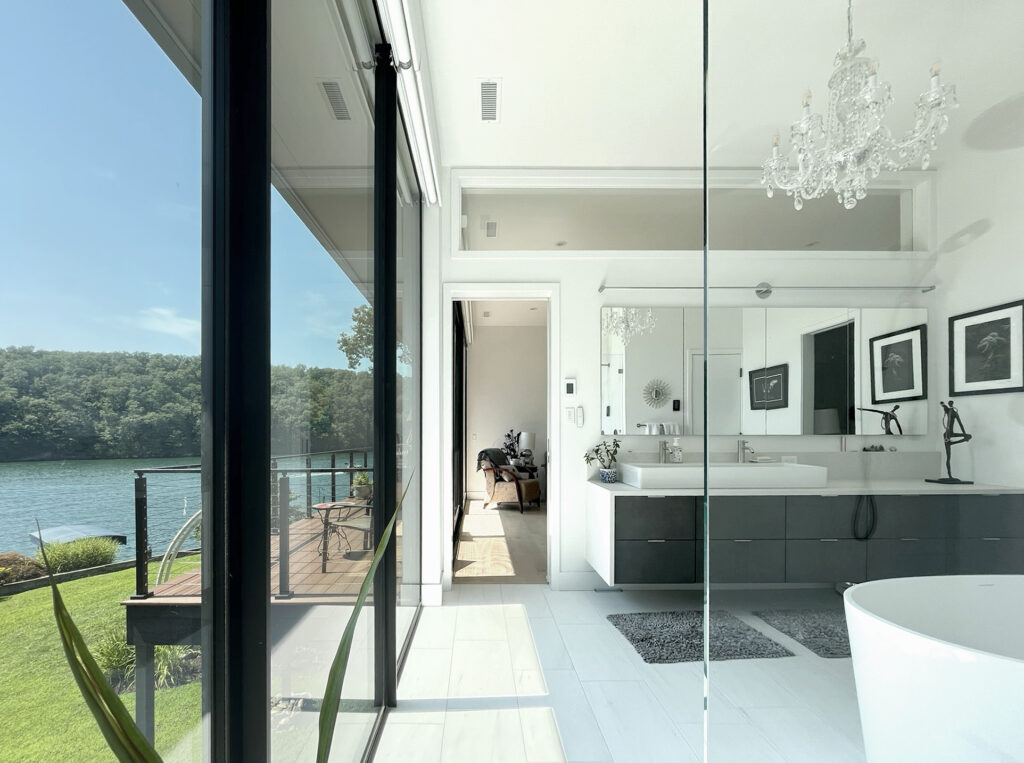
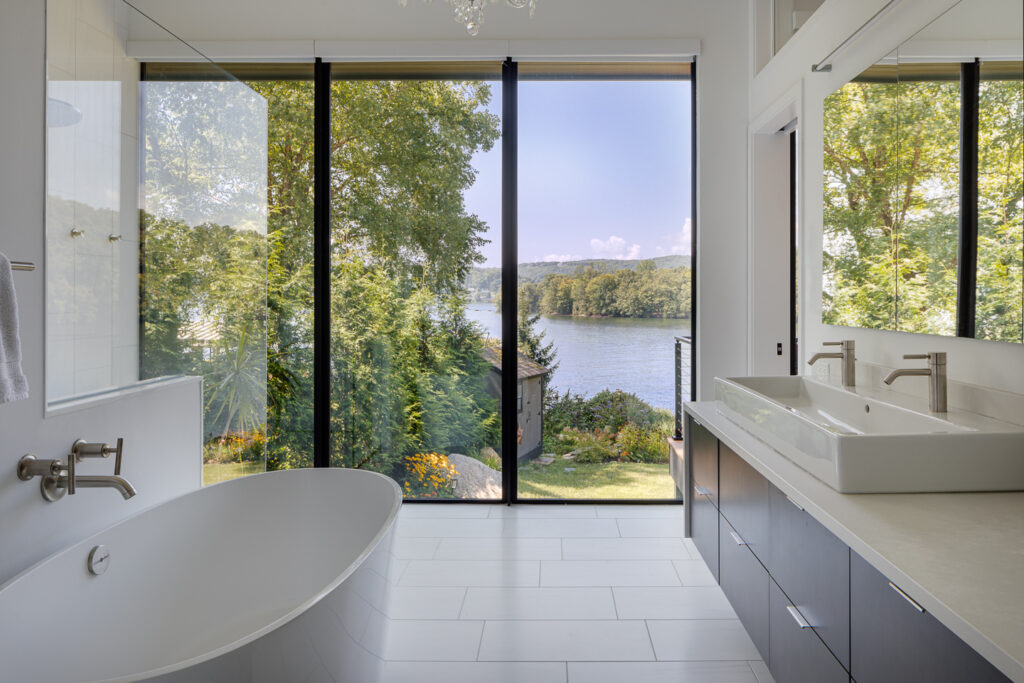
A Slice of Sky
A continuous ribbon of skylights unfurls from the entry vestibule over to the great room, across the open kitchen to descend toward the lakefront façade, two stories down to the lower patio. The slice of light provides a dramatic interior experience of the landscape, and the sun’s rays transect across these connected spaces. The great room, combining all social functions—cooking, dining, living—is unified by the clients’ extensive indoor greenery collection displayed and fostered within the new open and naturally-lit space.


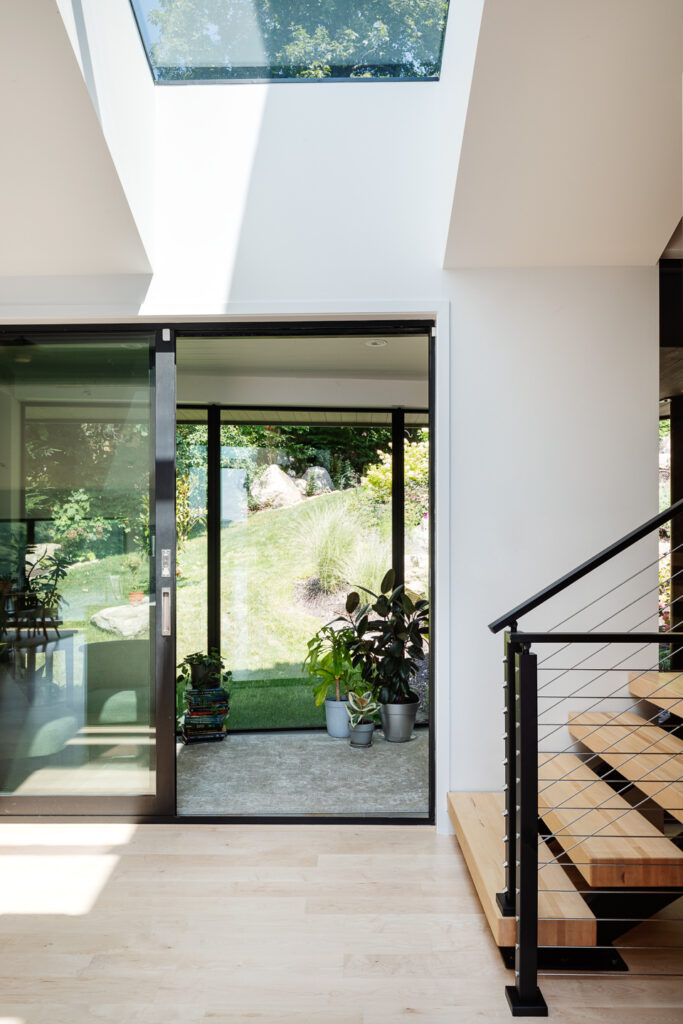
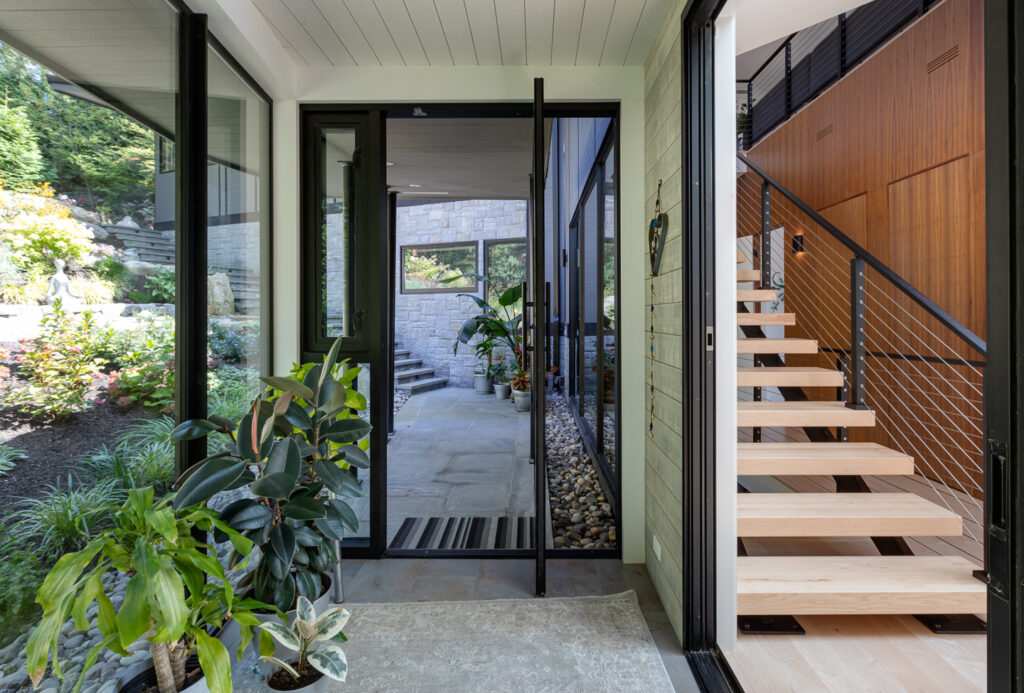
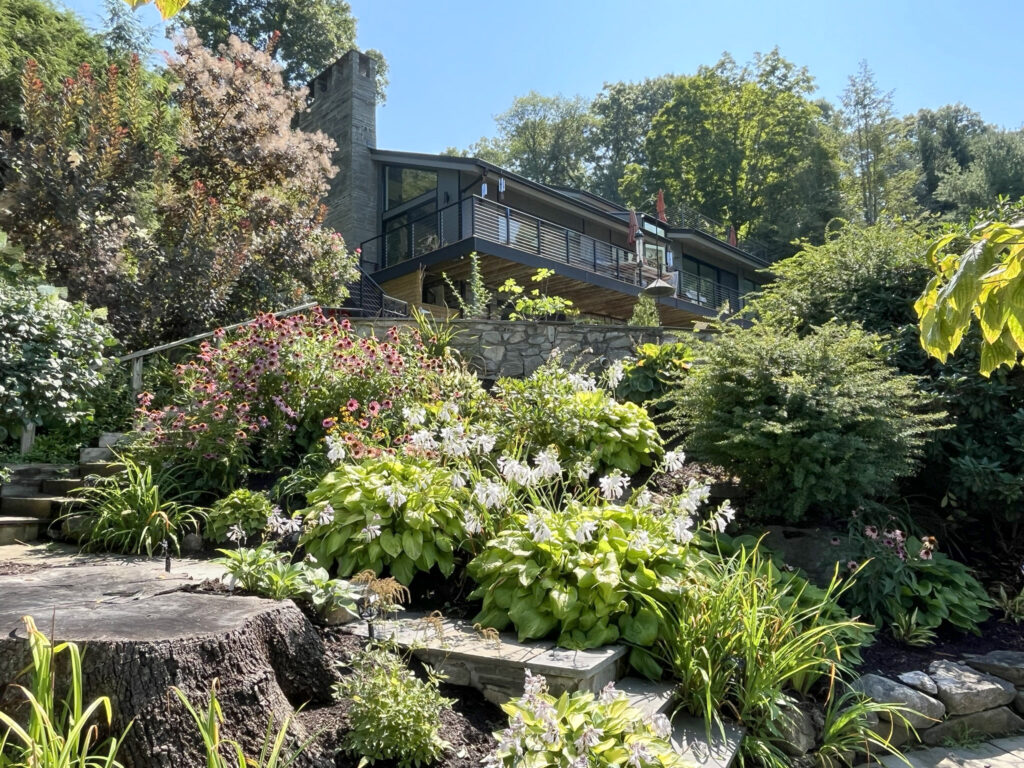
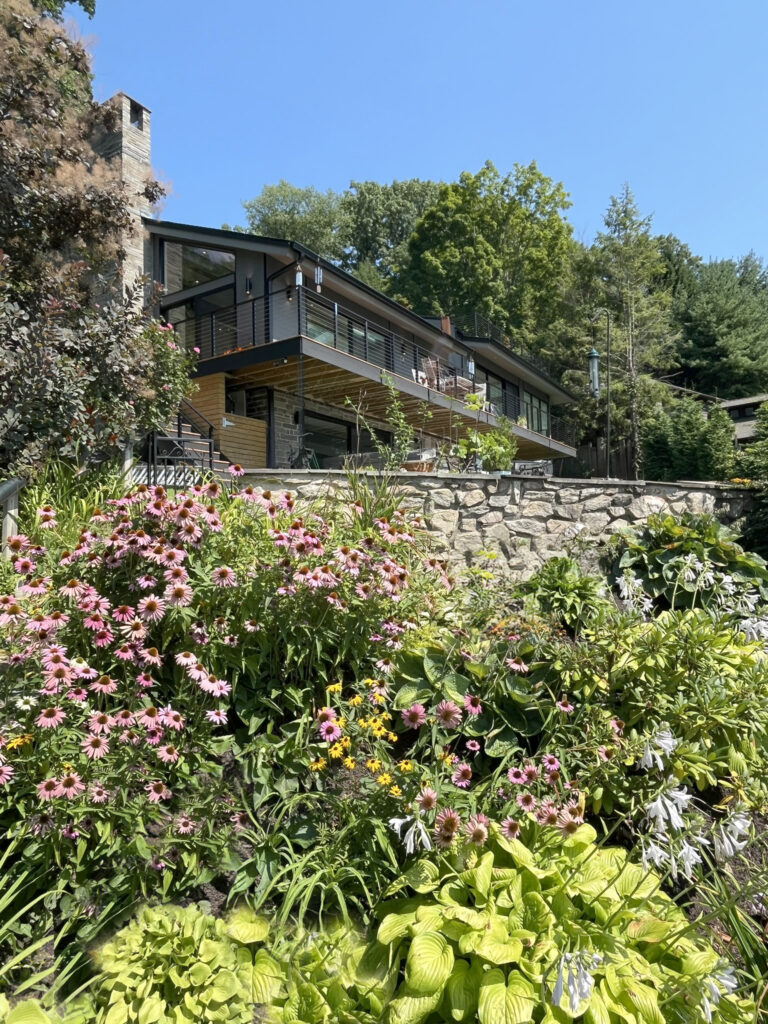
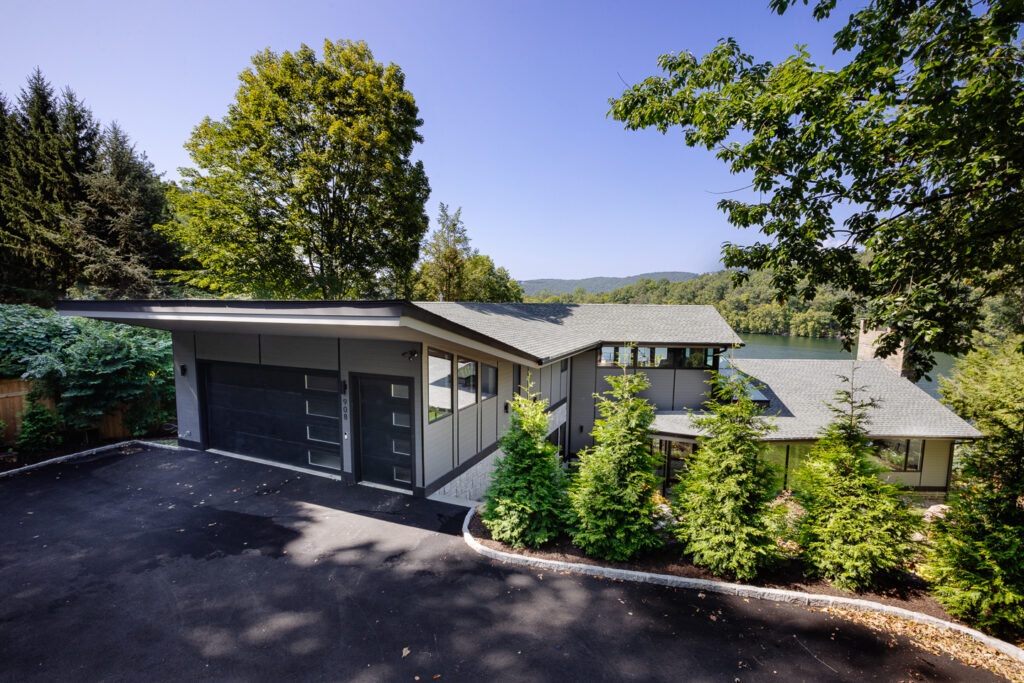

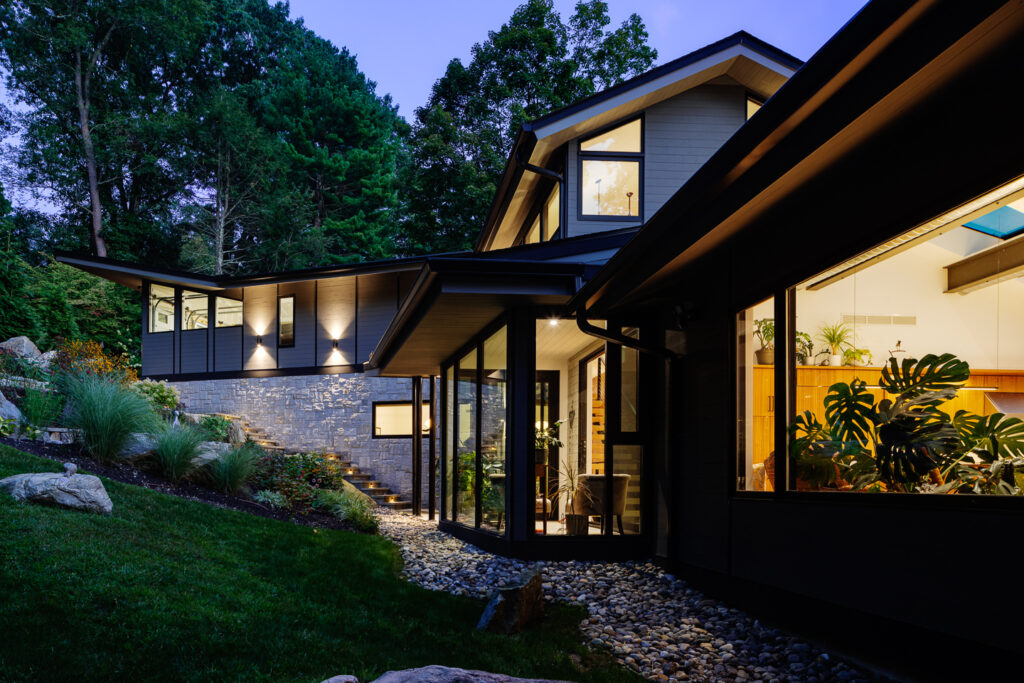
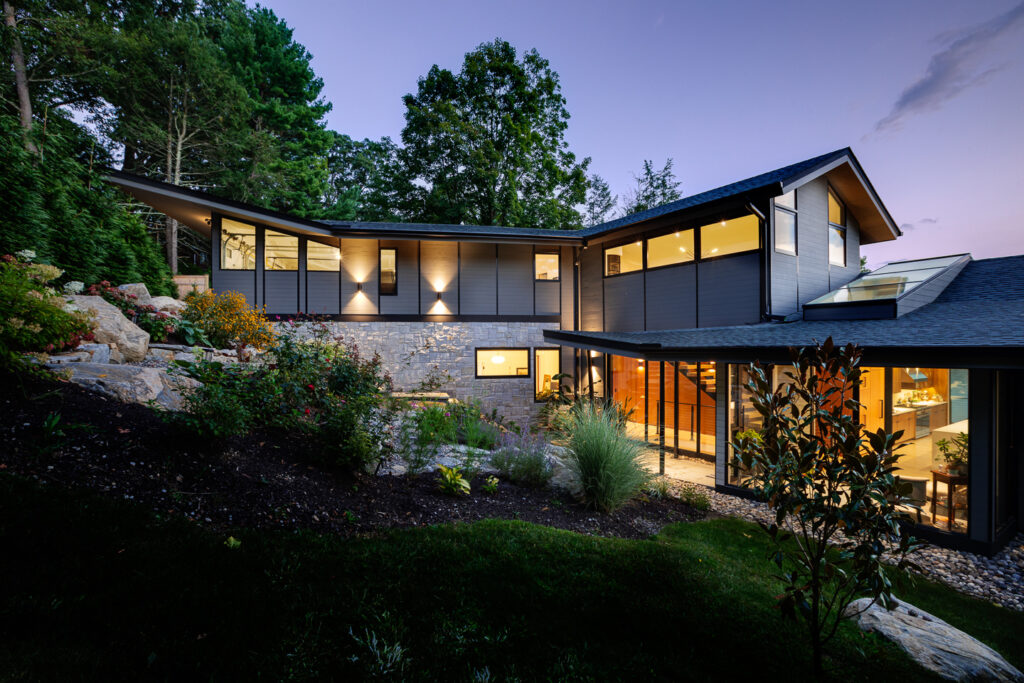
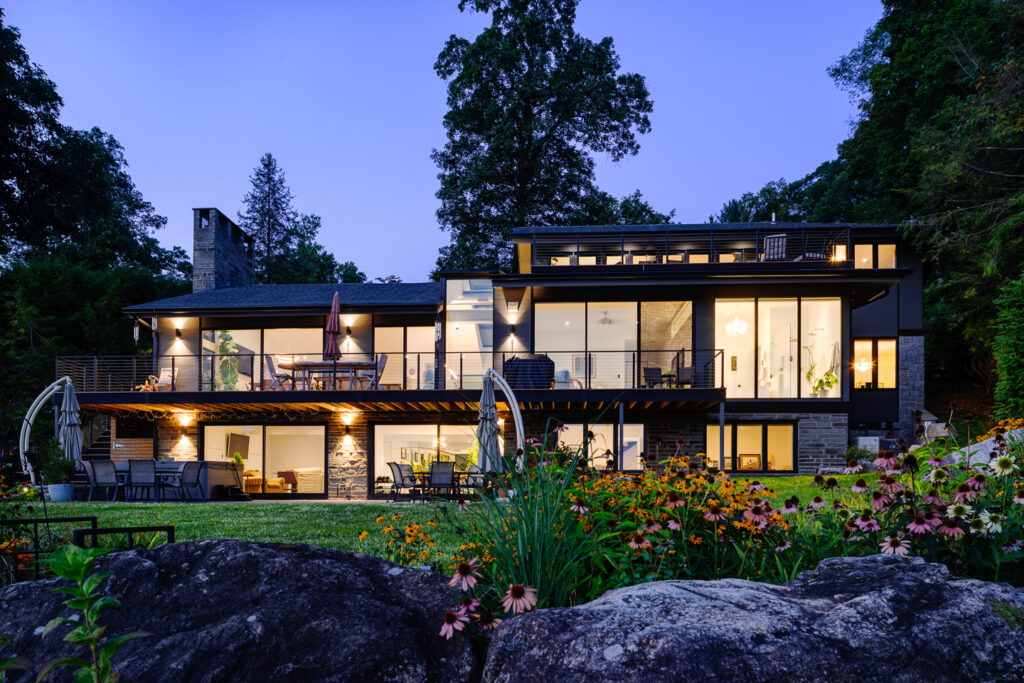
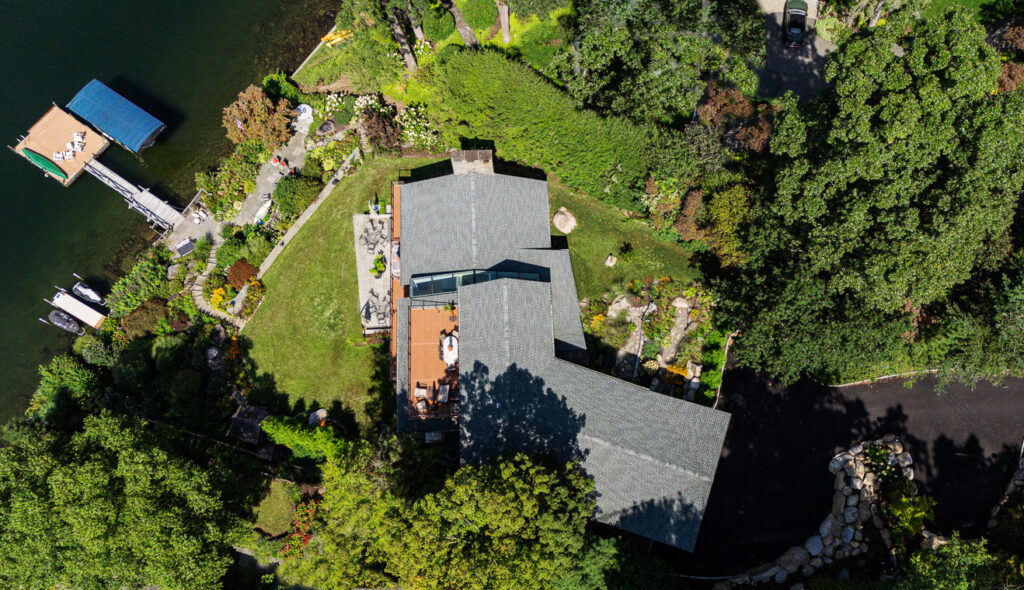
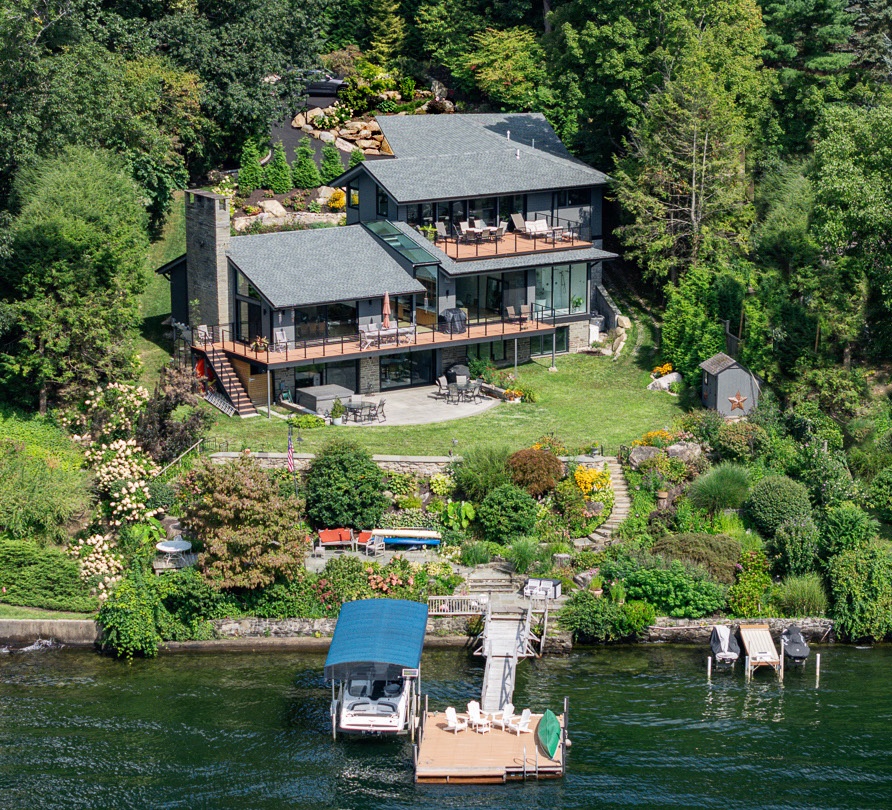
Location: New Milford, Connecticut
Owner/Client: Undisclosed
Scope: Residential Renovation
Status: In Progress
Photography: N/A
555 Larkin / 500 Turk
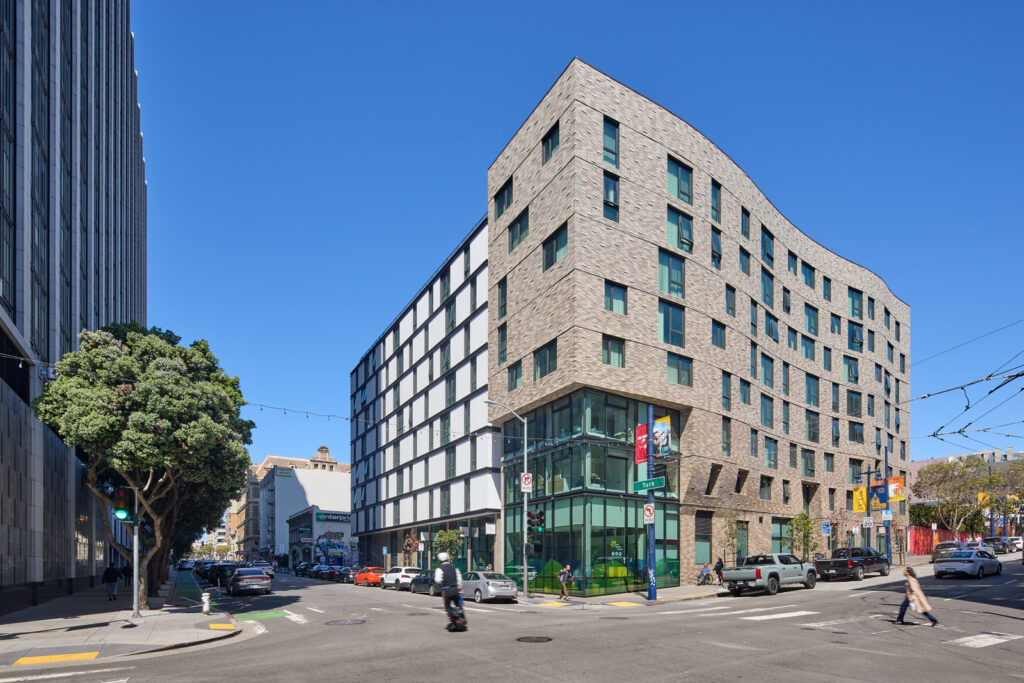
Honoring History through Revitalization
Located in the Tenderloin neighborhood of San Francisco, 555 Larkin/500 Turk Streets is a new mixed-use development comprising ground-floor retail space and 108 units of 100% affordable and supportive housing for formerly homeless residents, along with a shared courtyard, community room, and rooftop urban agriculture. INTERSTICE Architects is working with the Tenderloin Neighborhood Development Corporation (TNDC) to convert what was formerly Kahn and Keville automotive garage, a beloved Tenderloin business for over 100 years, into the lively, community-oriented development that will provide much-needed housing to this San Francisco neighborhood.
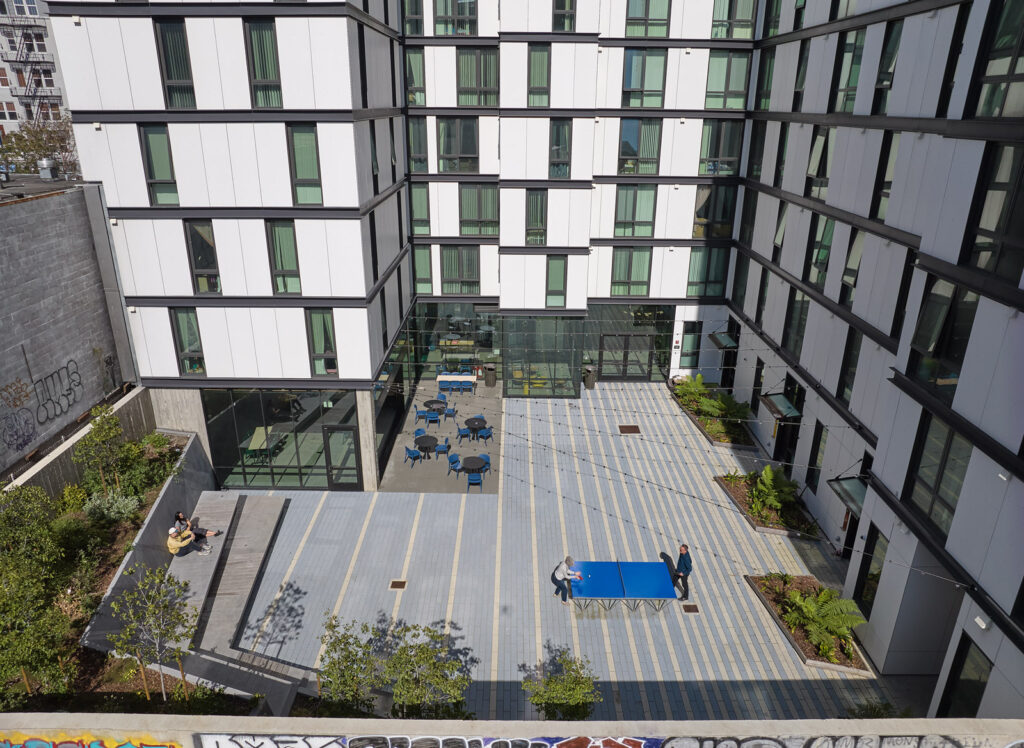
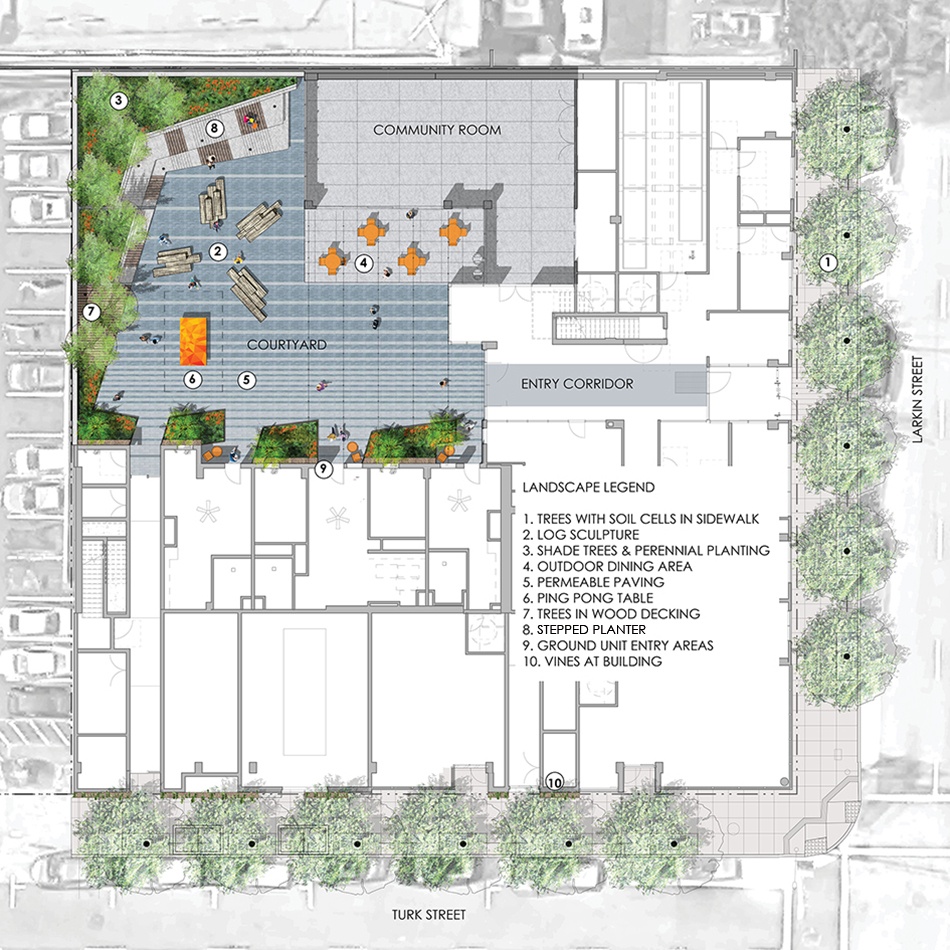
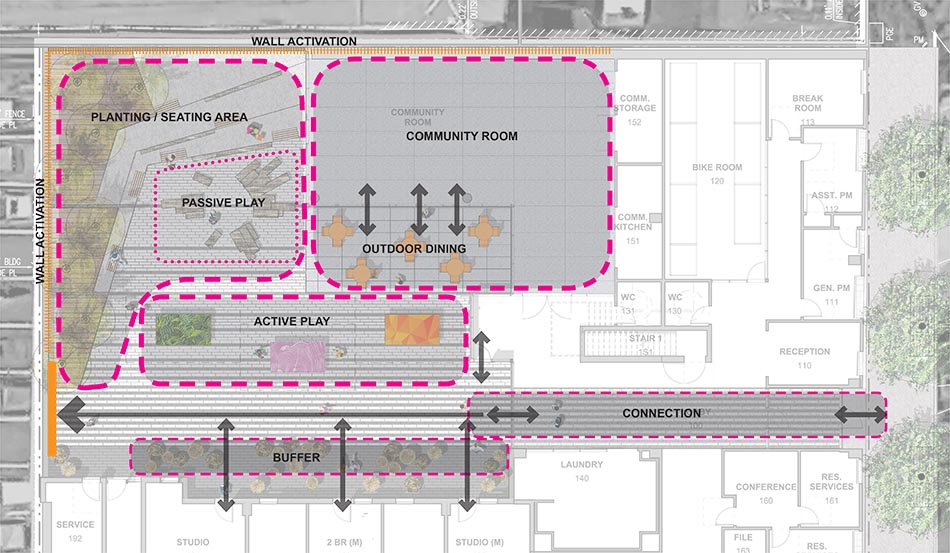
In the (Playful) Details
The courtyard landscape is at the heart of this project, acting as a place of relaxation, play, and community for the complex. INTERSTICE wanted to create a youthful space where those of all ages can enjoy a welcoming and playful environment. With close programmatic connections to the surrounding neighborhood, the ground and street level is designed to serve the community and contribute to environmental resiliency through the use of permeable paving throughout the courtyard and a soil support system in the sidewalks to improve the viability of the urban forest. A brightly-colored ping-pong table sits beneath overhead festoon lighting adjacent to the community room where residents can gather and socialize. Wooden sculptures meant for passive and imaginative engagement are situated in a loose circle, acting as a focal point for the courtyard. The terraced planter wraps around this centerpiece and provides wood-clad seating beneath the canopy of adjacent birch trees and ferns. INTERSTICE designed a banded textural paving pattern underfoot that extends from the planters at one edge of the courtyard to the foyer and to the ground-level studio apartments. These ground-floor apartments feature small planted garden spaces, providing a sense of private oasis at the residents’ front doors. The courtyard wall, meant to provide privacy and security from the neighboring Phoenix Hotel and surrounding buildings, is designed with vertical board form texture, reflective inserts, lighting, and quotes to create an activated and engaging perimeter.
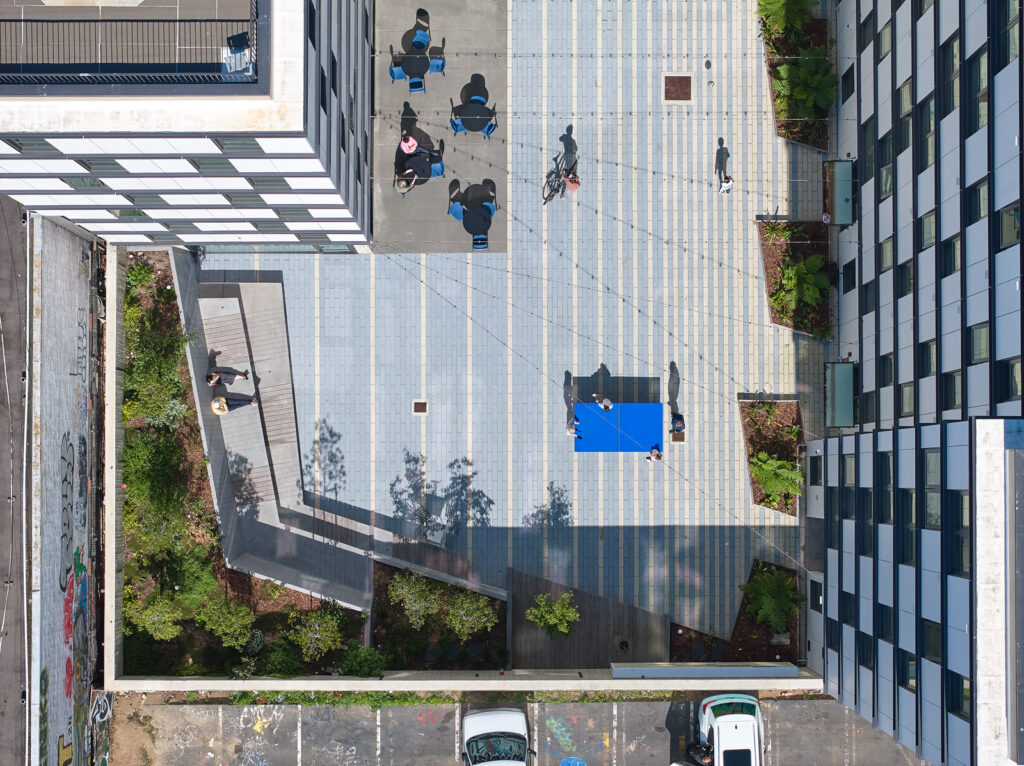
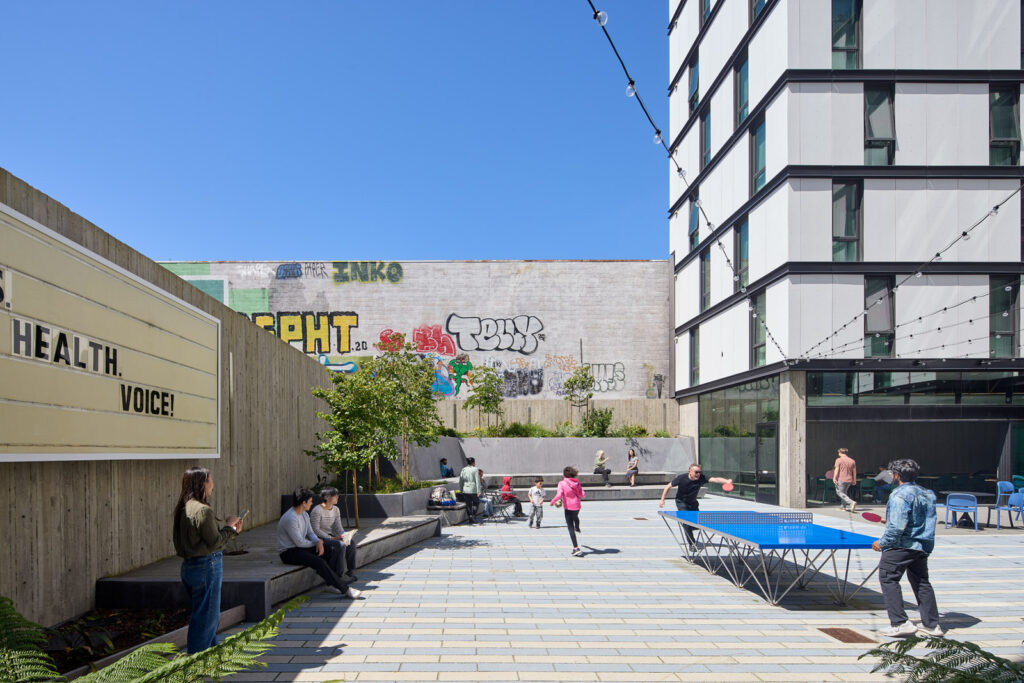
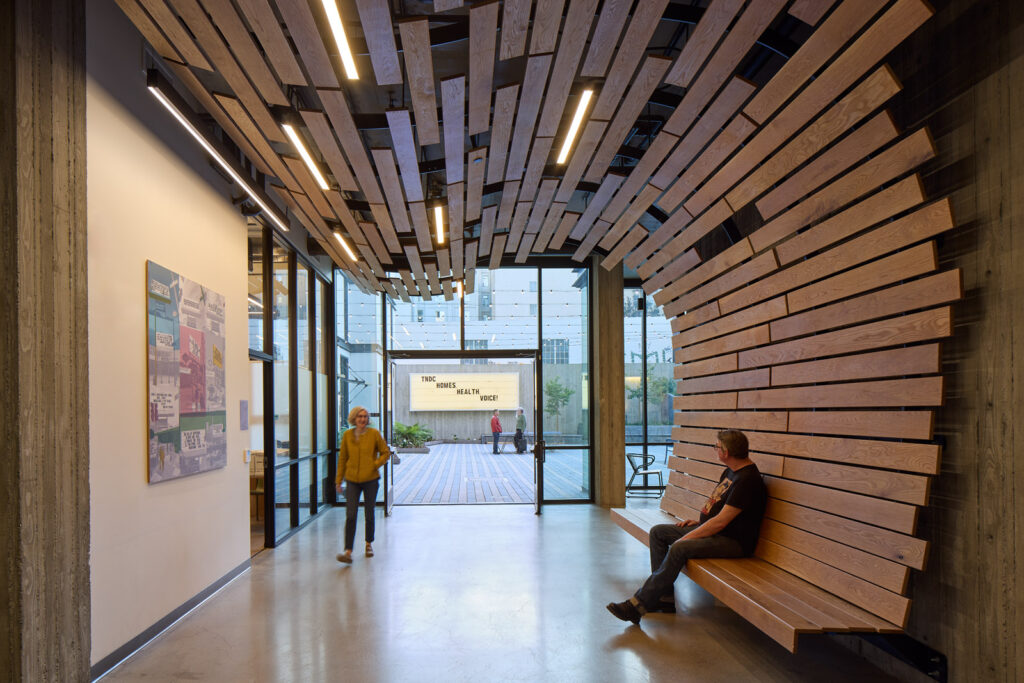
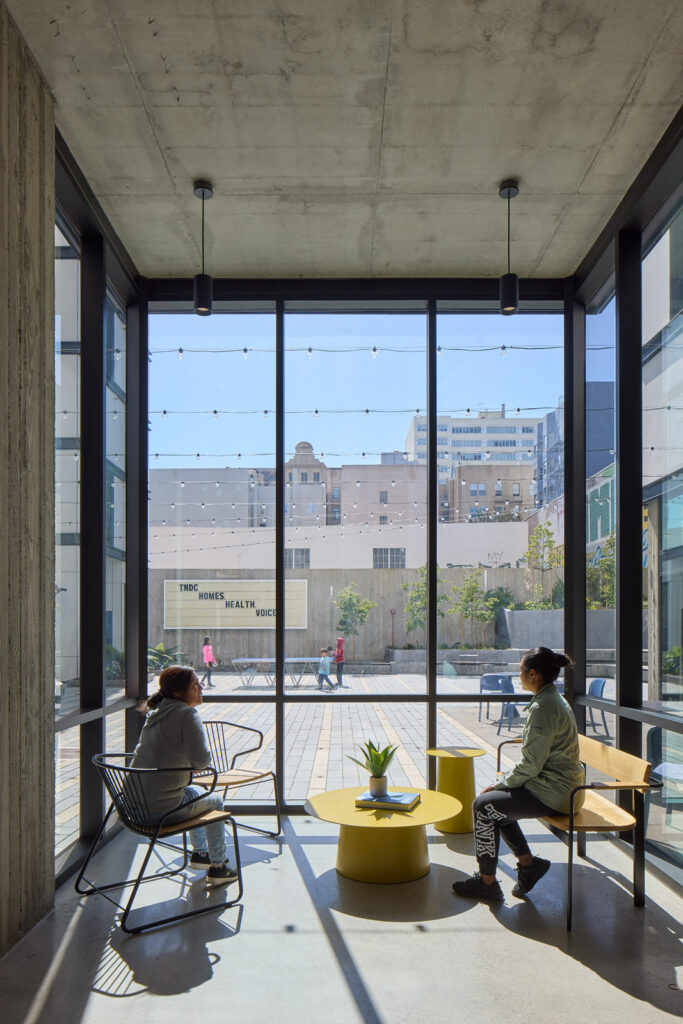
A Beloved Billboard Reimagined
Kahn and Keville automotive garage was established in 1912 on Golden Gate Avenue—not far from 555 Larkin/500 Turk where it moved 23 years later. In 1956, the now famous letter board sign was erected at the corner of Turk and Larkin Streets as a way to amplify what had once been written on simple pen and paper inside the garage: quotes, poems, and observations soon appeared in bold, black letters above the intersection. The sign became a fixture in the Tenderloin neighborhood and the design team has integrated it into the new project. The sign can be seen from the front entry reception on Larkin and upon entry to the courtyard. Visitors and residents will continue to experience and honor the genius and history of its presence on this particular city block.
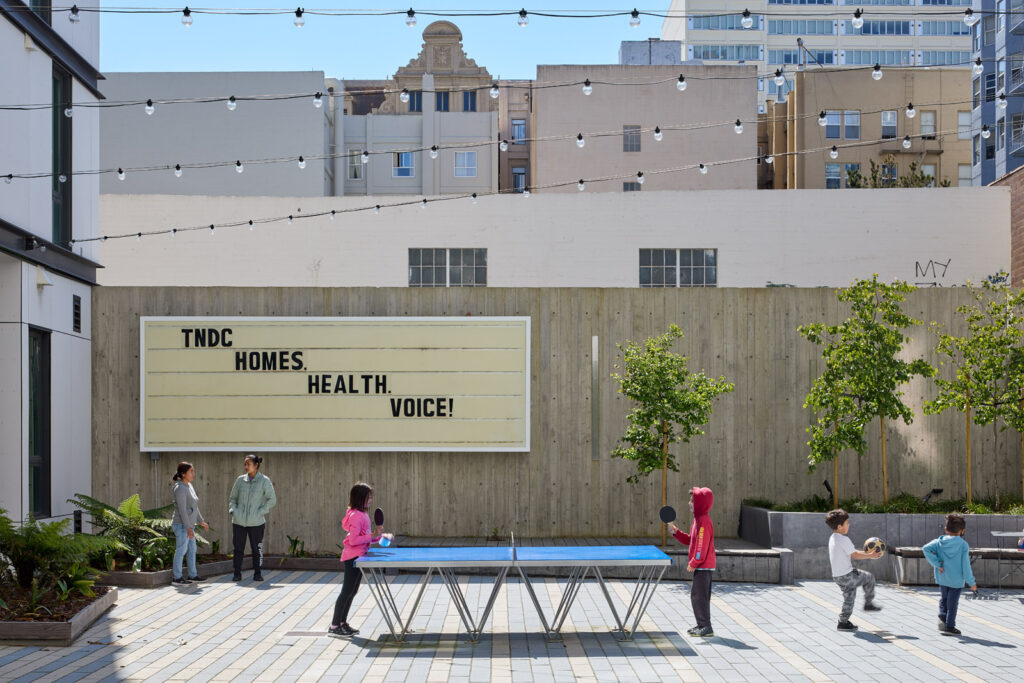
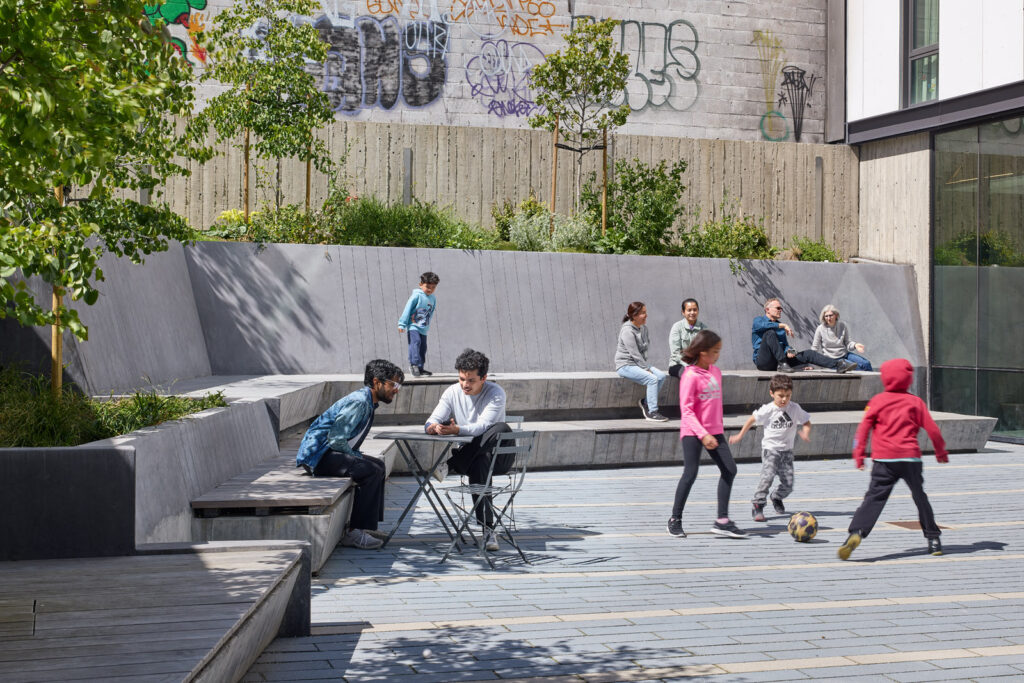
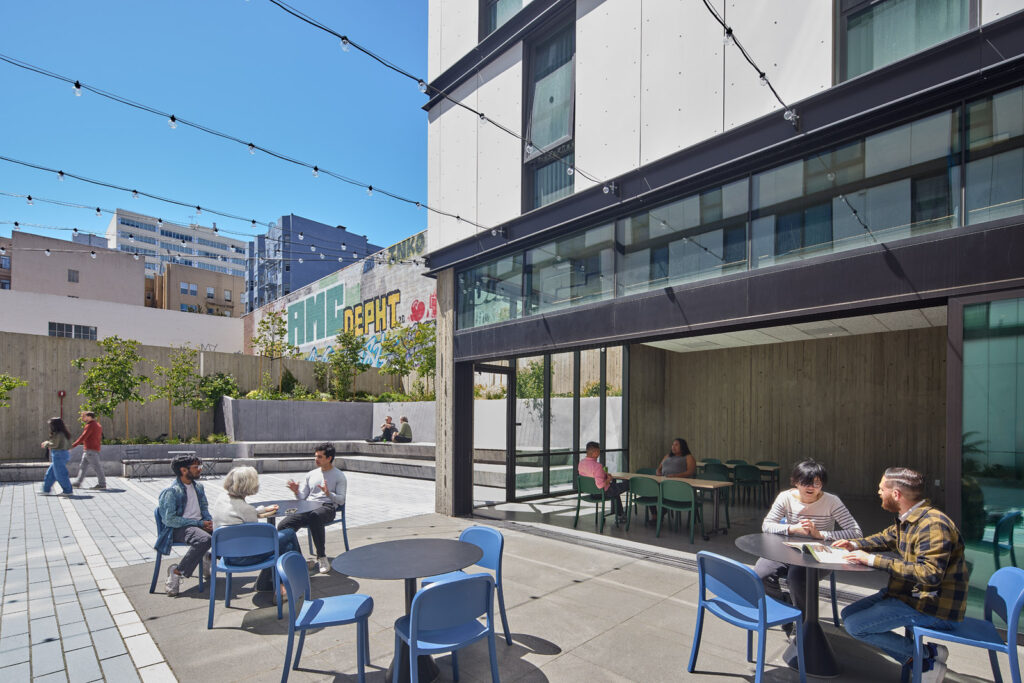
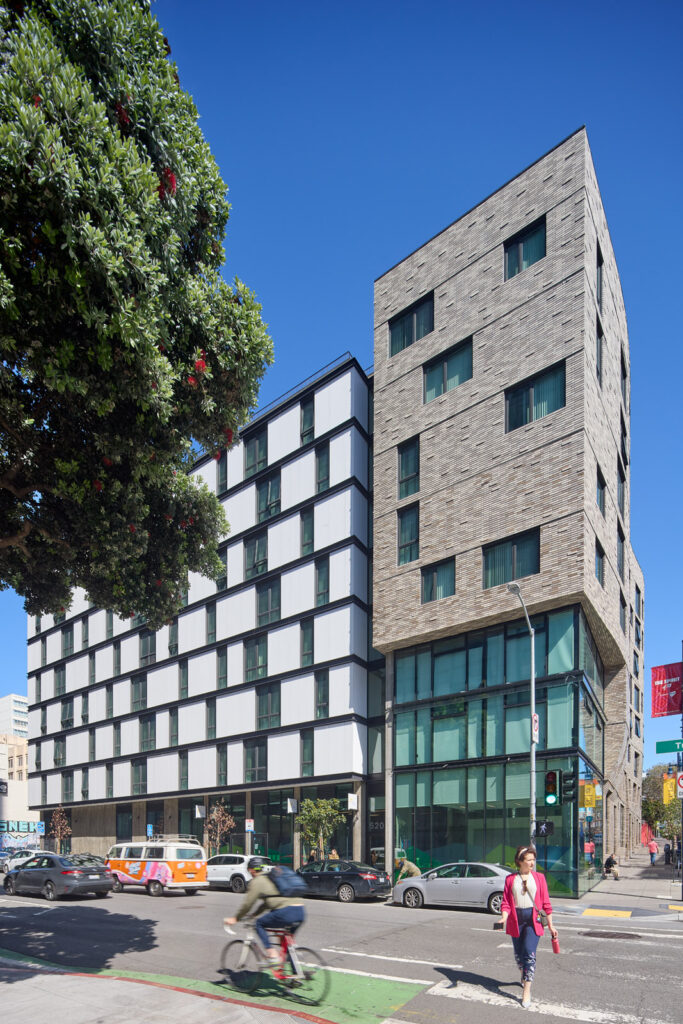
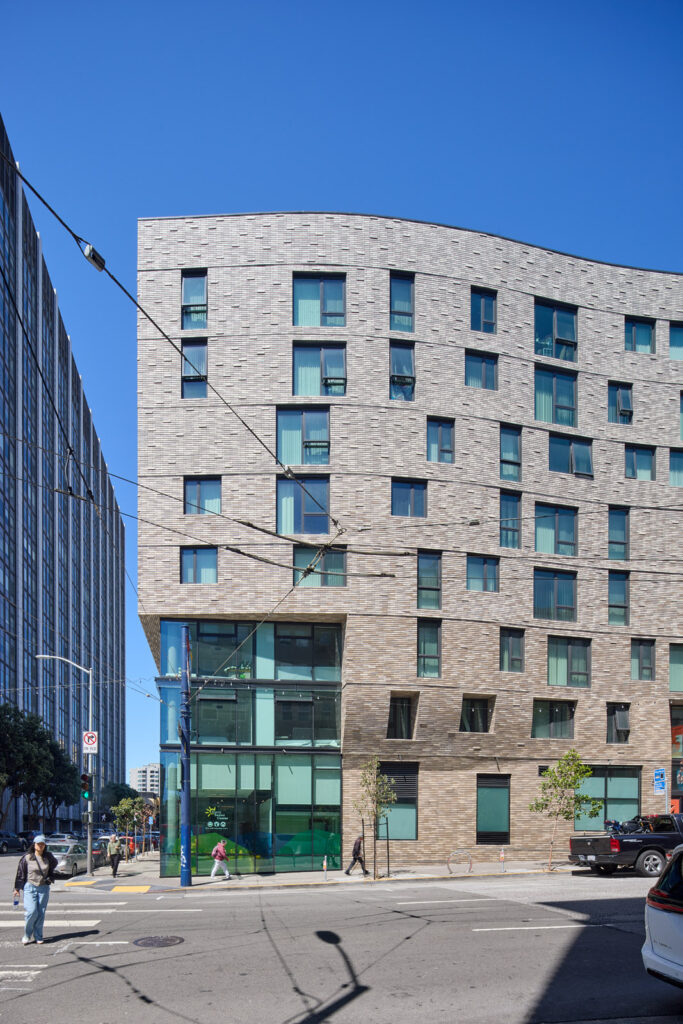
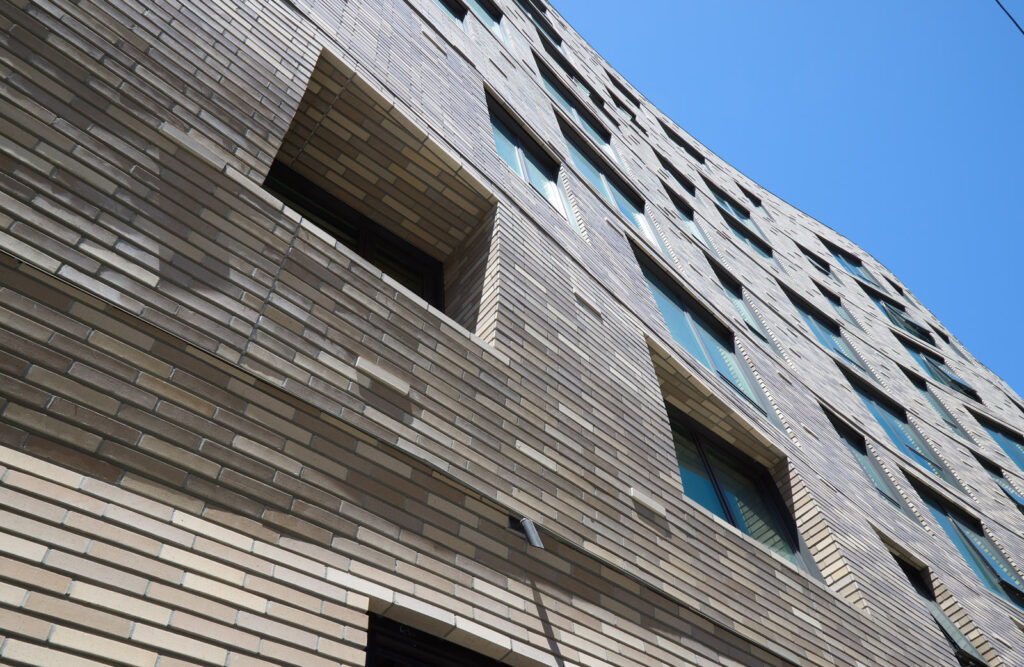
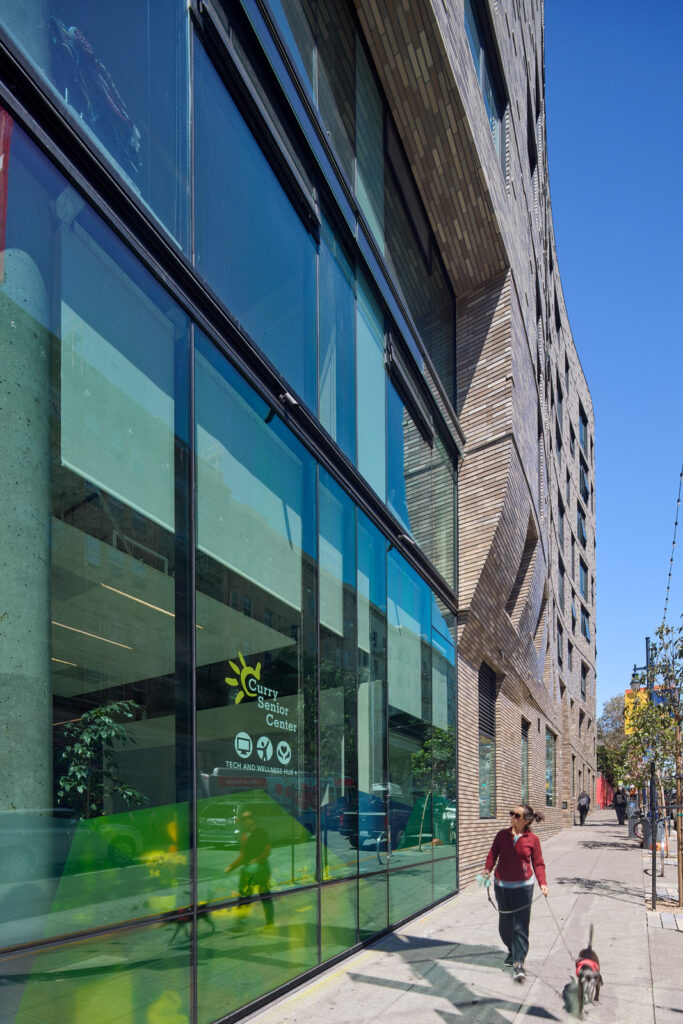
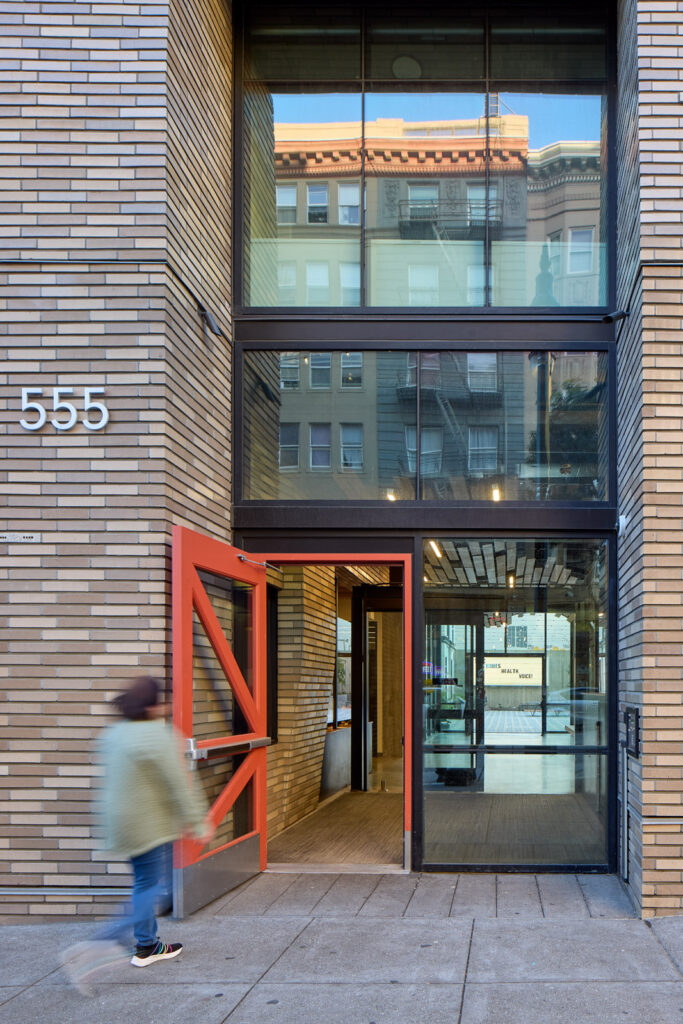
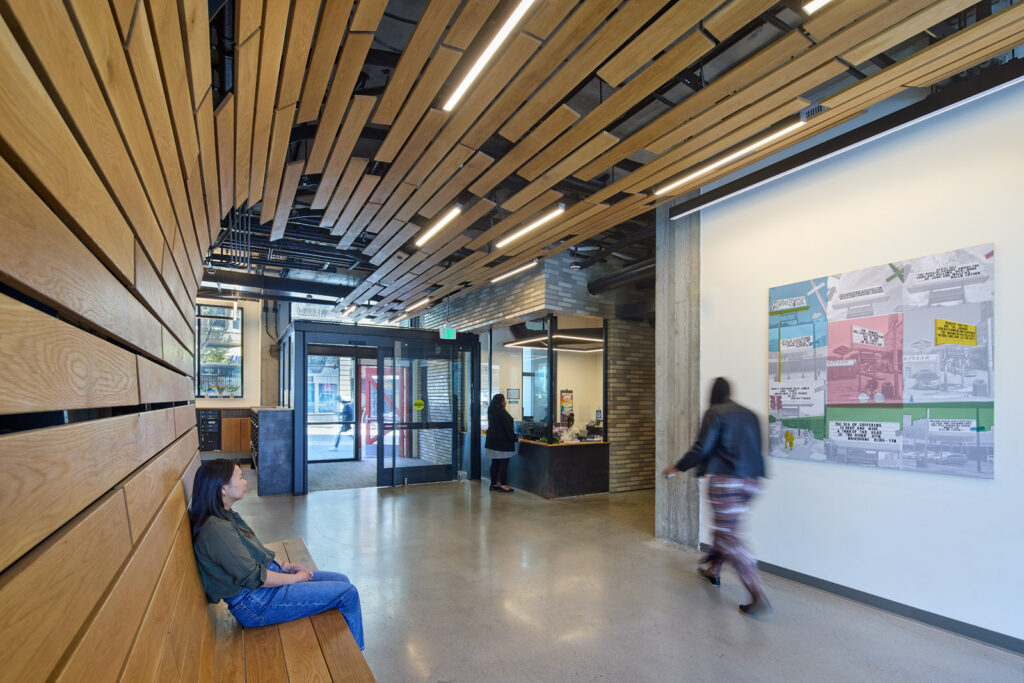
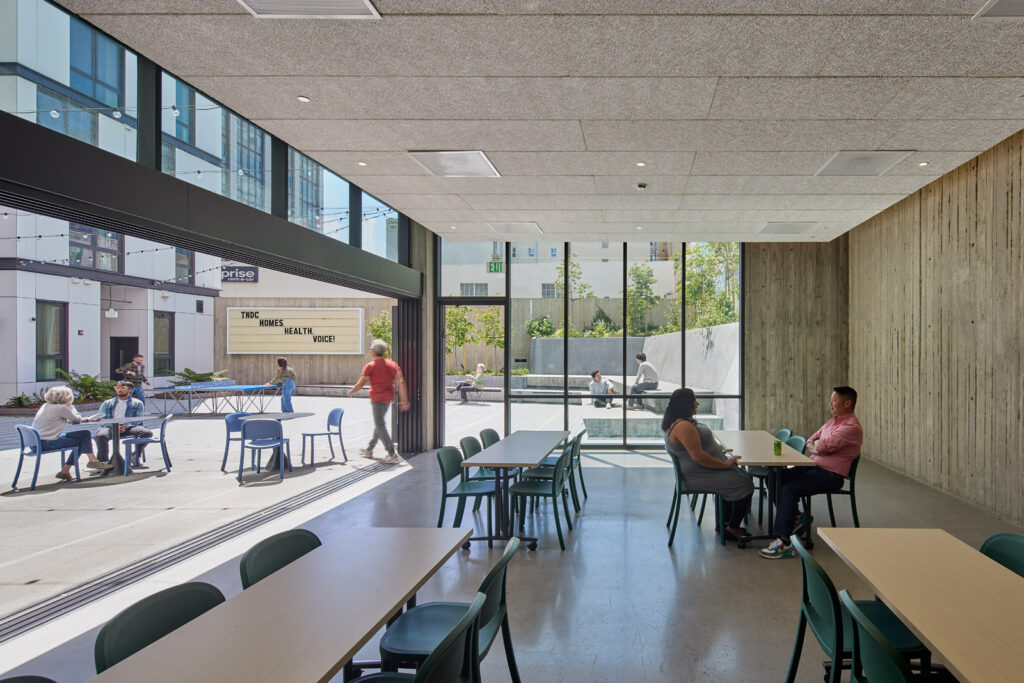
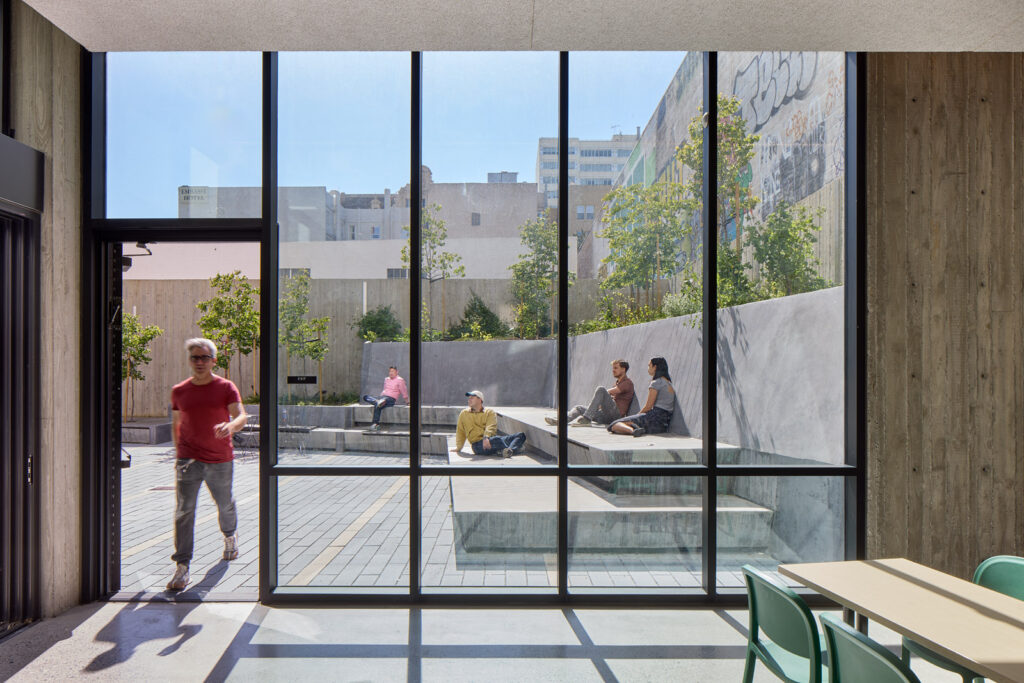
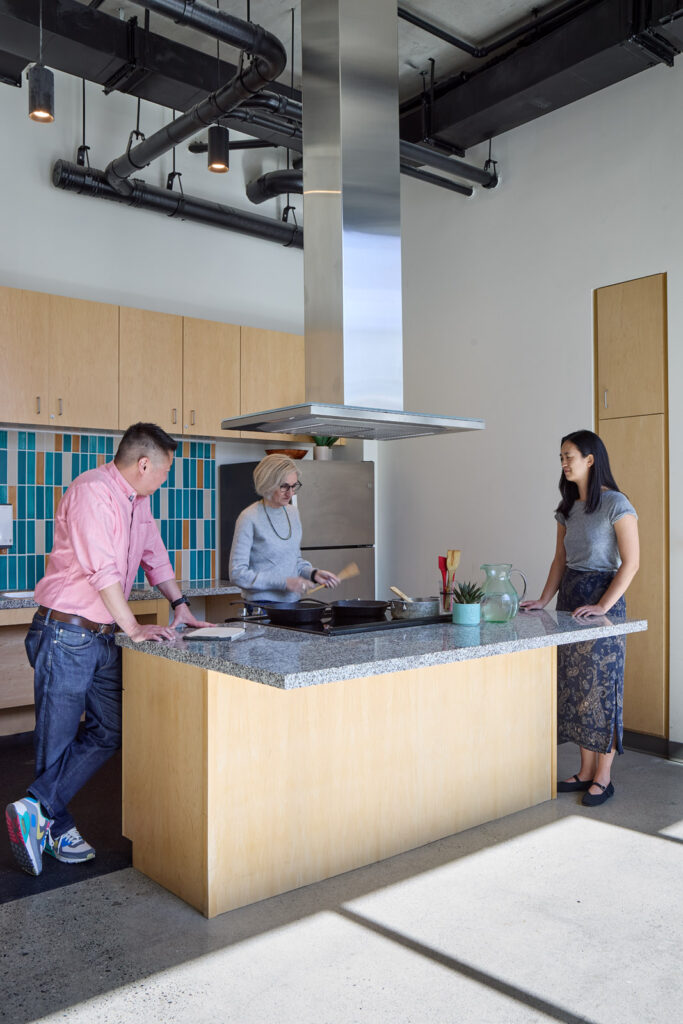
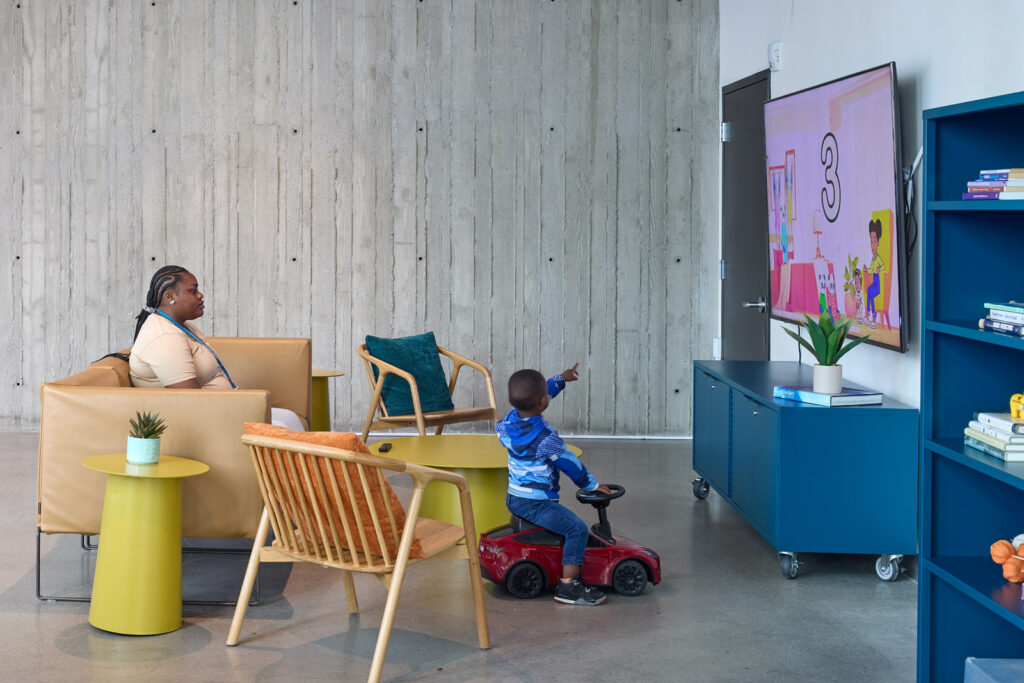
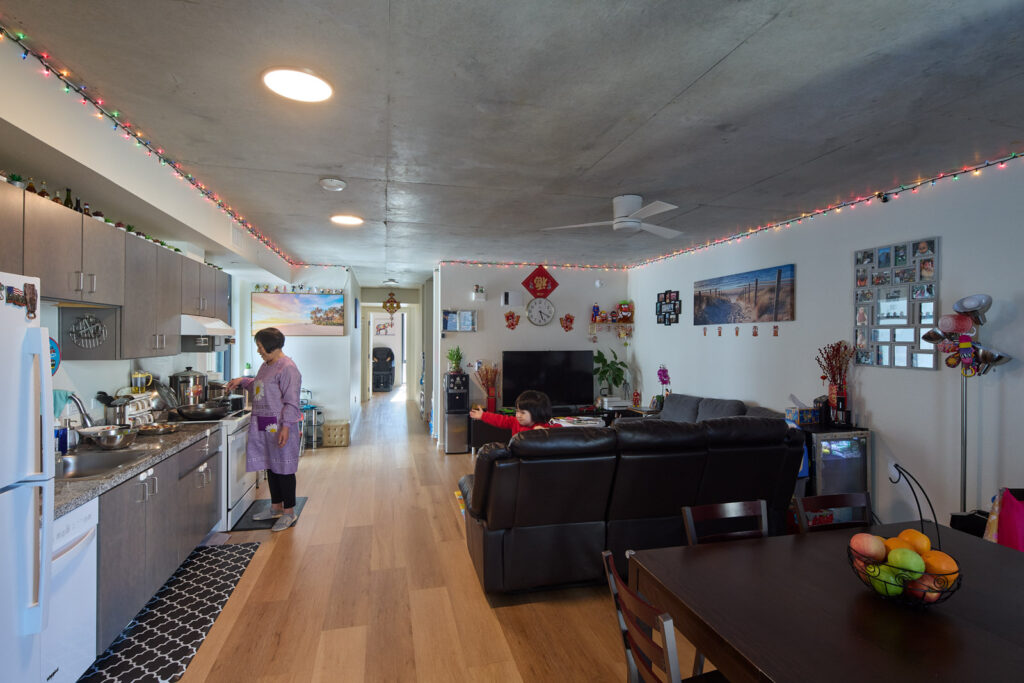
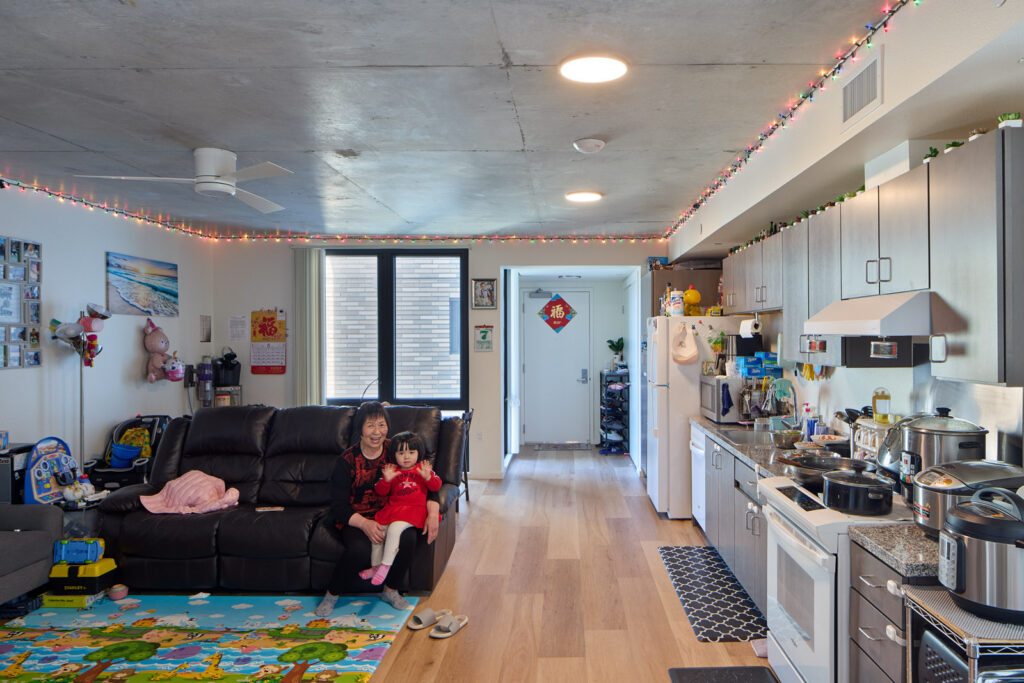
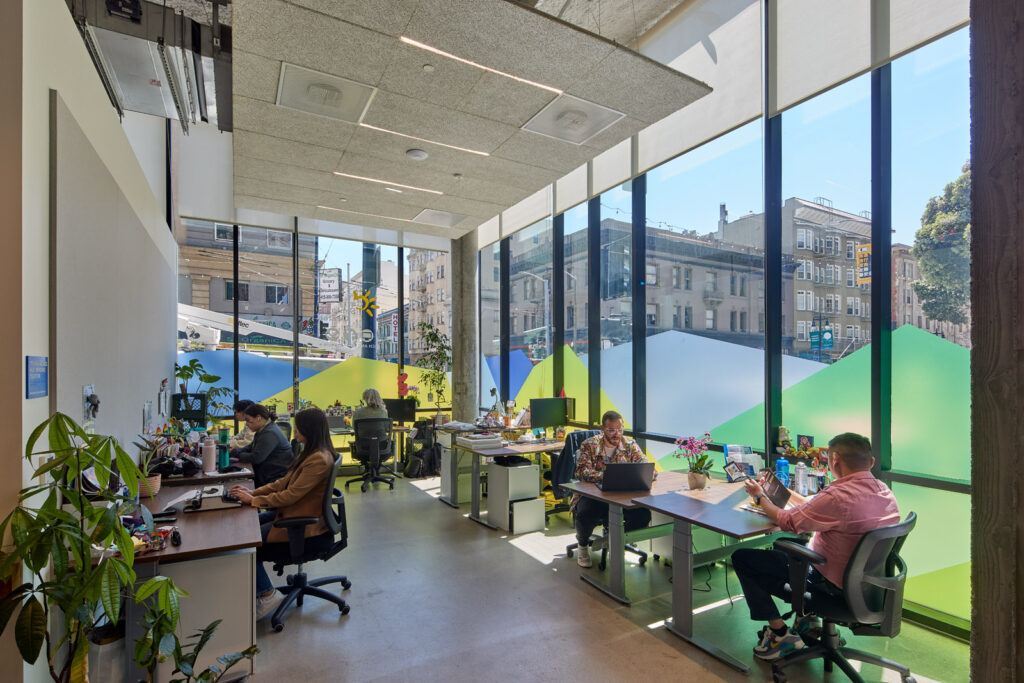
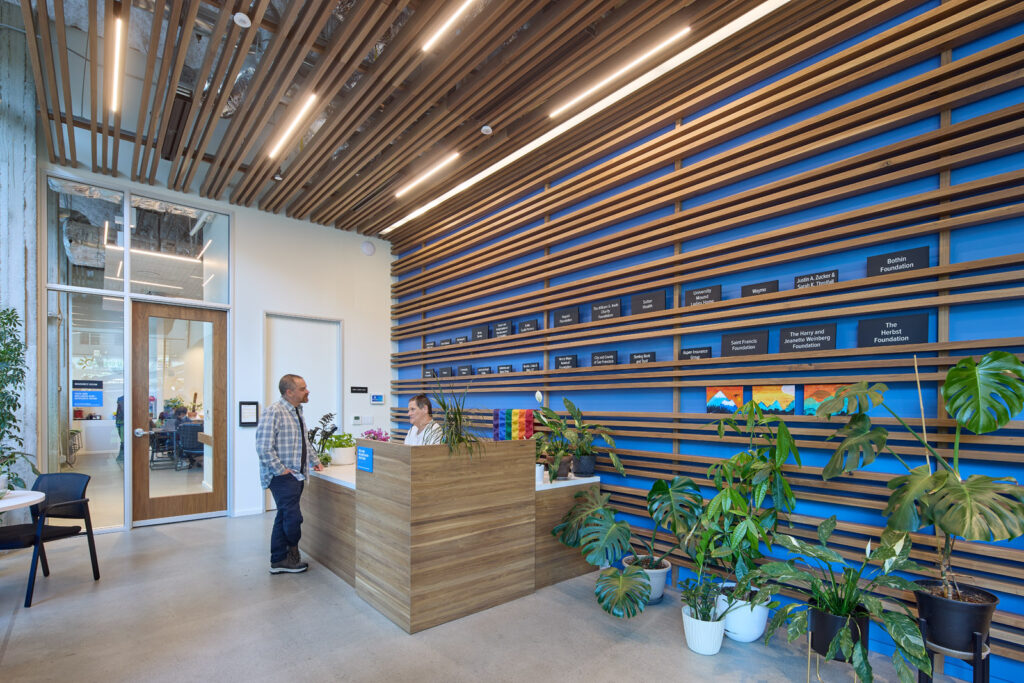
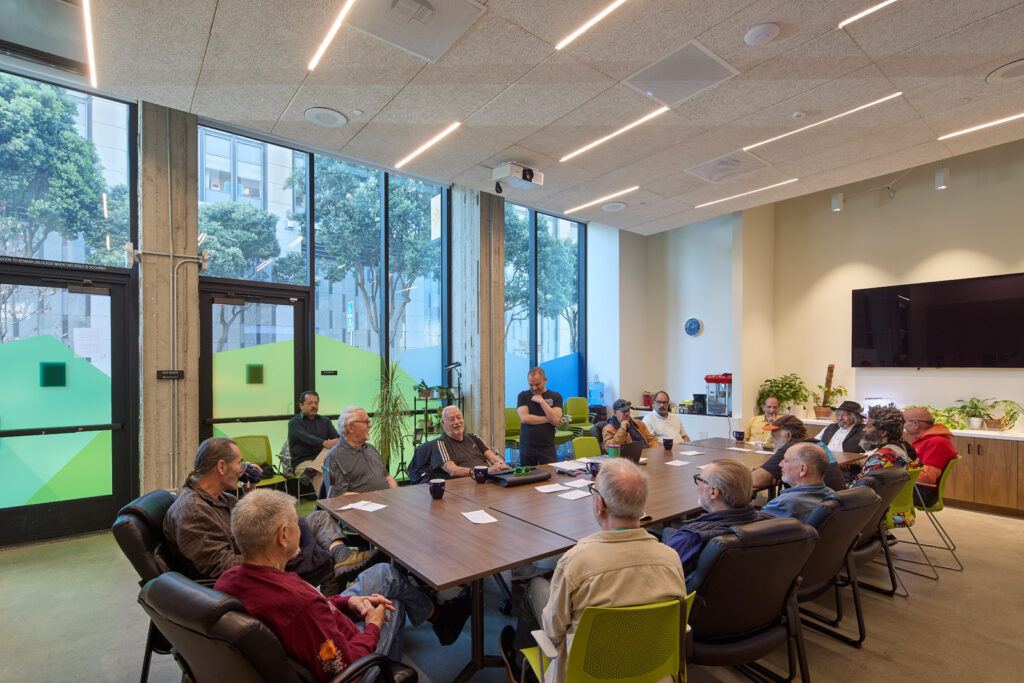
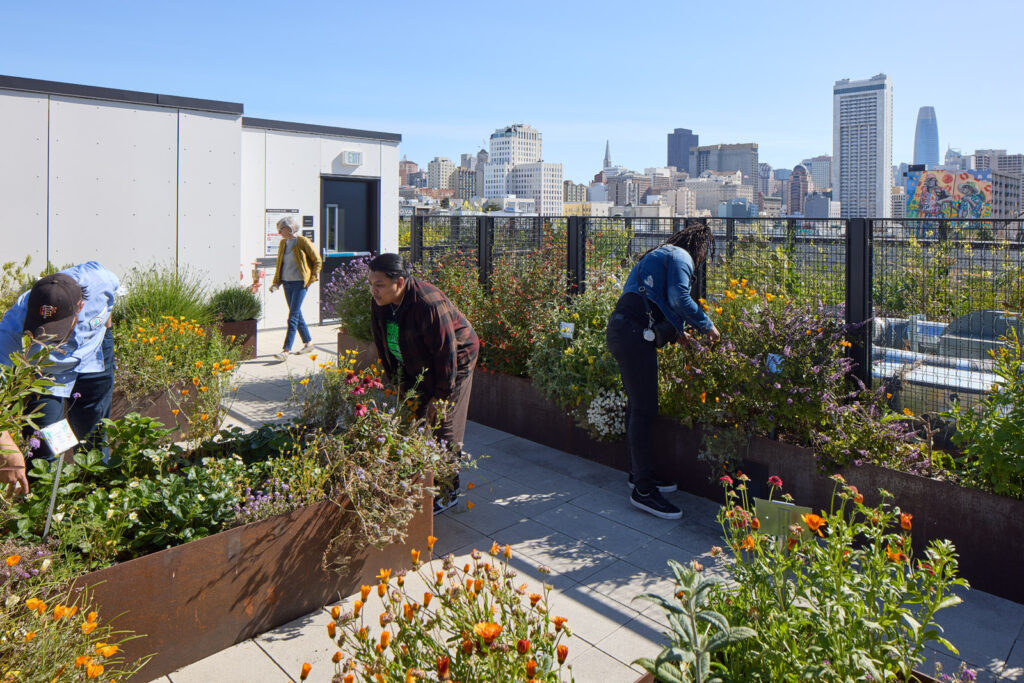
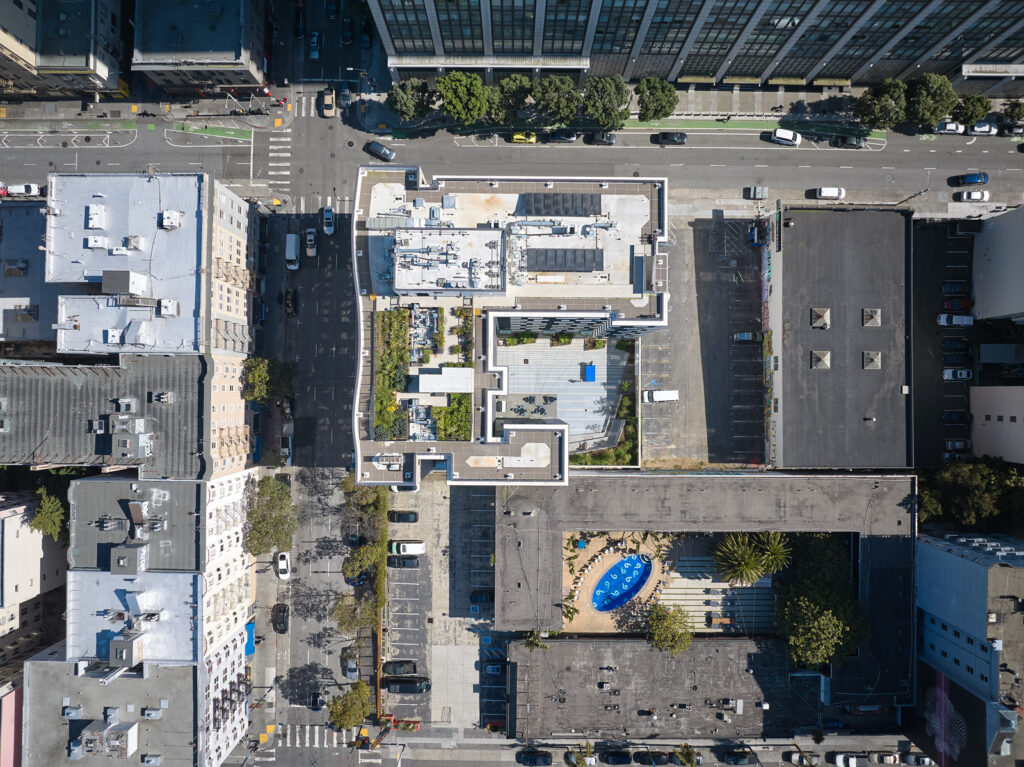

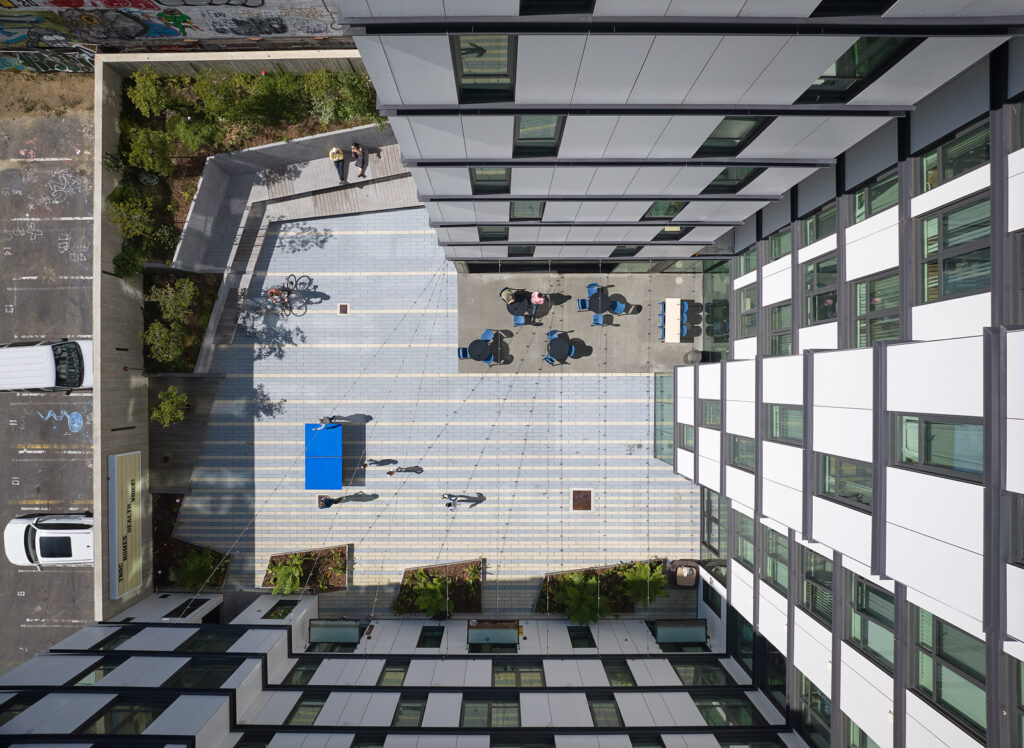
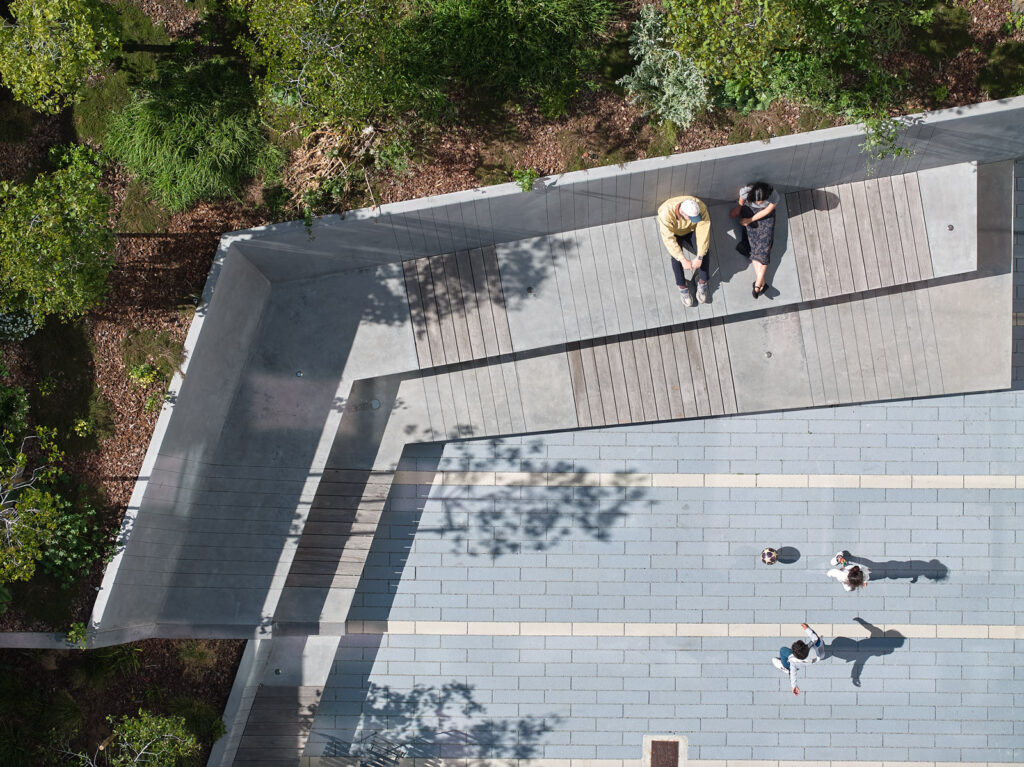
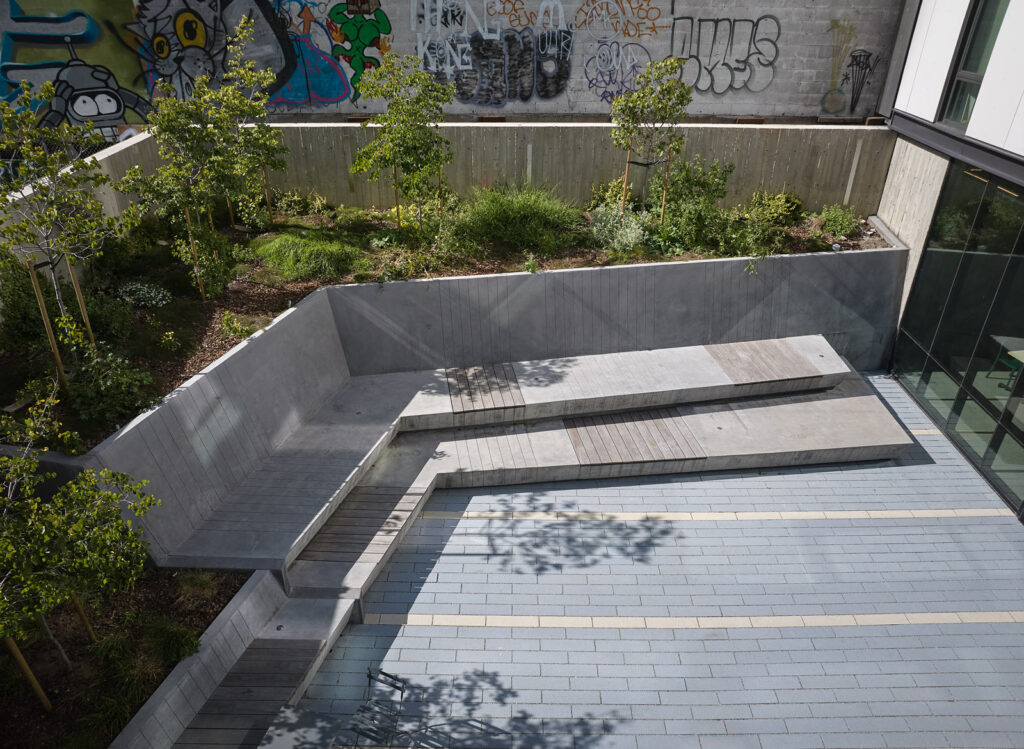
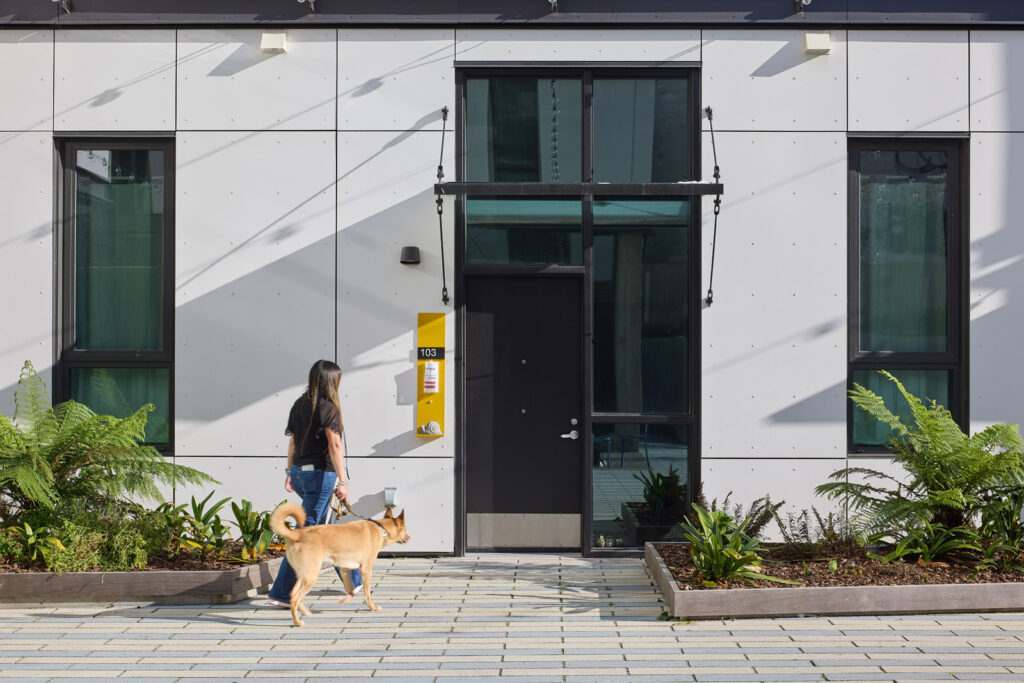
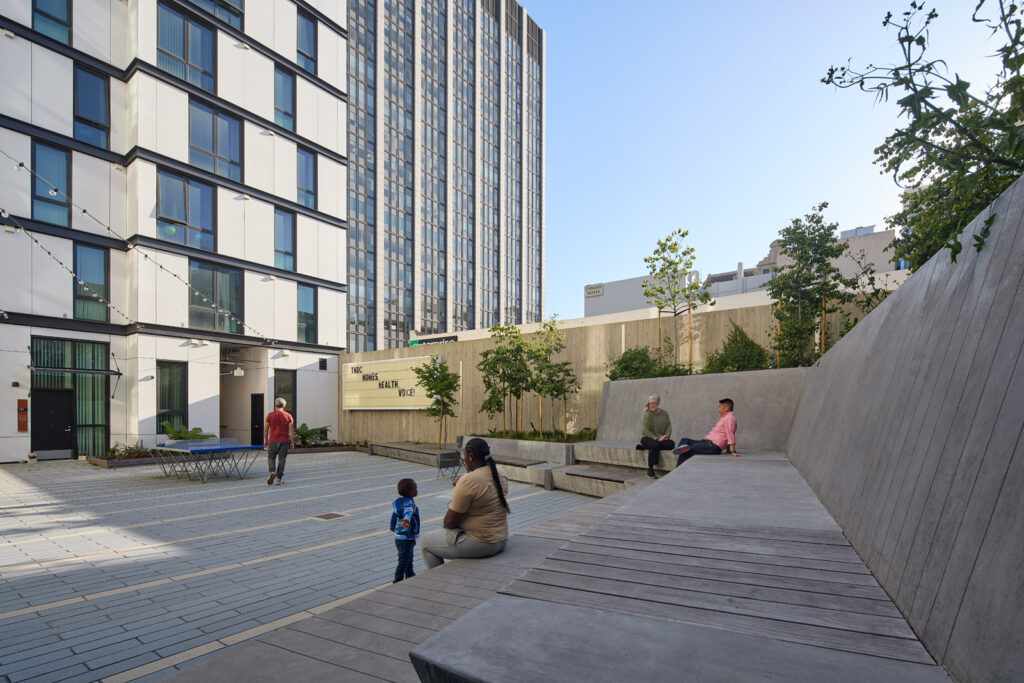
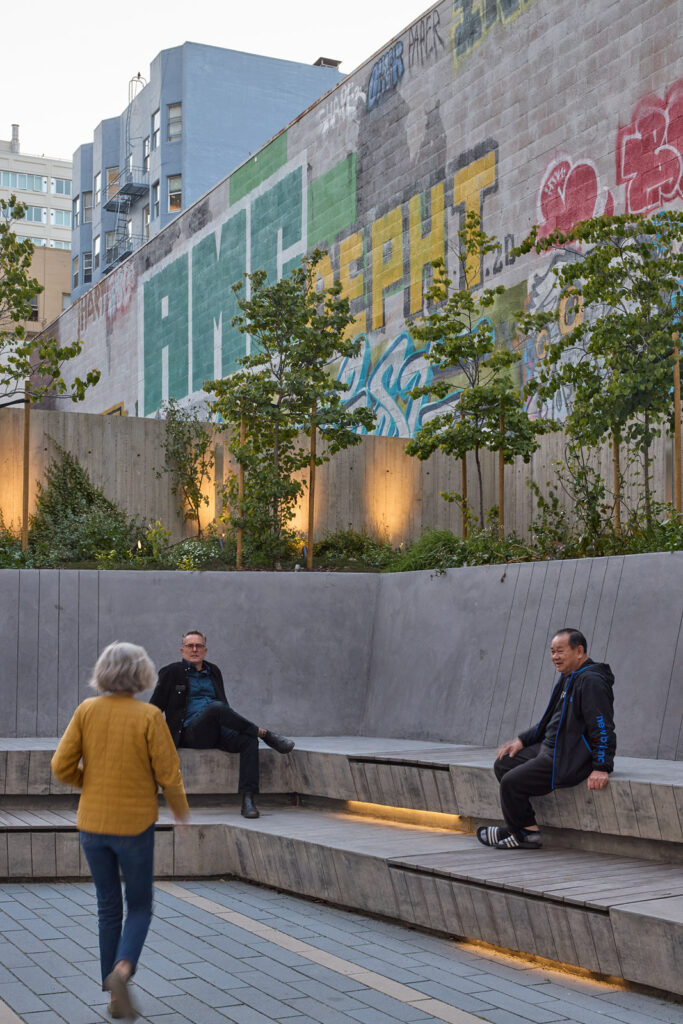
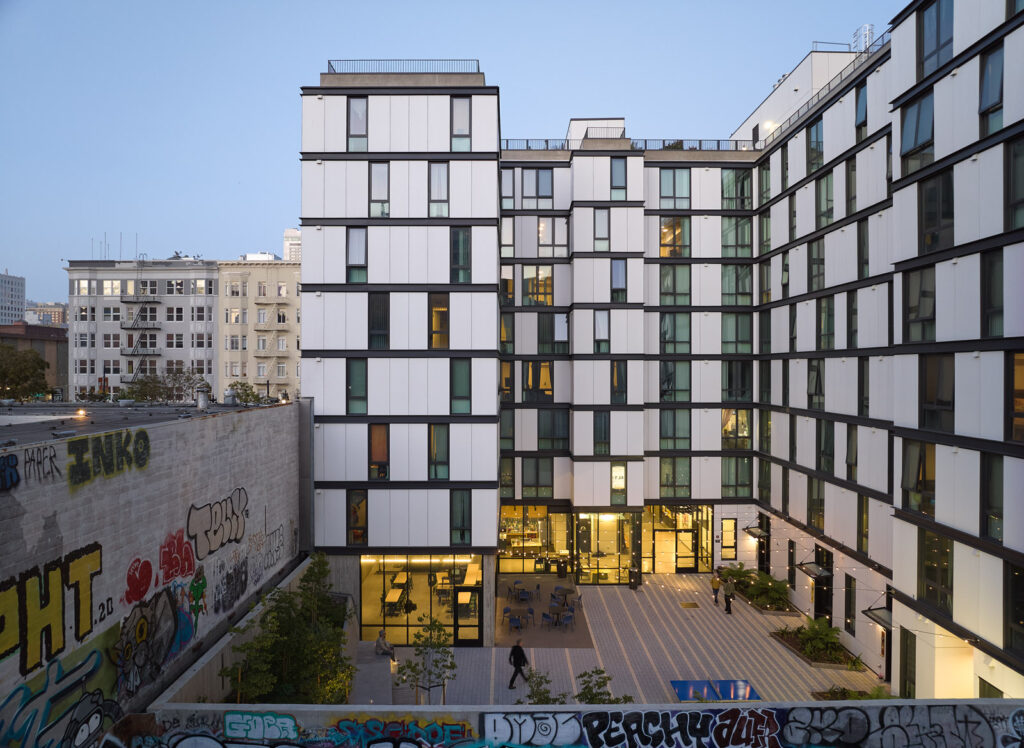
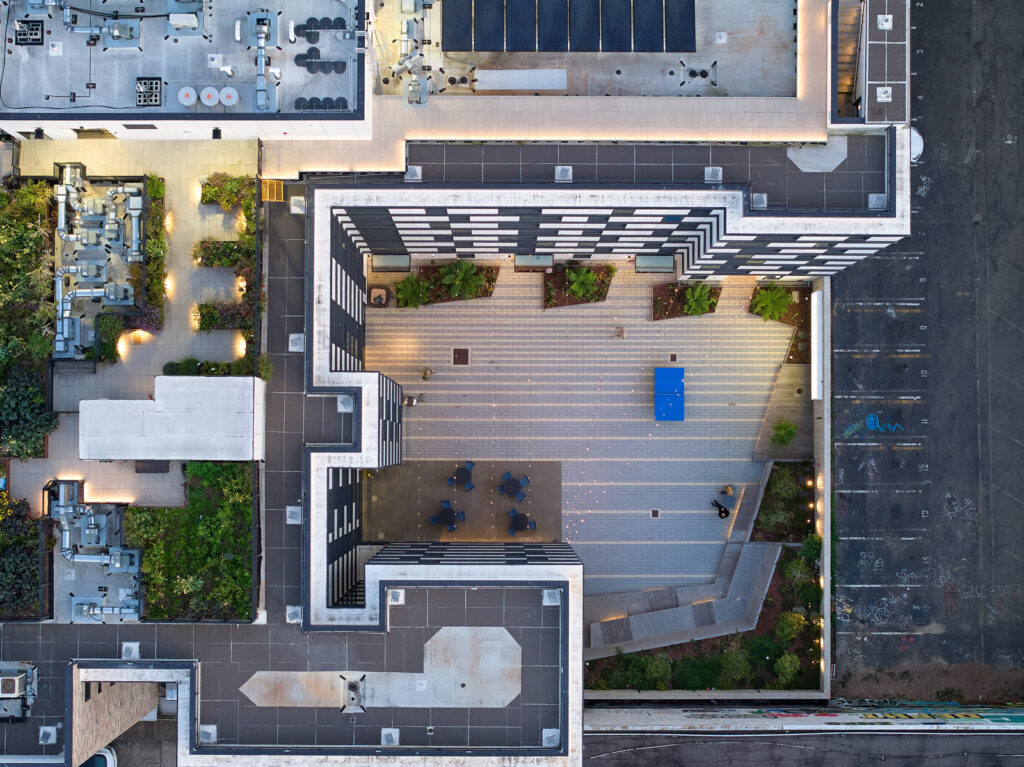
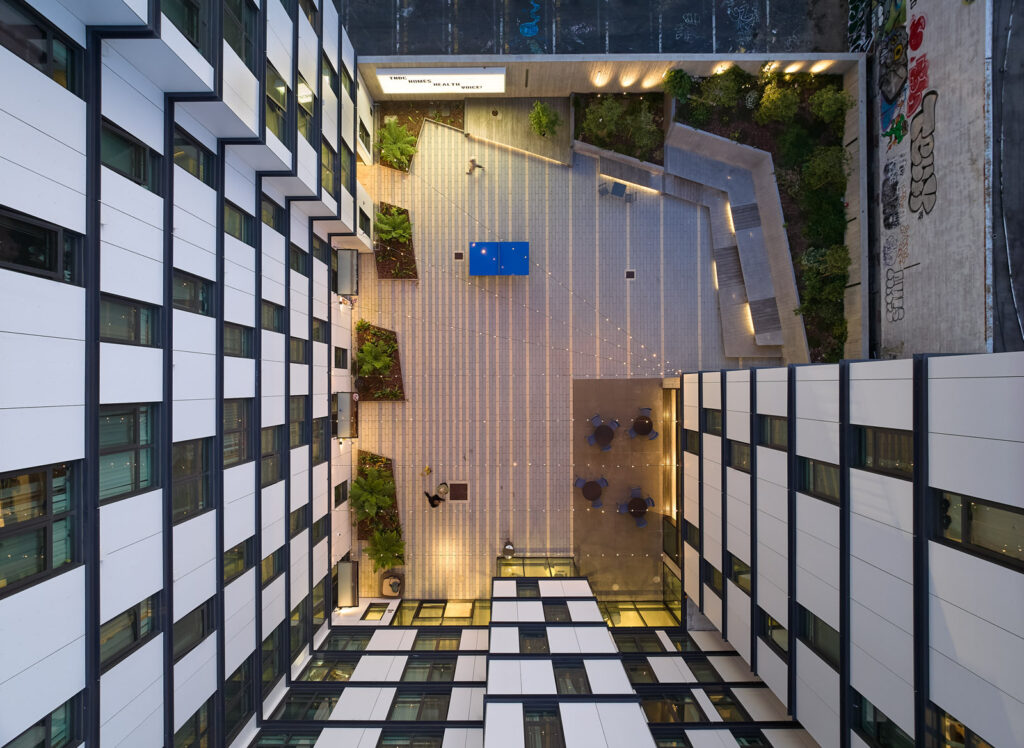
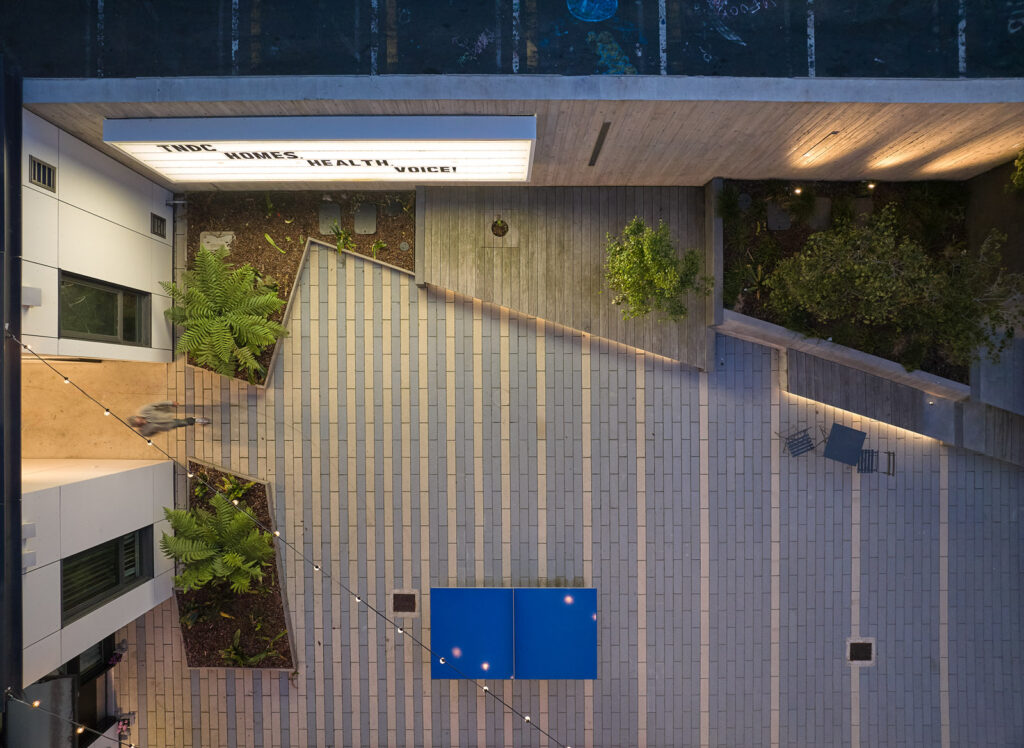
Location: Tenderloin Neighborhood, San Francisco
Owner/Client: Tenderloin Neighborhood Development Corp. / David Baker Architects
Scope: Courtyard Landscape & Streetscape
Status: In Progress
Photography: N/A
Eichler Remodel
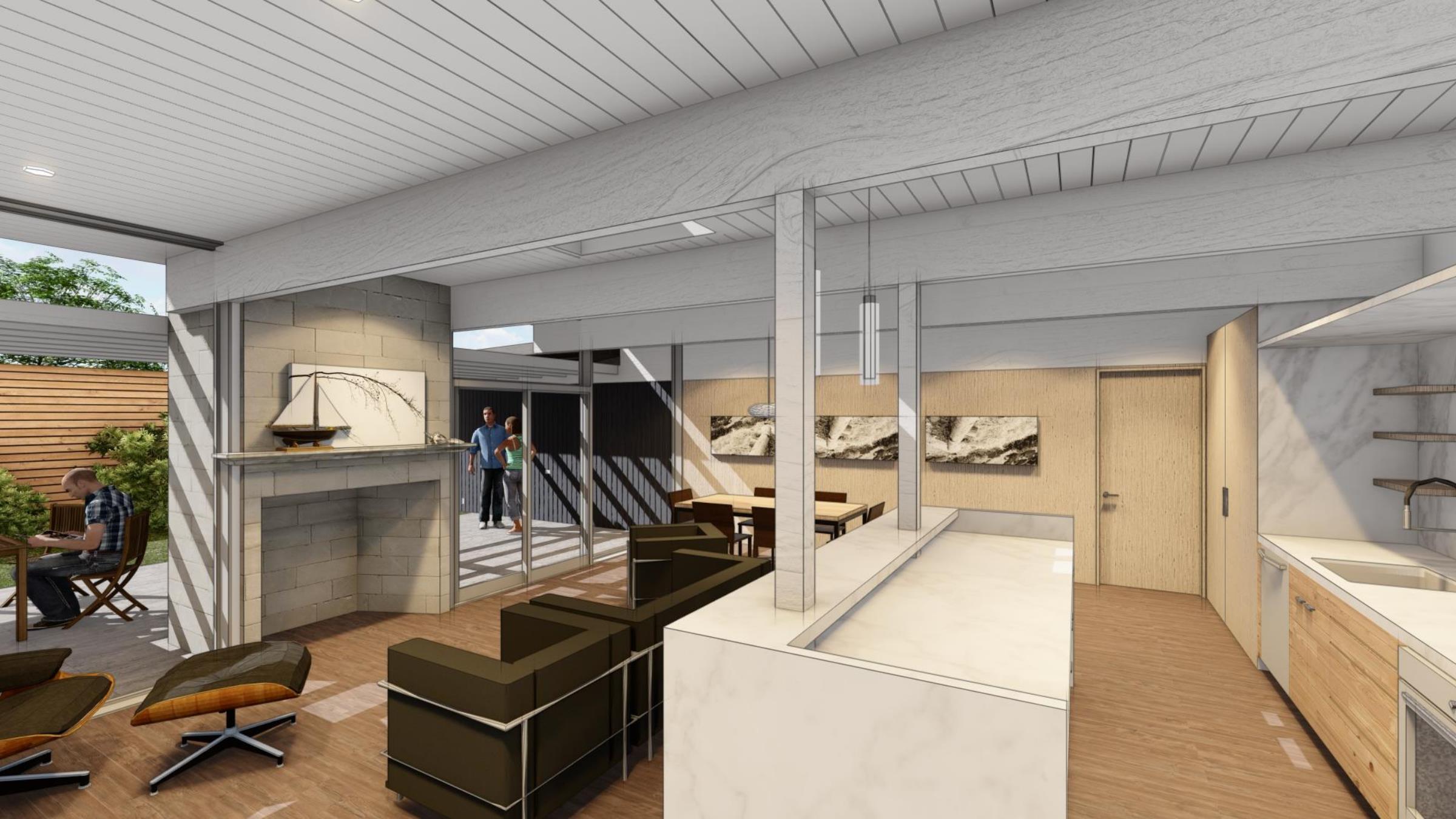
The Eichler Opportunity
At INTERSTICE we love California Modern’s deep tradition of open simplicity, fluidity of space, and clear elegant structure, that is perhaps best characterized by the design boom of post-war housing across the entire mid-century period during its expansionist development. Joseph Eichler, a prolific 20th century California developer inspired by modernist architects such as Richard Neutra and Frank Lloyd Wright, was able to bring quality affordable architecture to millions of Californian families. These ubiquitous single-family dwellings were more than just homes, they were a way of living; iconic designs that merged interiors with exteriors. They have become synonymous with the California lifestyle
Reversing the Sprawl
The suburban legacy these homes created was unfortunately a low-density “sprawl”, outwards from the metropolitan areas, and with them came extended infrastructure and new roadways in an outward dispersal of resources and energy, but that may not be the end of the story. … Due to their simple open and elegant structure, clear core to peripheral planning, and expansive open-glazed spans – they are also easily converted and expanded. INTERSTICE was asked to tackle the Eichler in the Marin County suburbs and found an opportunity to leverage new ADU legislation and state tax incentives to help turn around the negative legacy of sprawl and densify the suburbs one Eichler at a time.
Case Study E-1
Our first Eichler became a Case Study for our team (“Eichler#1”), for us to see what opportunities there were for this classic California building typology. The owner’s young family was evolving. They hoped to modernize and renovate over the next ten years, as children grew and matured, aging parents needed support, and extra room and revenue became paramount. We realized this larger home could serve more than just one purpose. Through good design it could be made better: more flexible, more functional, and intensified to serve these new 21st-century needs.
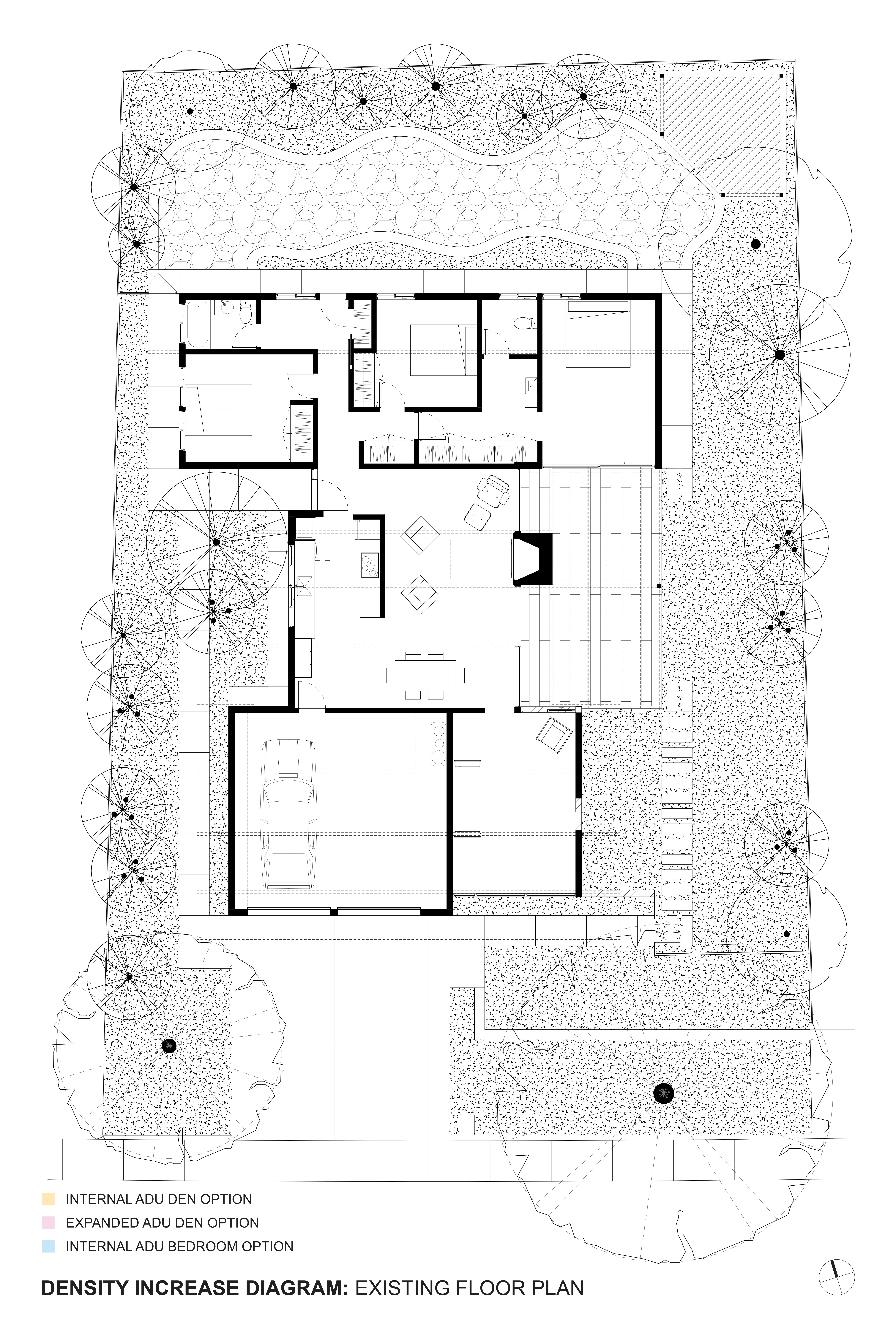
Fractal Living
Looking at the spiral unfolding from public to private space typical of the Eichler plan disposition, from garage and entry, the home naturally moves from the most public of spaces at its core, towards more and more private spaces. We discovered these outer areas to be fractal-like in their ability to become new “accessory micro-dwelling units” in their own right. Keeping the material palette simple and circulation to a minimum, extra bedrooms and dens become new semi-detached homes, designed with direct access to private exterior space; now designed to be completely functionally independent from the original Core Main Home.
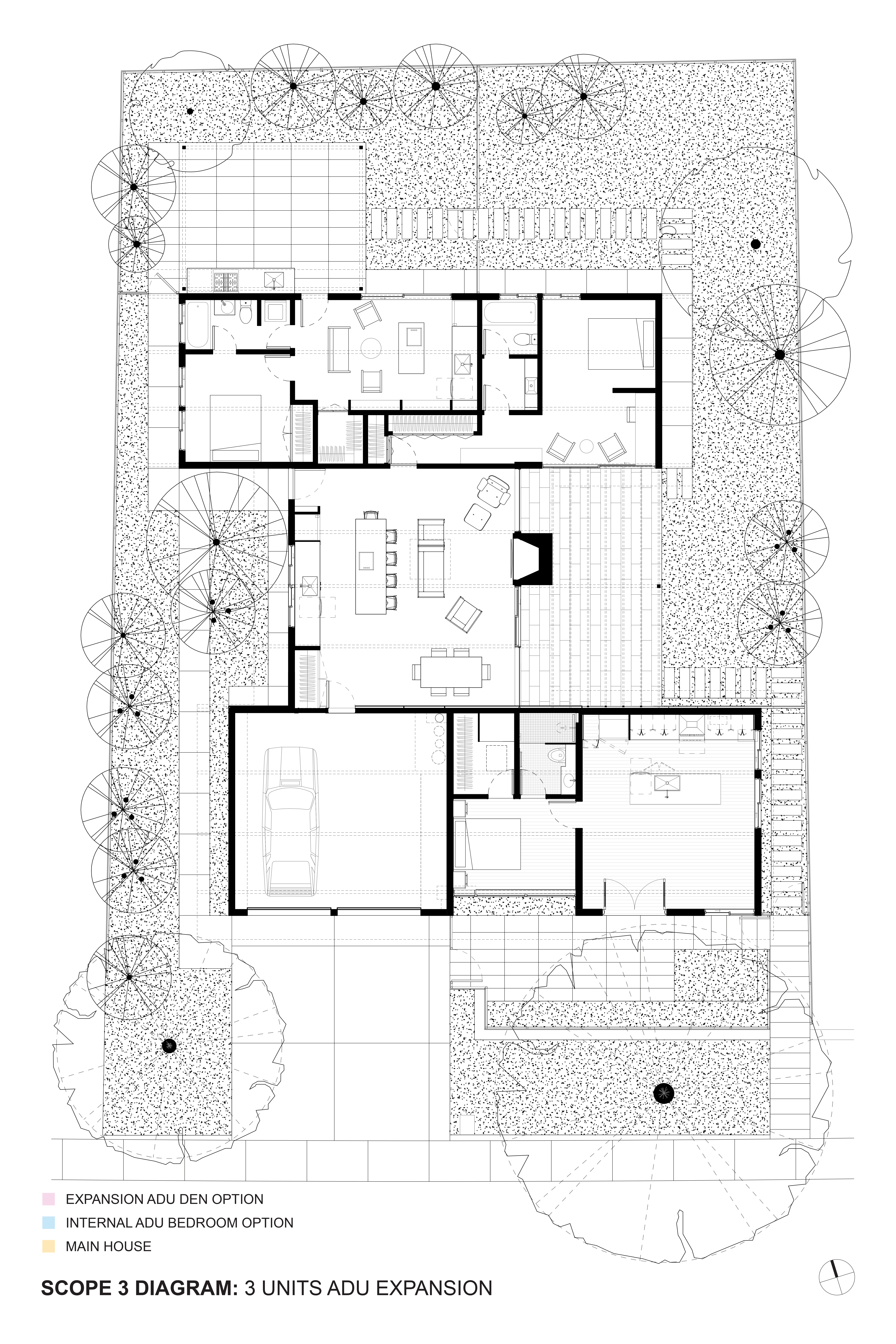
What Was One – Is Now Three
The three-bedroom home with den is Converted in Phase 1: To a 1-bedroom ADU + 3-bedroom main home. Phase 2: Creates a second 1-bedroom ADU bracketing the original now 1-bedroom main home. All 3 homes have their private entry, associated yards, and access to a shared garage with a central workshop and off-street storage. The once “Single-family Home” becomes a three, smaller home community, all on the same site, with minimum investment, and little to no expansion to the envelope. With the first phase complete, and the new exterior kitchen installed Phase 2 is that much closer to realization in the next five years. An affordable conversion that triples the density of each parcel without consuming more land or resources. We see it as an Eichler win-win.
Main House:
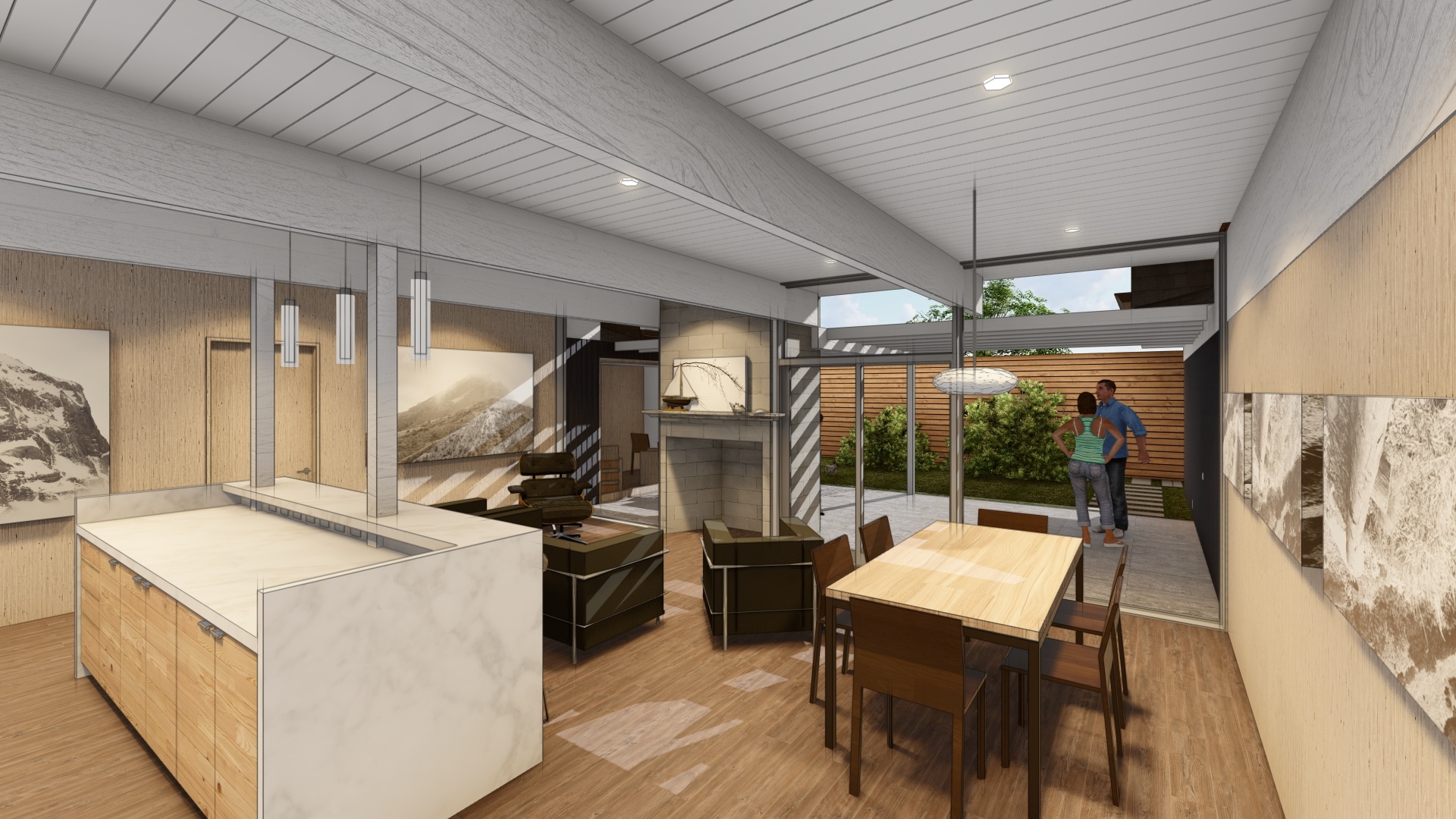
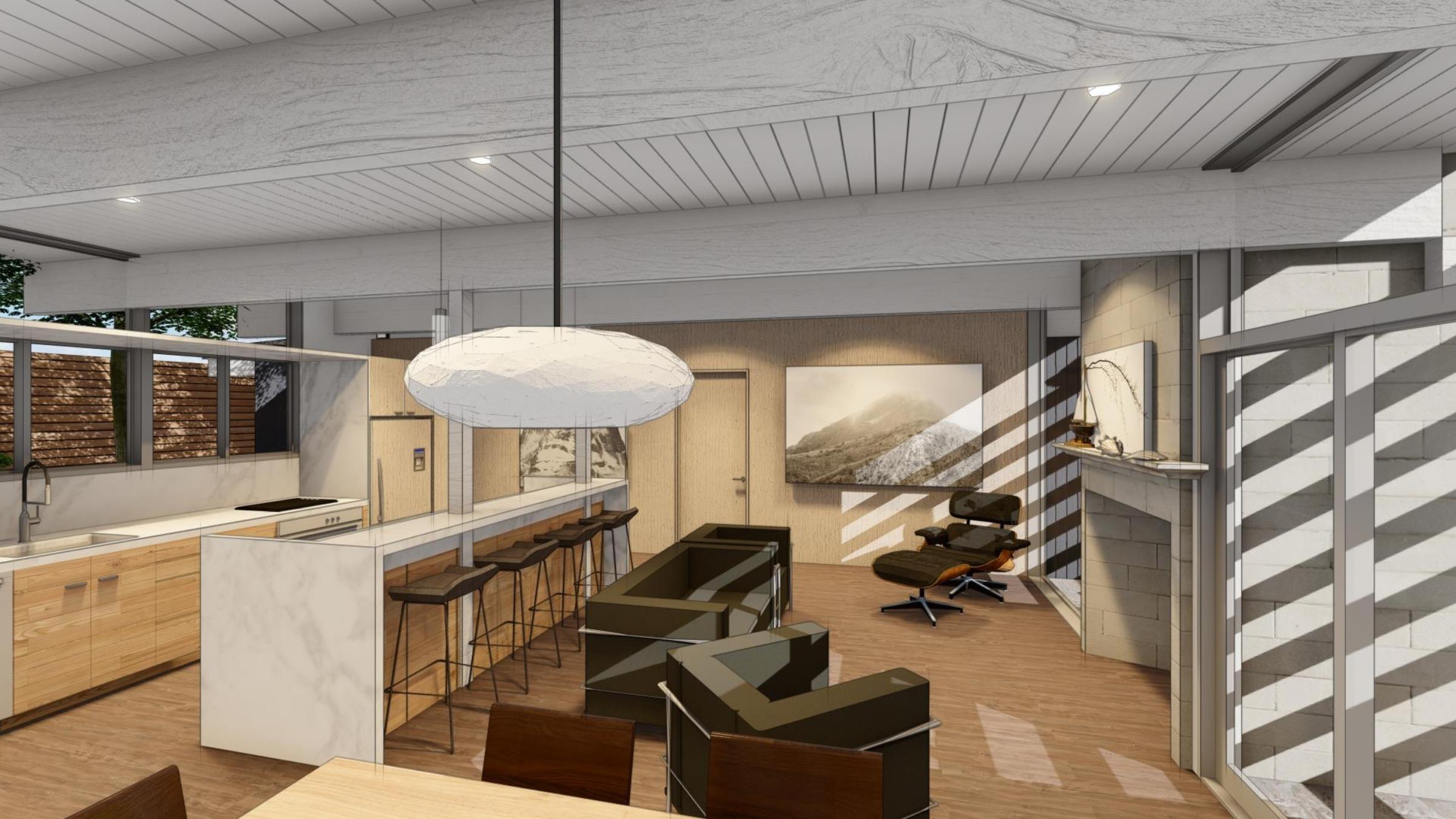
Exterior Views:
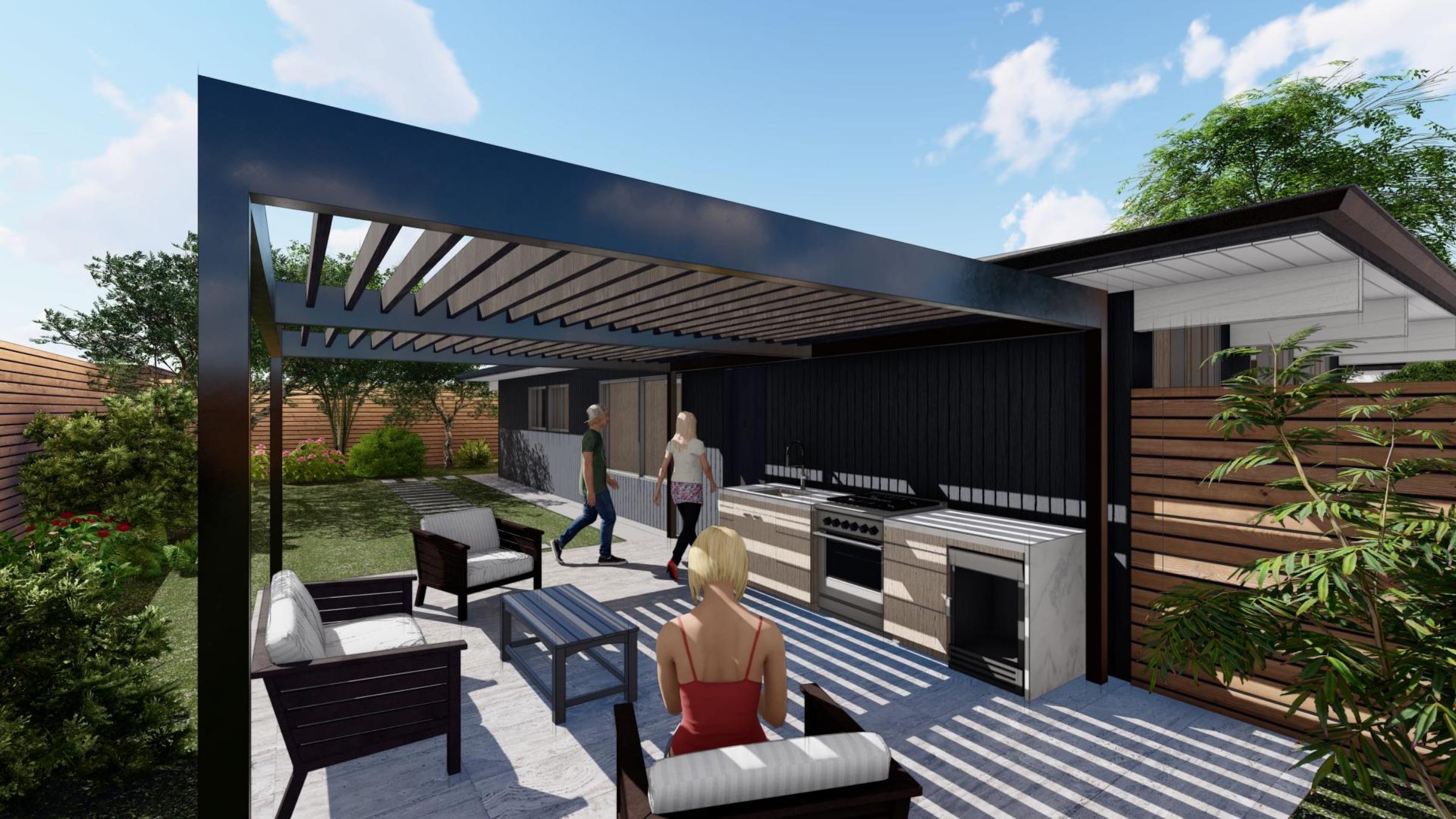
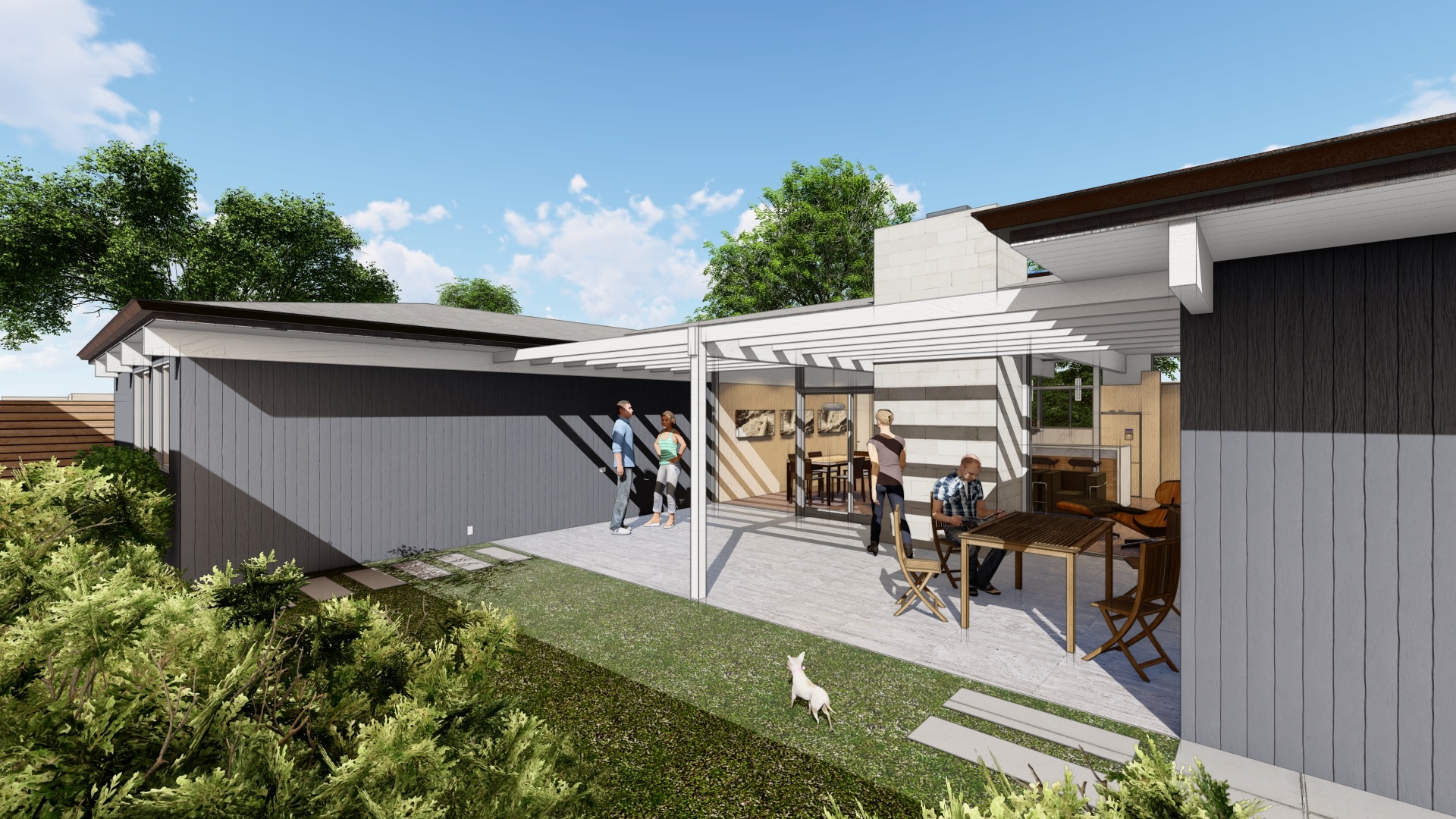
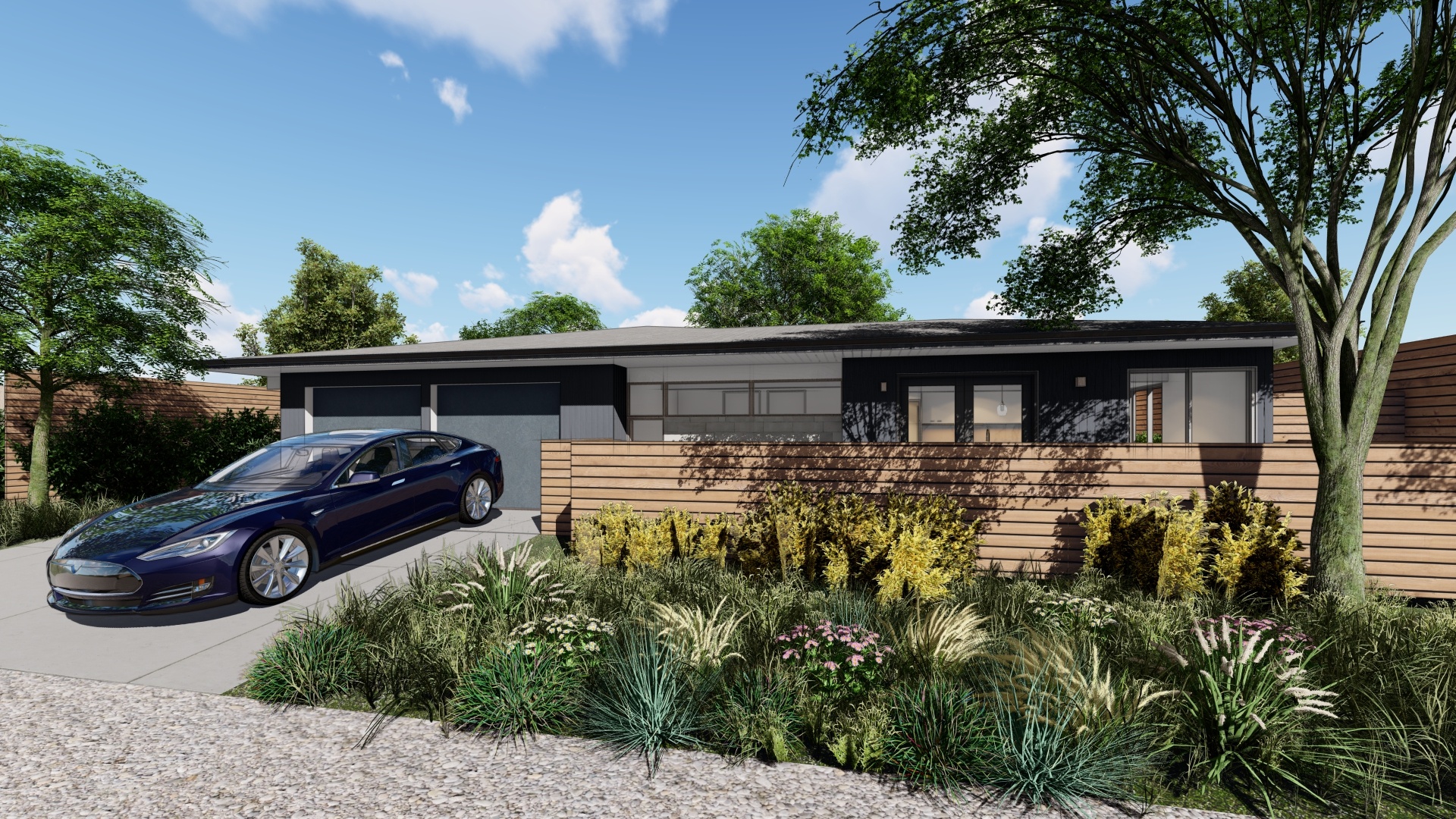
Accessory Dwelling Unit:
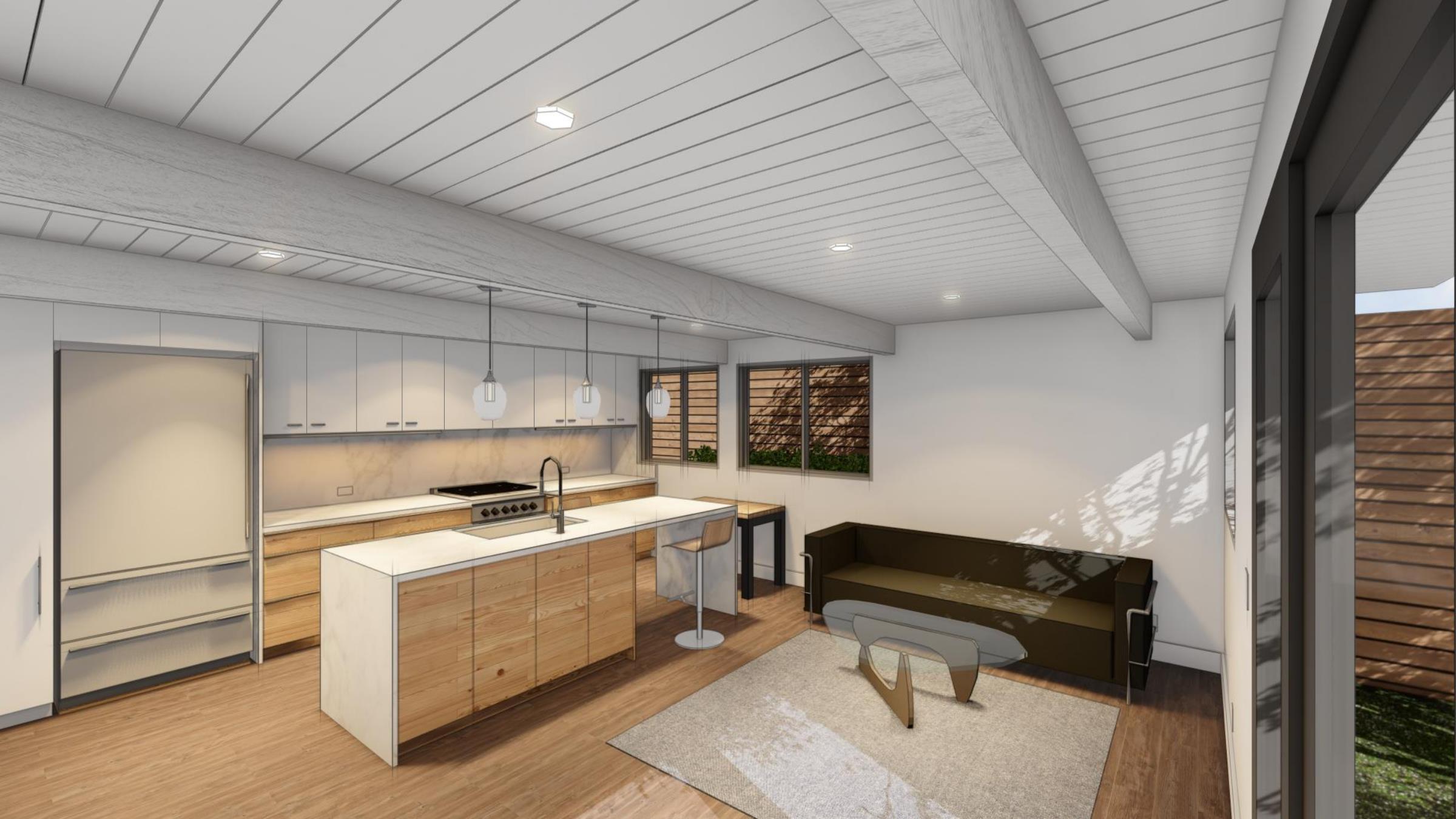
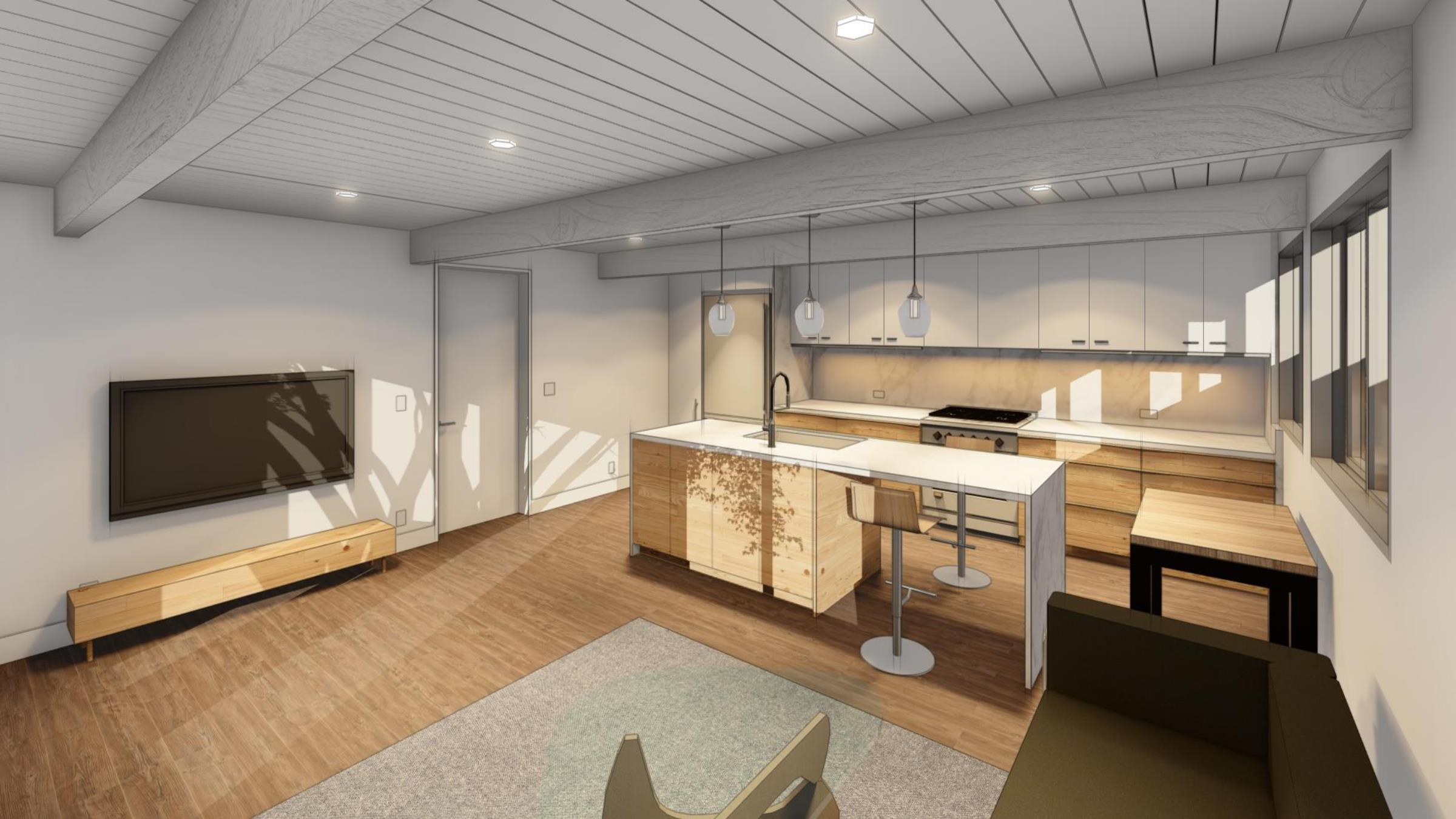
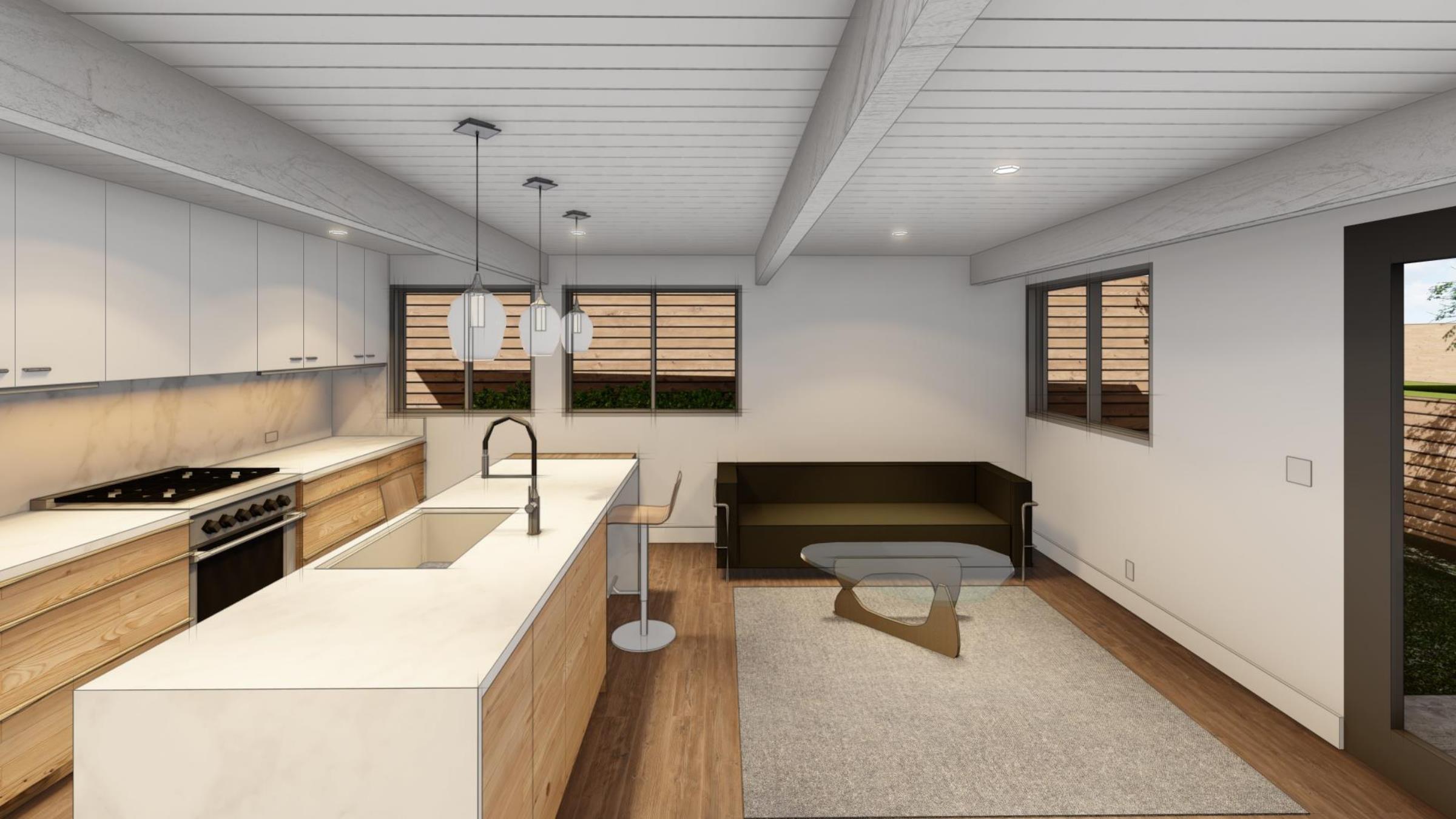
Forestville Family Retreat
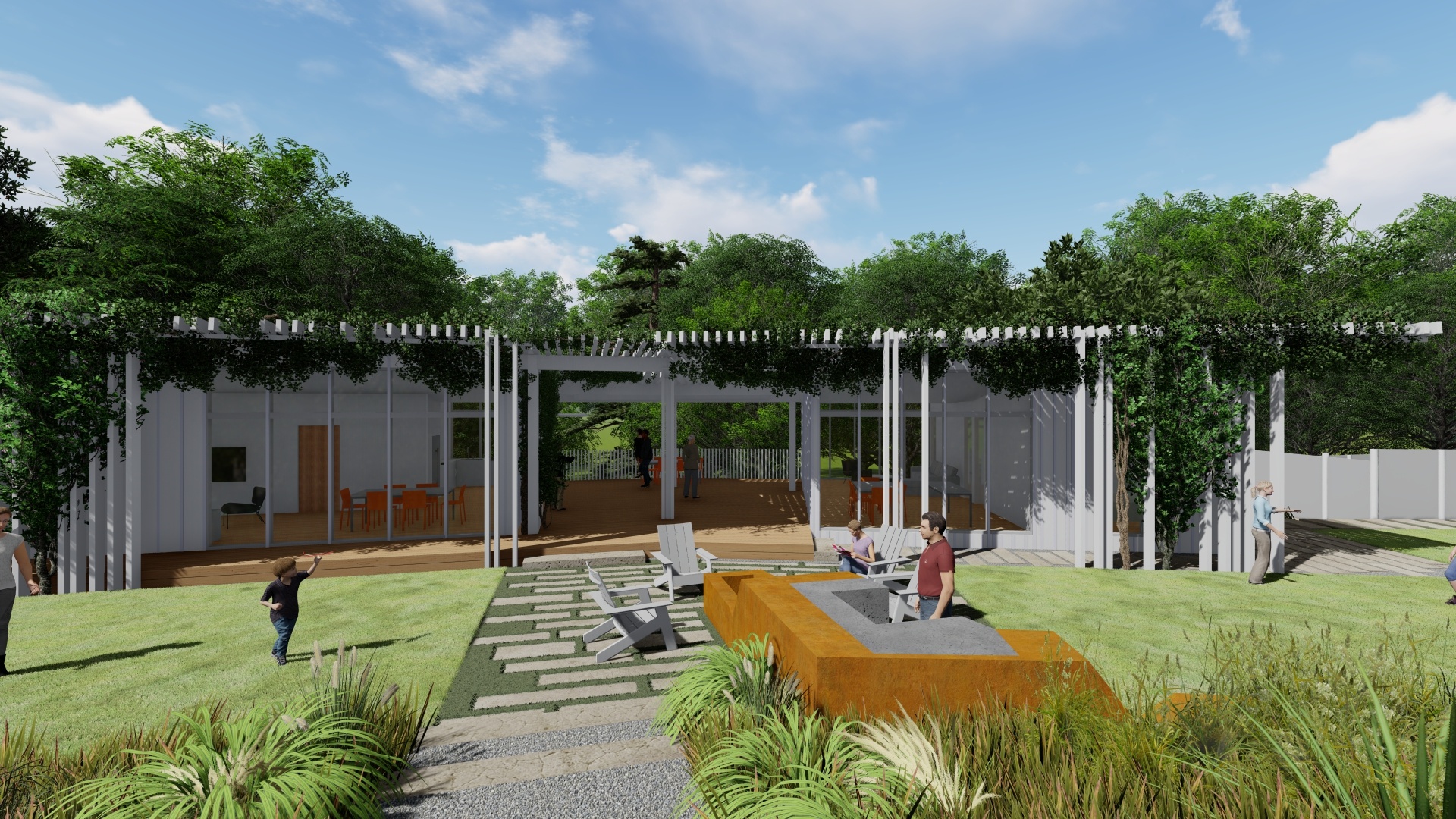
Shared Tiny Homes
The family wanted two “tiny” super-space efficient houses connected by a shared shade trellis roof that spans between the two structures. One structure would have the communal kitchen and interior dining while the other the shared living room – which both face inward toward the shaded vine-screened “Porch” allowing the interiors to expand between the units – to create a large exterior open program space.
A Grounded Perch
The guest house and primary dwelling are designed to be closely connected to the steeply sloping landscape with its north side porch at grade with the upslope patio; while its river-facing edge to the south looks into the riparian tree canopy. From this elevated cantilever, over the drive below, the west deck descends as a cascading porch; half sculpture half-giant furnishing it conceals the lower carport entry under the westernmost structure.

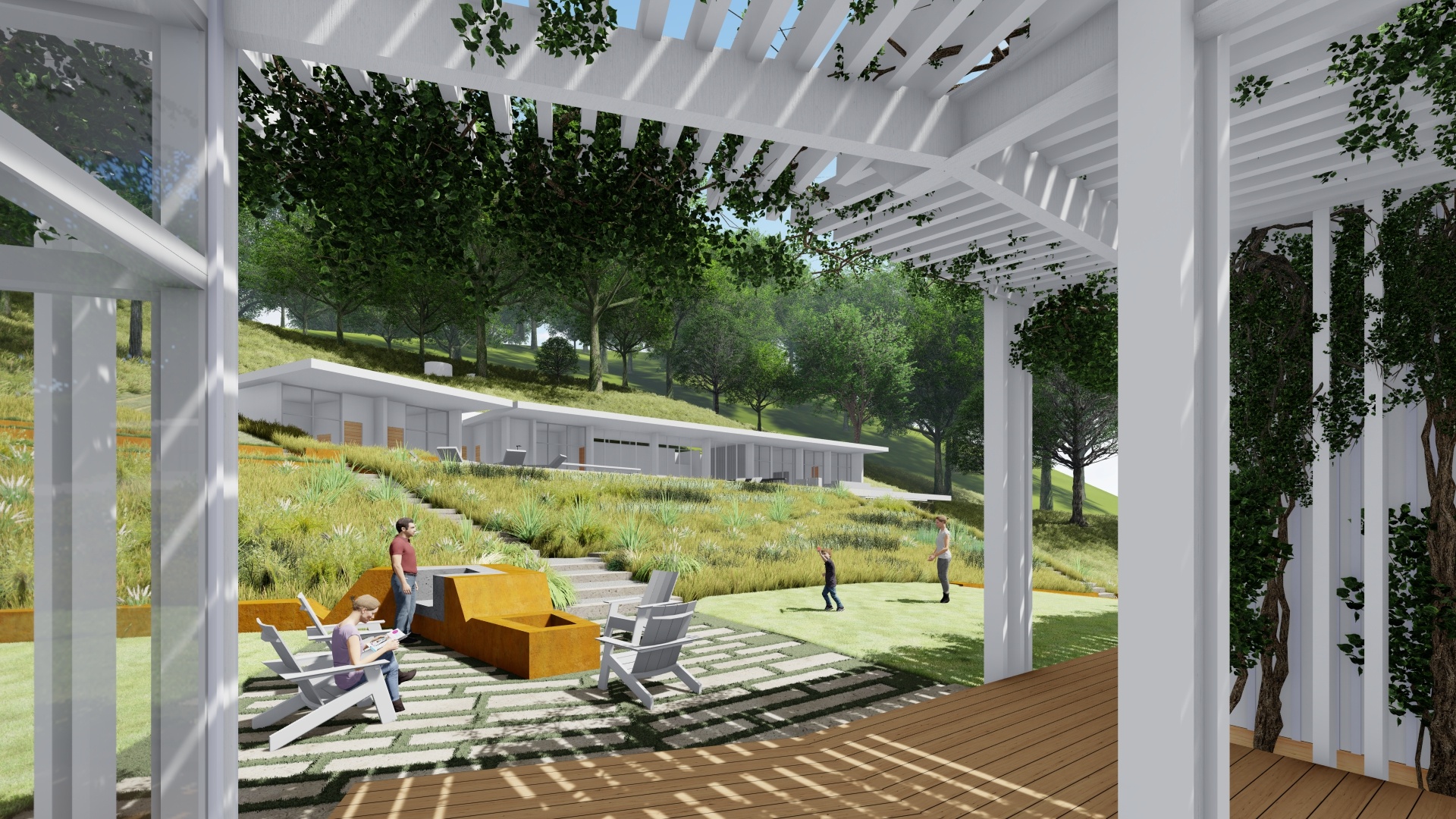
A Gathering Form
On the uphill side, the ground forms a naturally protected valley between the orchard slopes above, and the dwelling. Here the fire pit and outdoor cooking bench retain the hill edge and provide a social center for the home with room to play and gather – passing through the shady porch which looks out over the seasonally fluctuating riverway below.
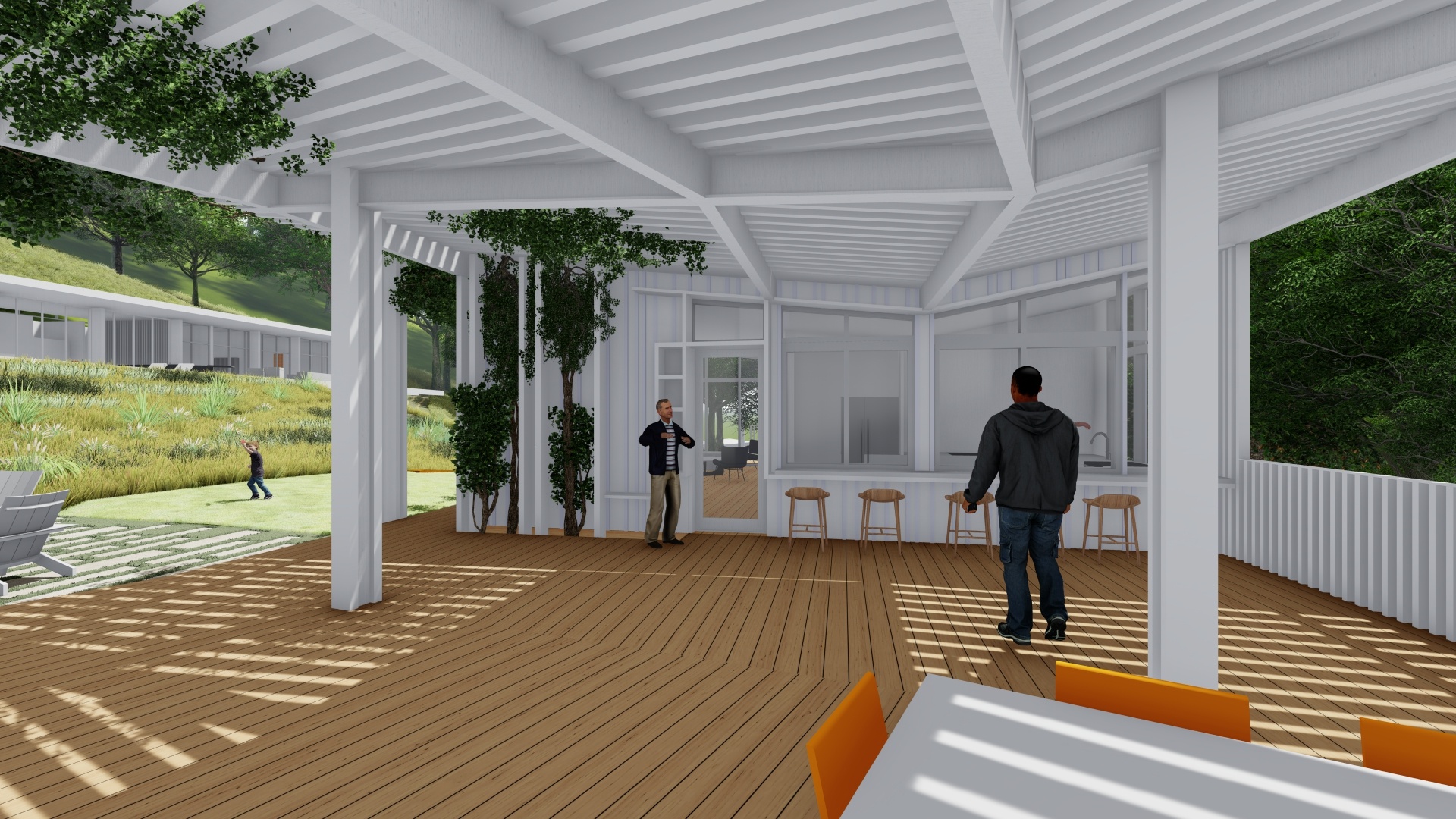
Folded Canopy
The roof is flexed and folded to look out upwards on both sides. Looking over the river’s southern high opposite ridge on one side and deflecting up toward the open hillside views to the east where hardwoods and meadows provide space for sunnier activities, like gardening, and games in the newly planted orchards and oak stands that will grow to meander up the southern facing slopes.
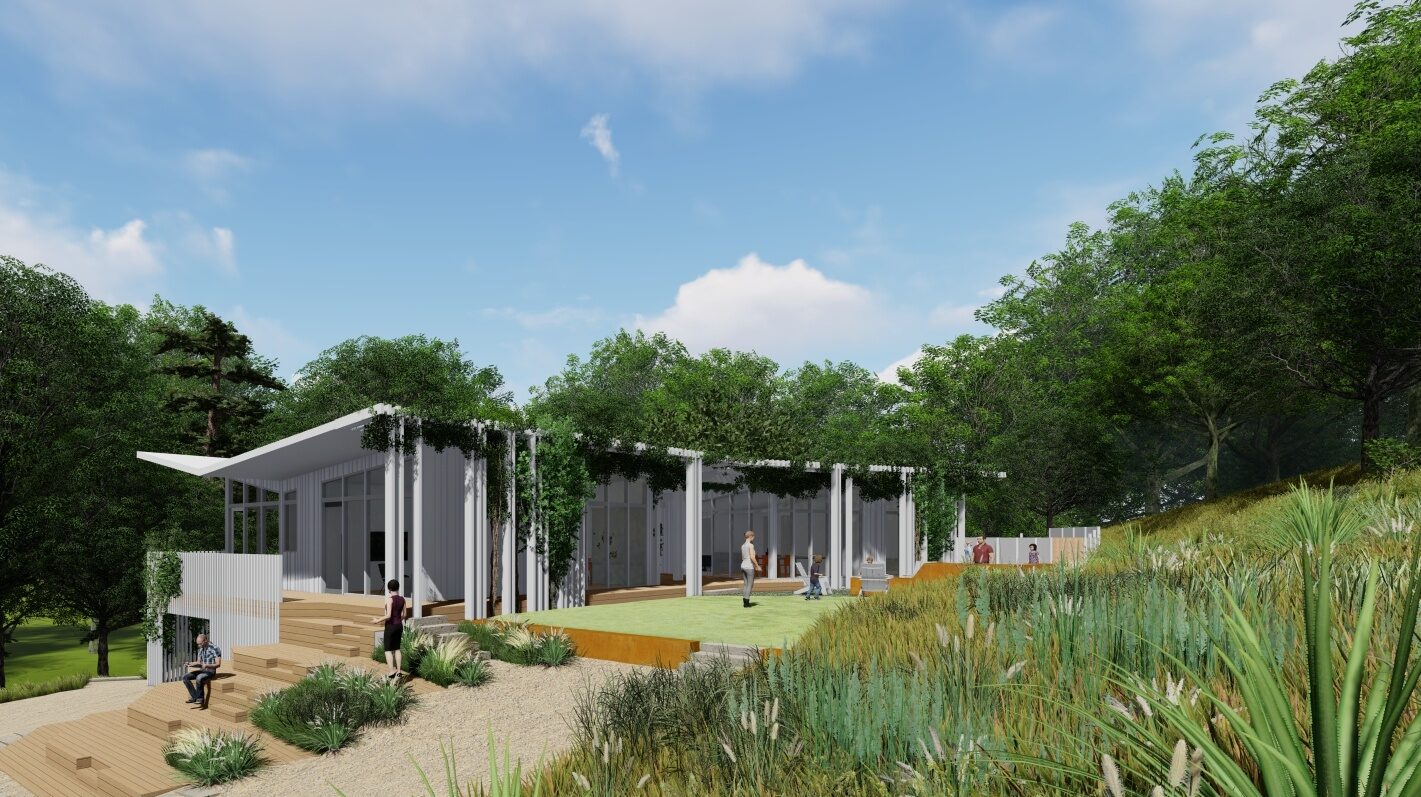
A Stone to Fire
The home is fireproof. With a Metal Roof and Clad in strips of fiber-cement board & bat that open and spread to become trellised vine supports for grape-vines the home is a perfect Sonoma Valley host for grapes to spread up and over between – like a filigree of stone this pale lacework of mineral screens glass from sun, forms guardrails, roof soffits and protects walls while integrating its permanent and maintenance-free fingers into the landscape to blend with the greenery that surrounds it.
Location:
Owner/Client:
Scope:
Status:
Ashbury Terrace Home
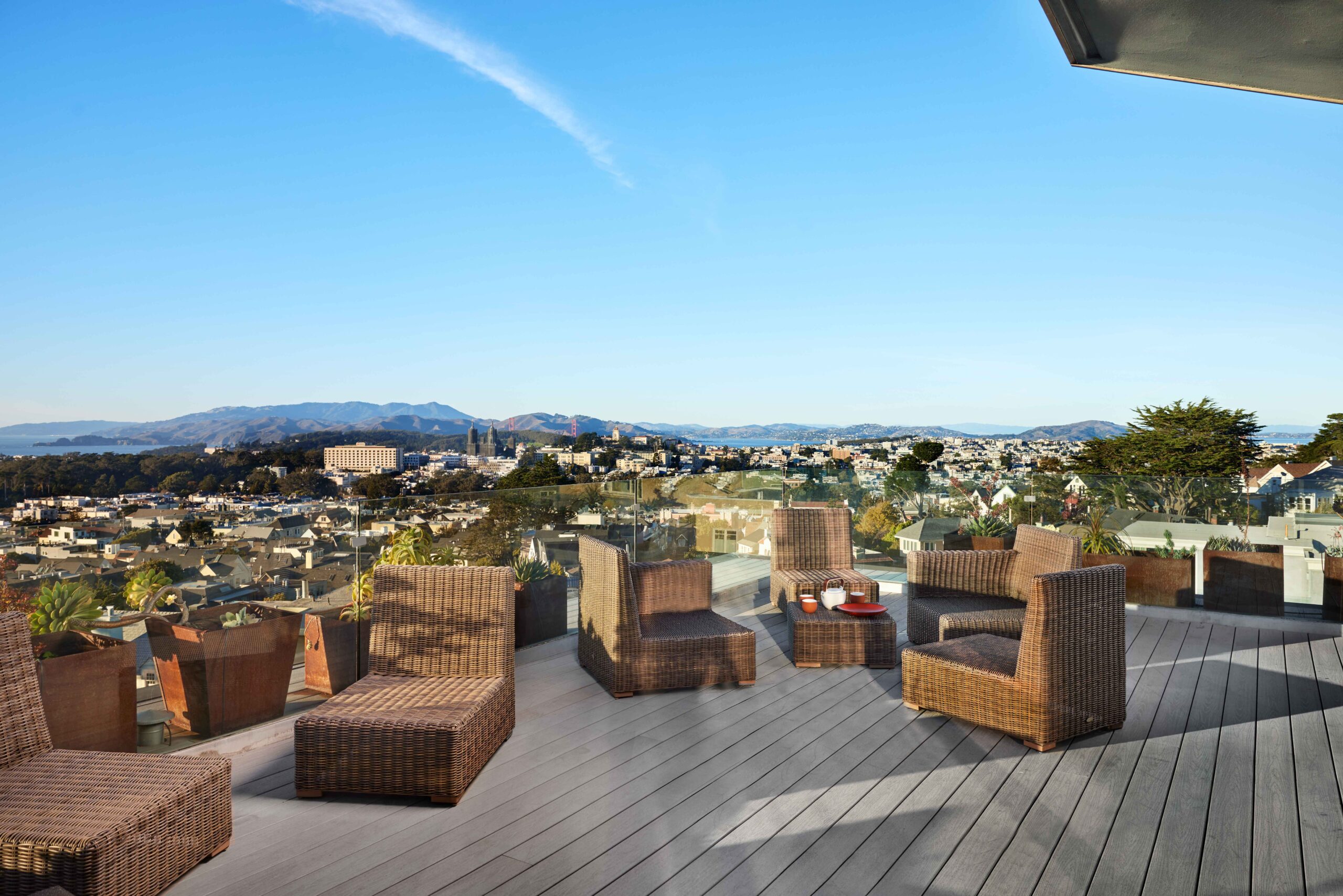
A High Home
This Home in the heart of the City commands a spectacular view of the sweeping bay, framed by San Francisco’s seven hills. The Original early period home was very closed in, and chopped up inside, with low windows and an oppressively hierarchical circulation (borrowing from the hegemony of bygone servant eras) – unbecoming of such an opportune site in the northern California Climate so INTERSTICE was hired to transform the home in collaboration with its enlightened new owners.
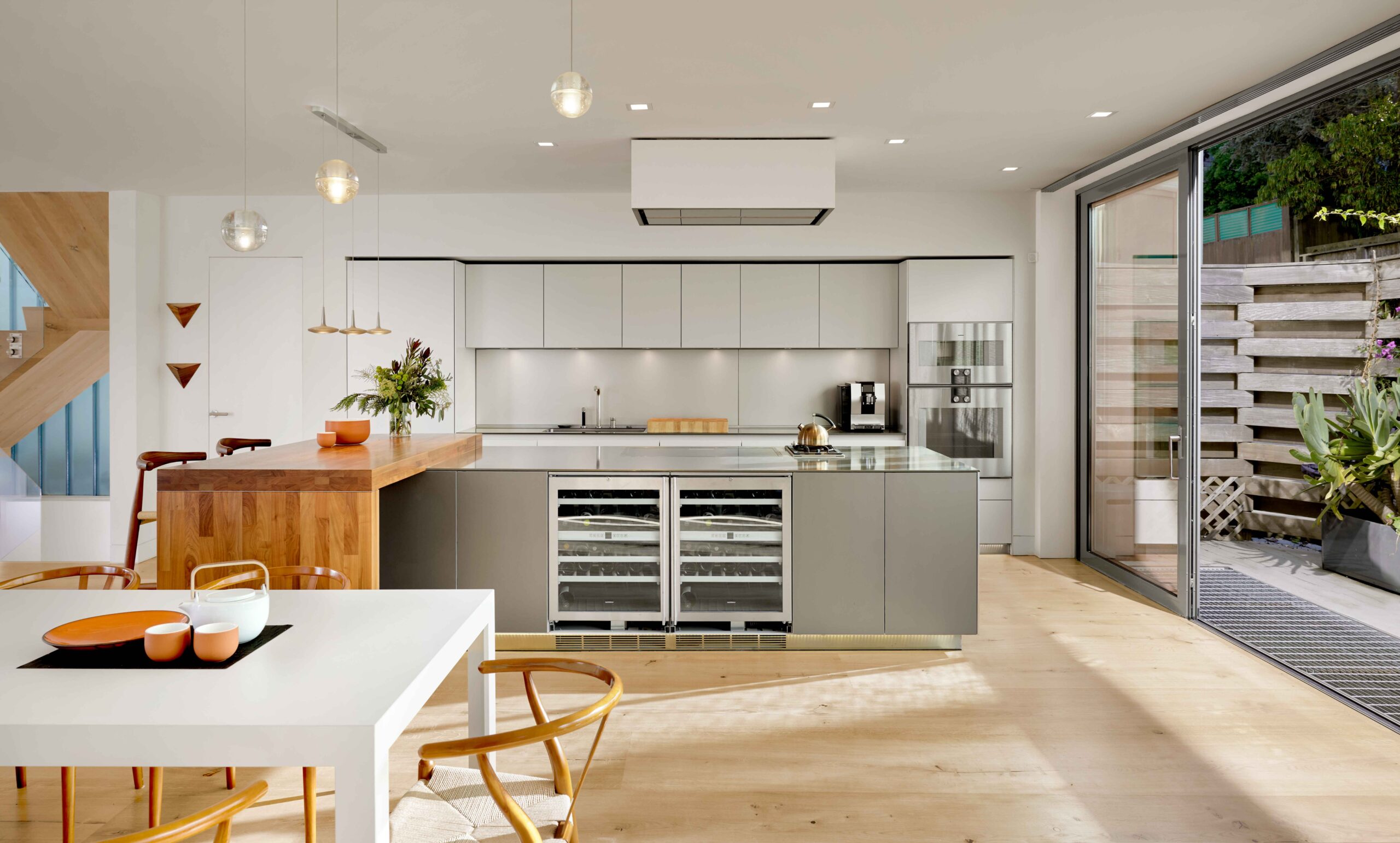
Metamorphosis of Space
Its lower floor was a buried basement and unused space that further called for a total landscape and architectural reconfiguration: bedrooms were added, bathrooms and all the floors were gutted to start over. A vast seismic overhaul allowed us to open up the structure to create a flowing “Raumplan” that tied the sunny rear South-West paseo entry and new patio sitting areas into the kitchen, all the way through to the 70 mm Dolby-Stereo view to the North West across dining and living rooms all connected to the vista.

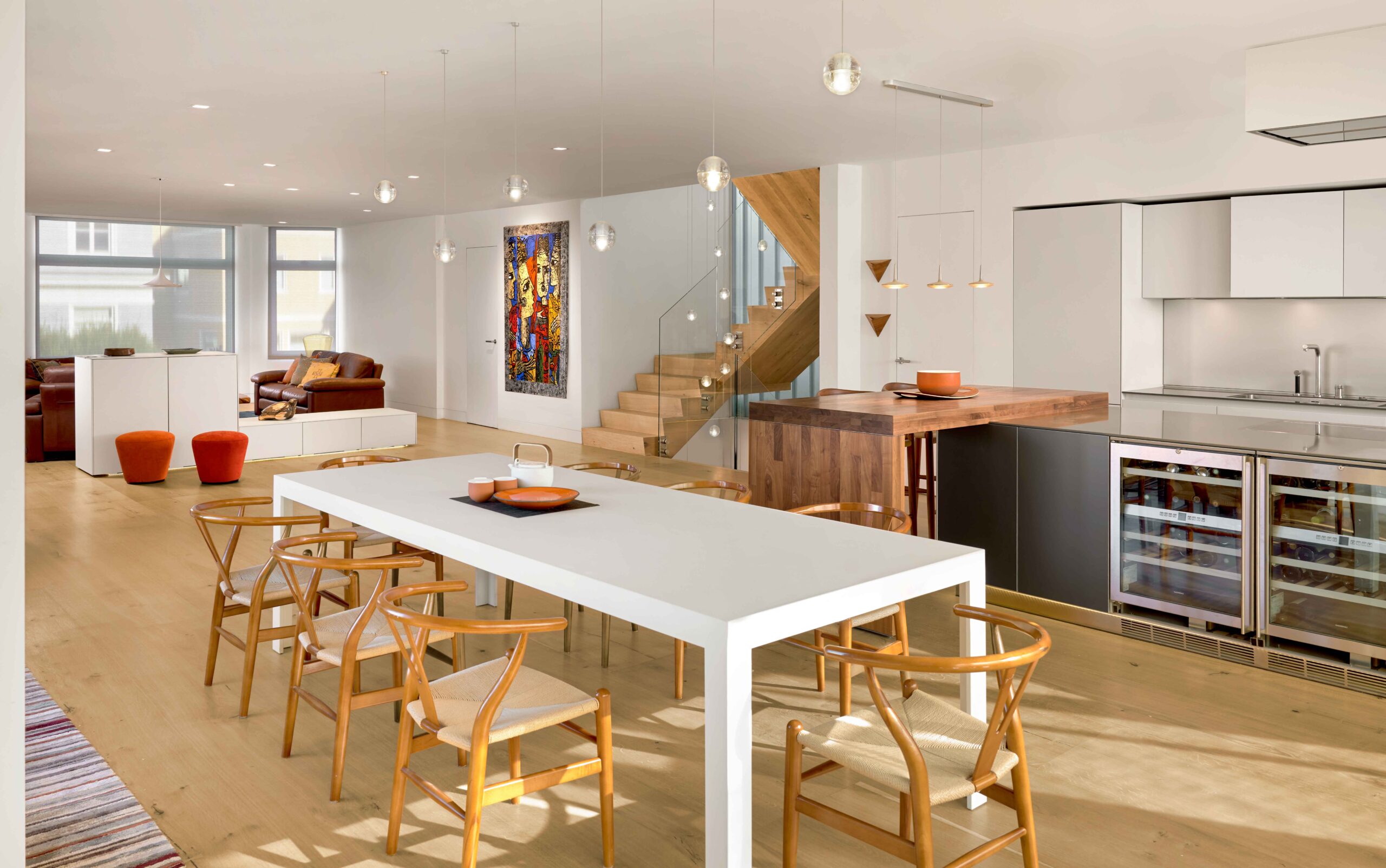
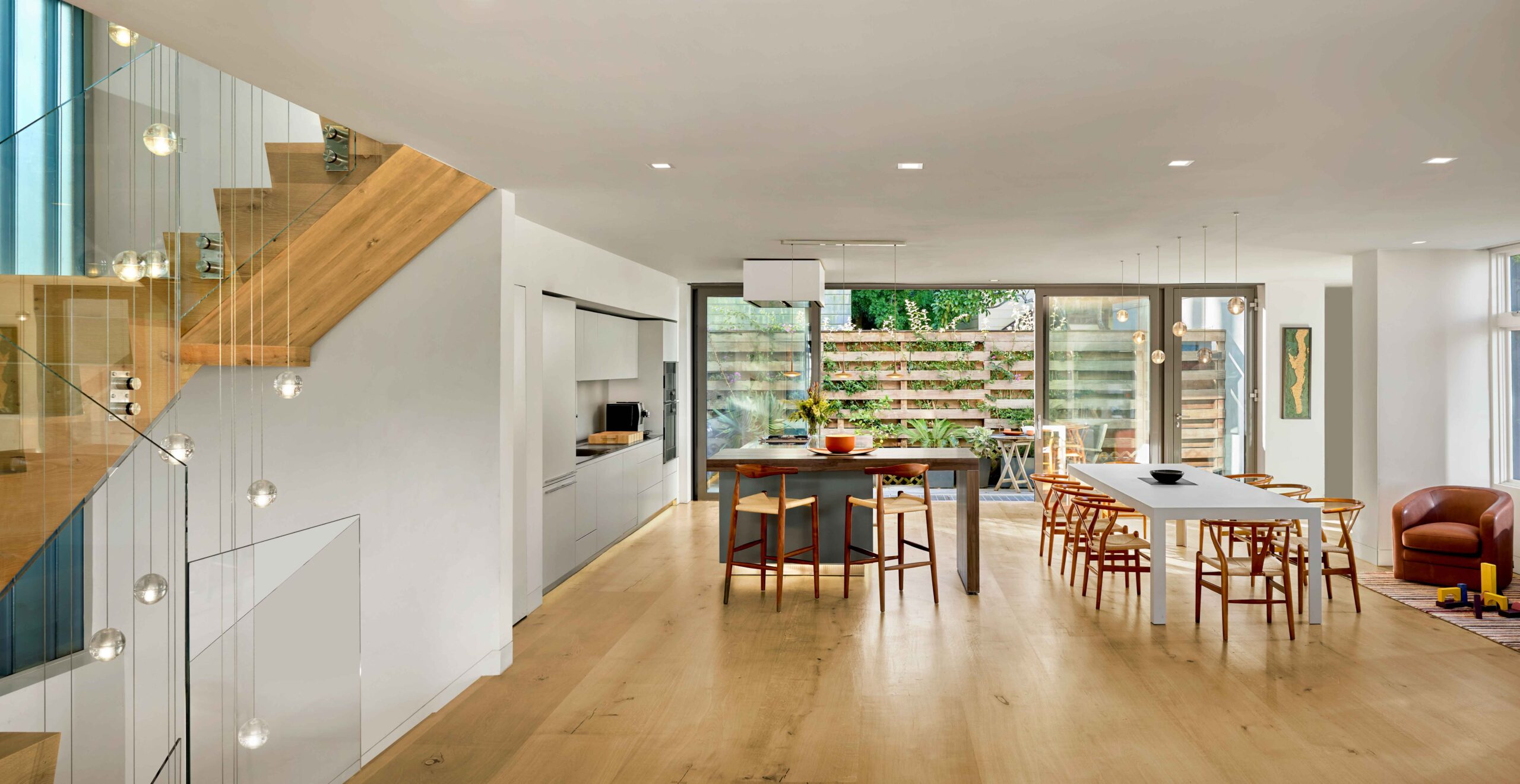
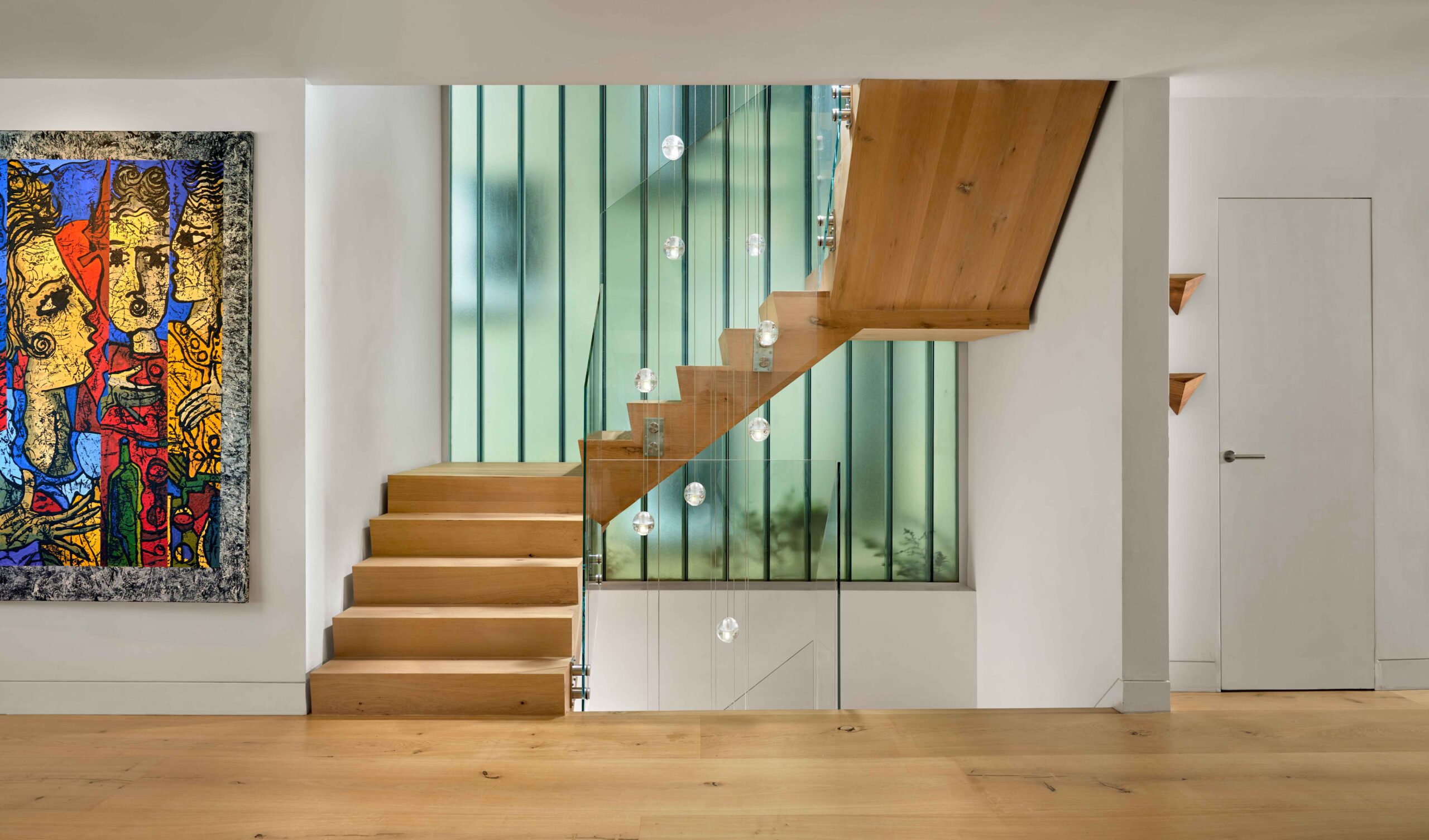
A Tower of Sunlight
A new central stair was carved from the side of the structure. Clad in fluted channel glass ‘beams’ it creates a vertical sculpture of a solid wood monolith spiraling through a tower of light from the roof deck into the wine cellar and cozy sitting rooms that share the lower private family garden level. Bathrooms with Italian floor-to-ceiling single porcelain sheet tiles, and European solid wide plank floors, help to simplify surfaces, and allow the rooms to breathe in light and float on the soft warmth of natural materials on all three levels.
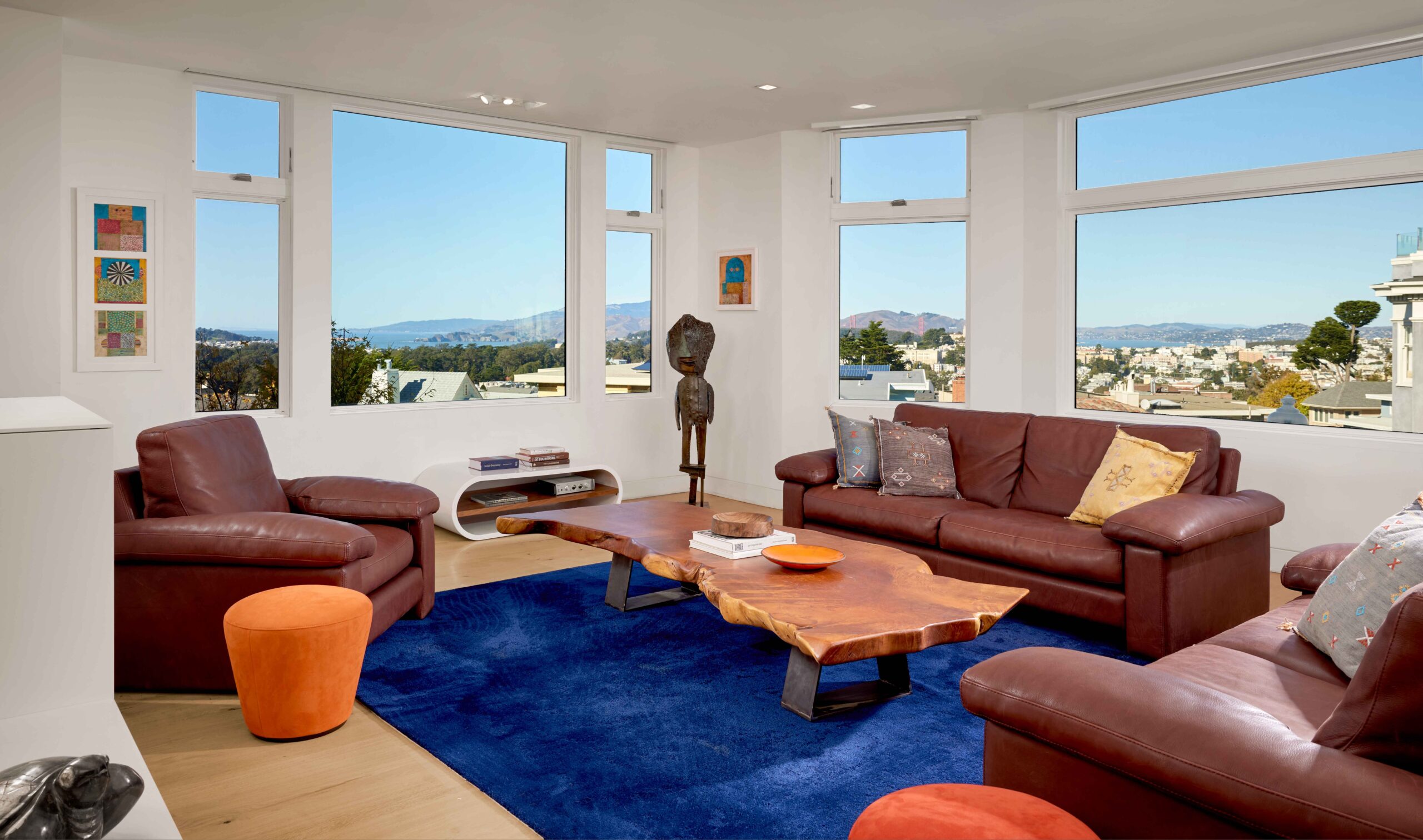
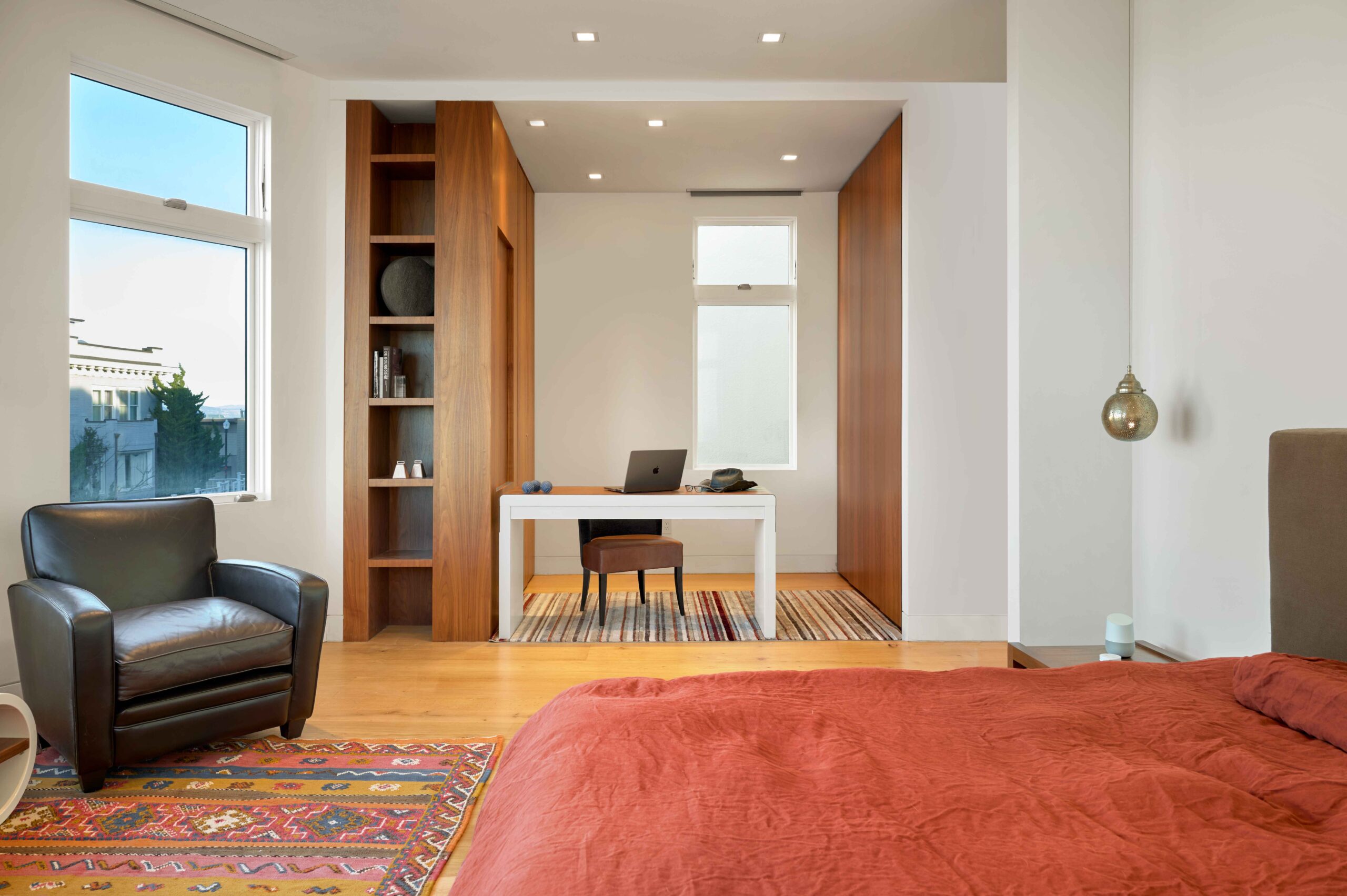
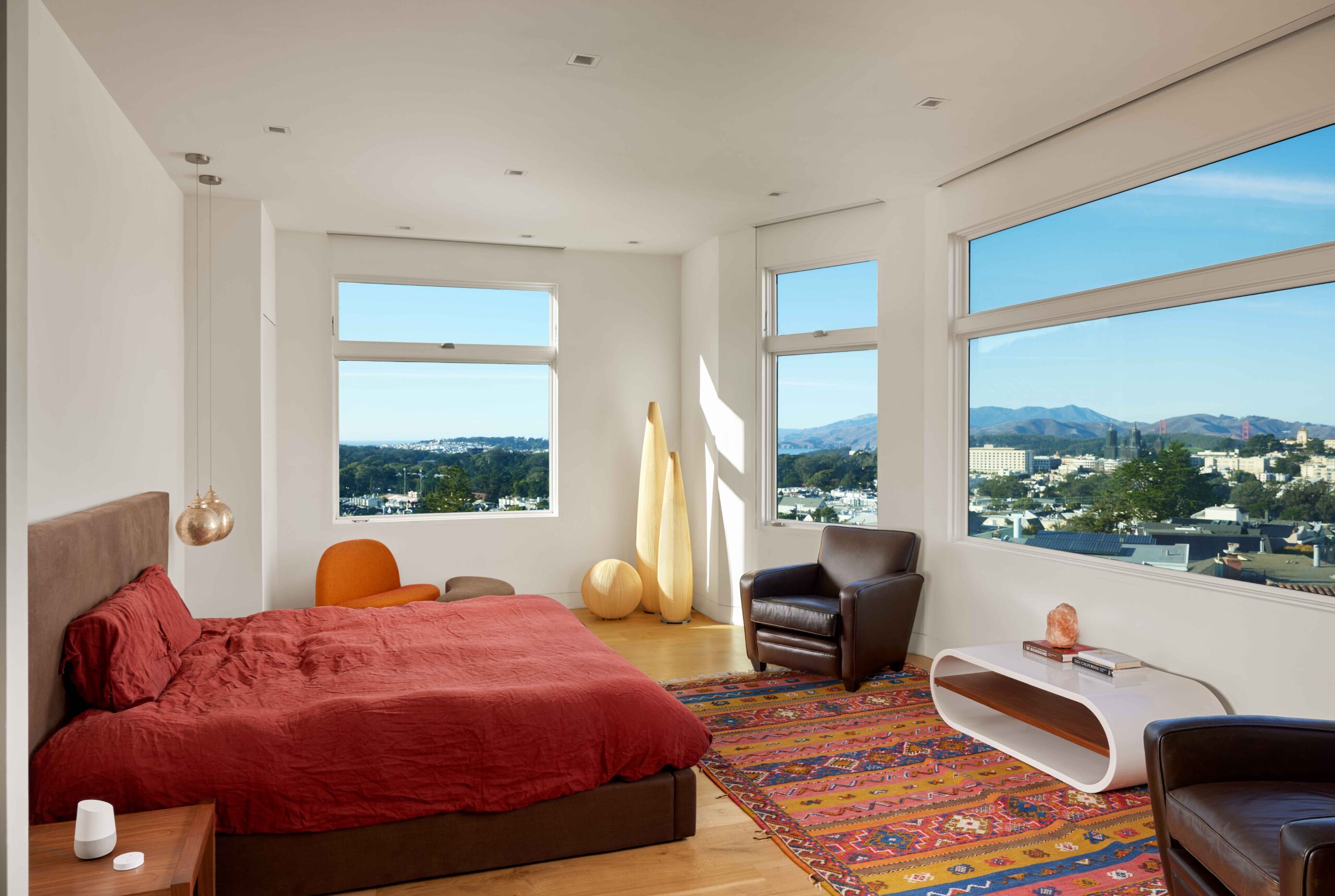
A Garden Lot
The Garden wraps the home in this generous lot and connects through large French doors to the lower level connecting bedrooms and family rec-rooms to the exterior play area at the lowest level where the hanging glass droplets of light end their cascade from the rooftop atrium down through pine of the new modern home.
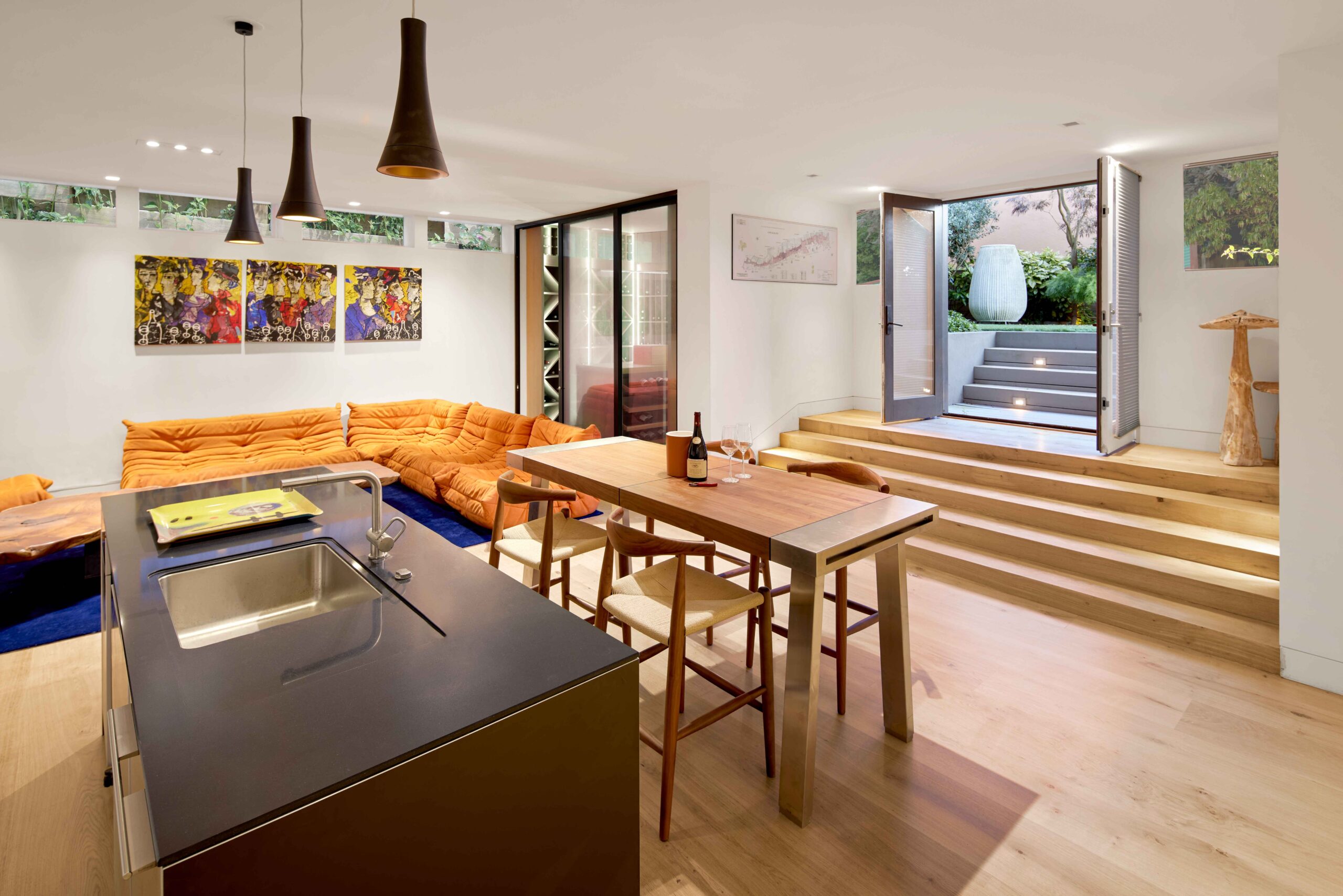
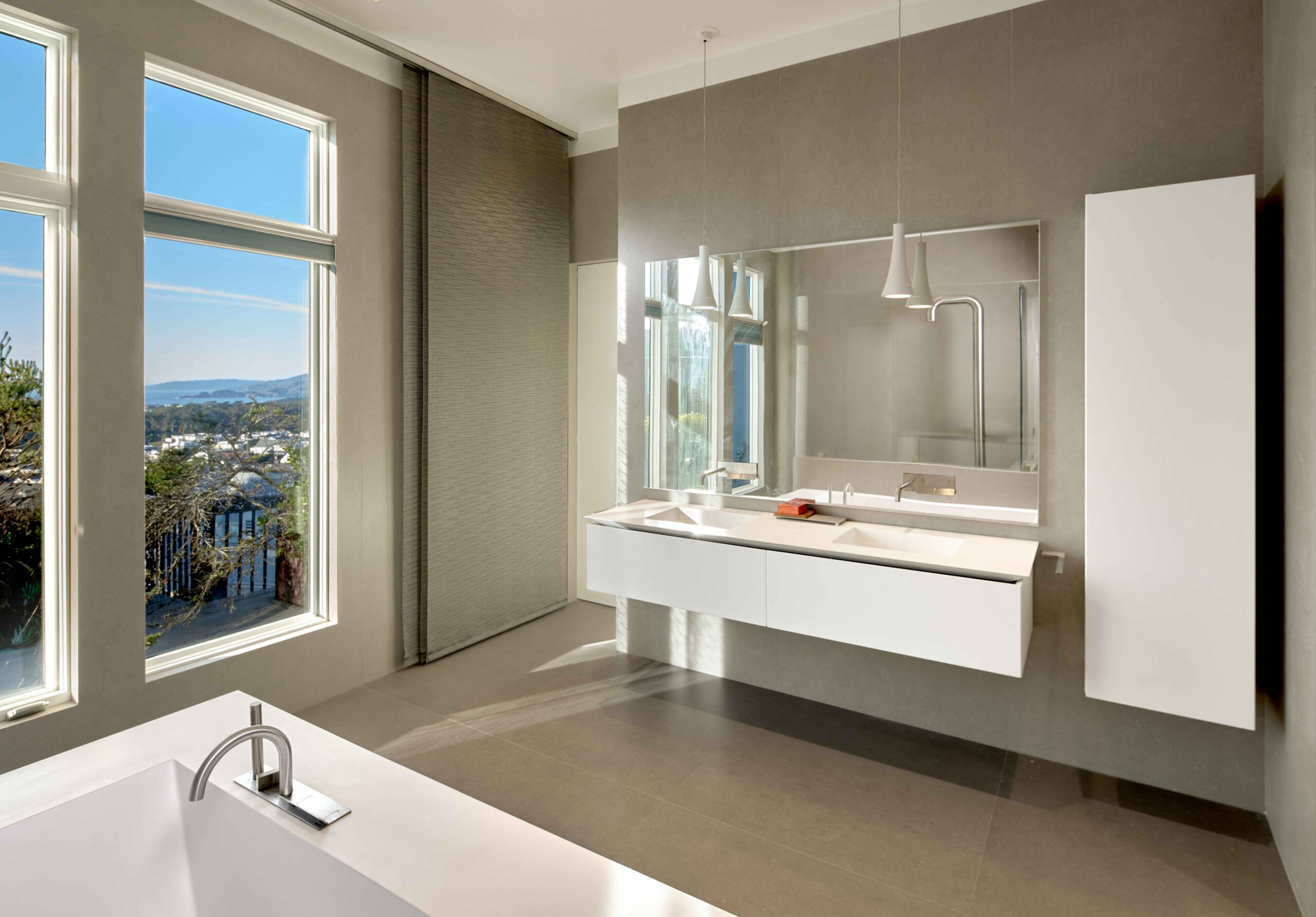
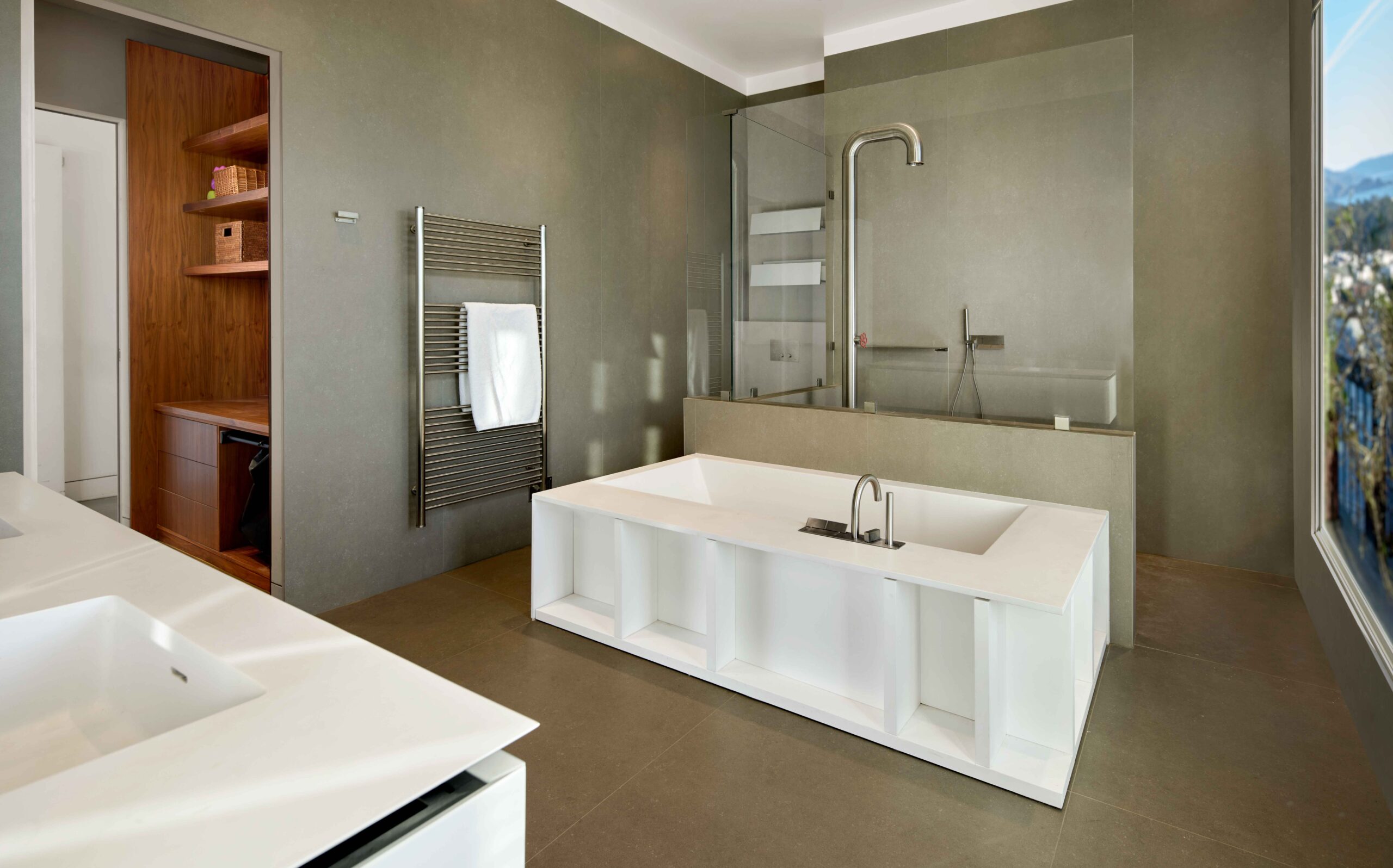
Healdsburg Guest House
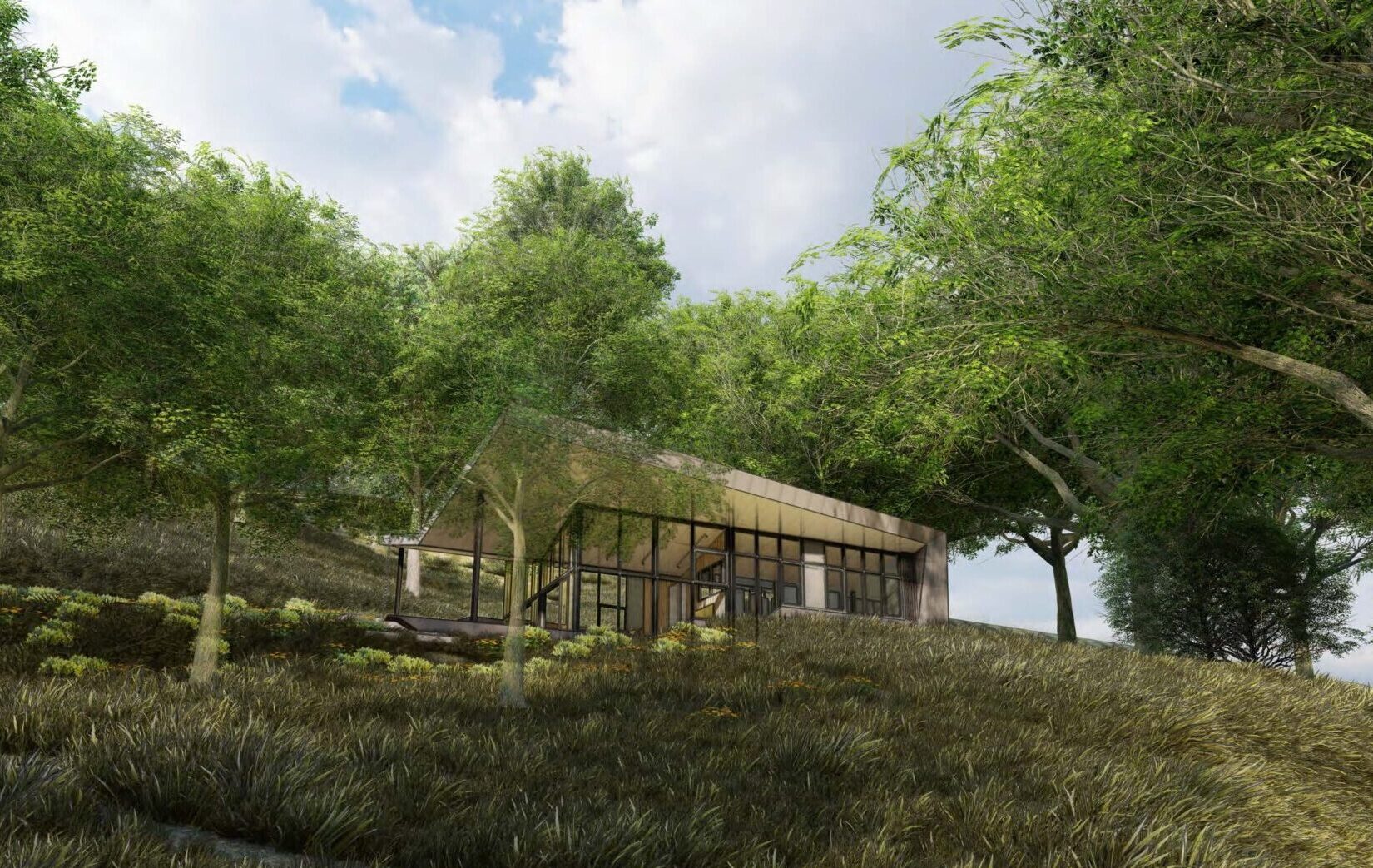
Building Into the Hillside
This new accessory dwelling is sited along a woodland path that leads from the larger main home to a favorite upland swimming spring on this 200-acre property in unincorporated Healdsburg, located deep in the Sonoma Valley foothills of Mount Jackson. The efficient open plan is split-level and partially buried into the sloping site allowing the private” Bedroom Block” to be elevated from the open “Living Porch” which extends outwards into the patio garden beyond the tall glazed surfaces extending the interior space under a wide cantilevered folded roof embracing the larger landscape and abundant open space.
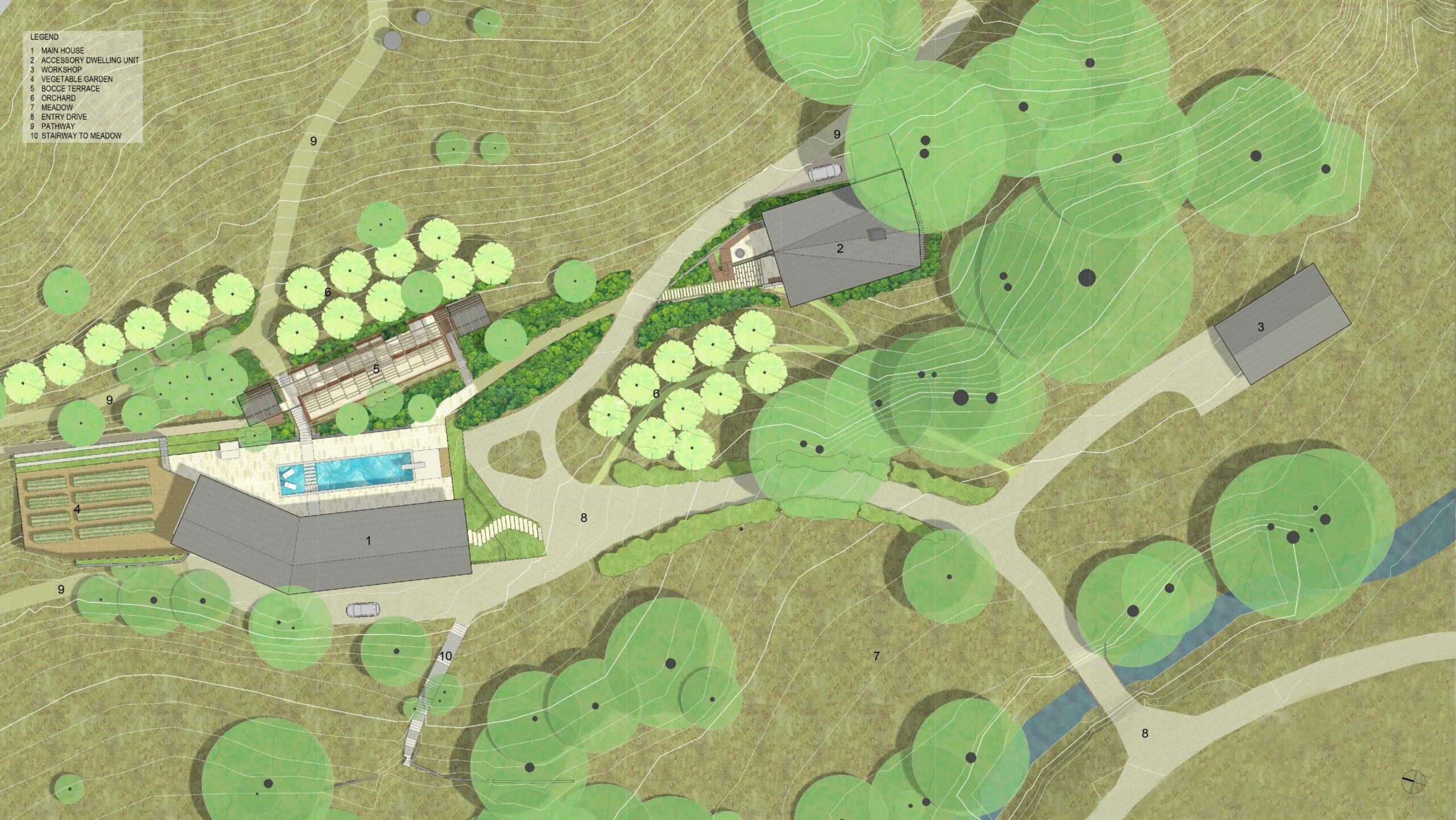
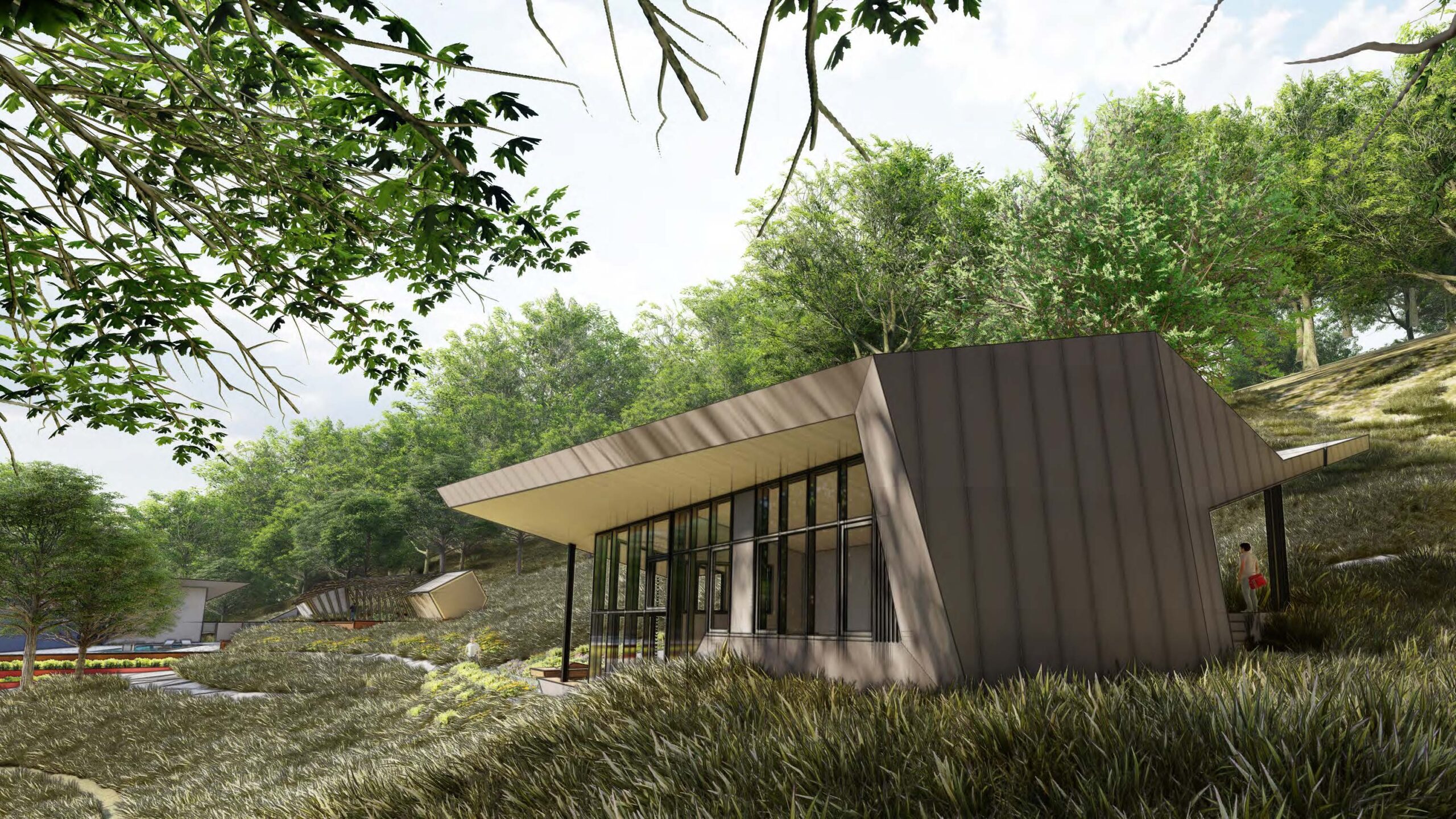
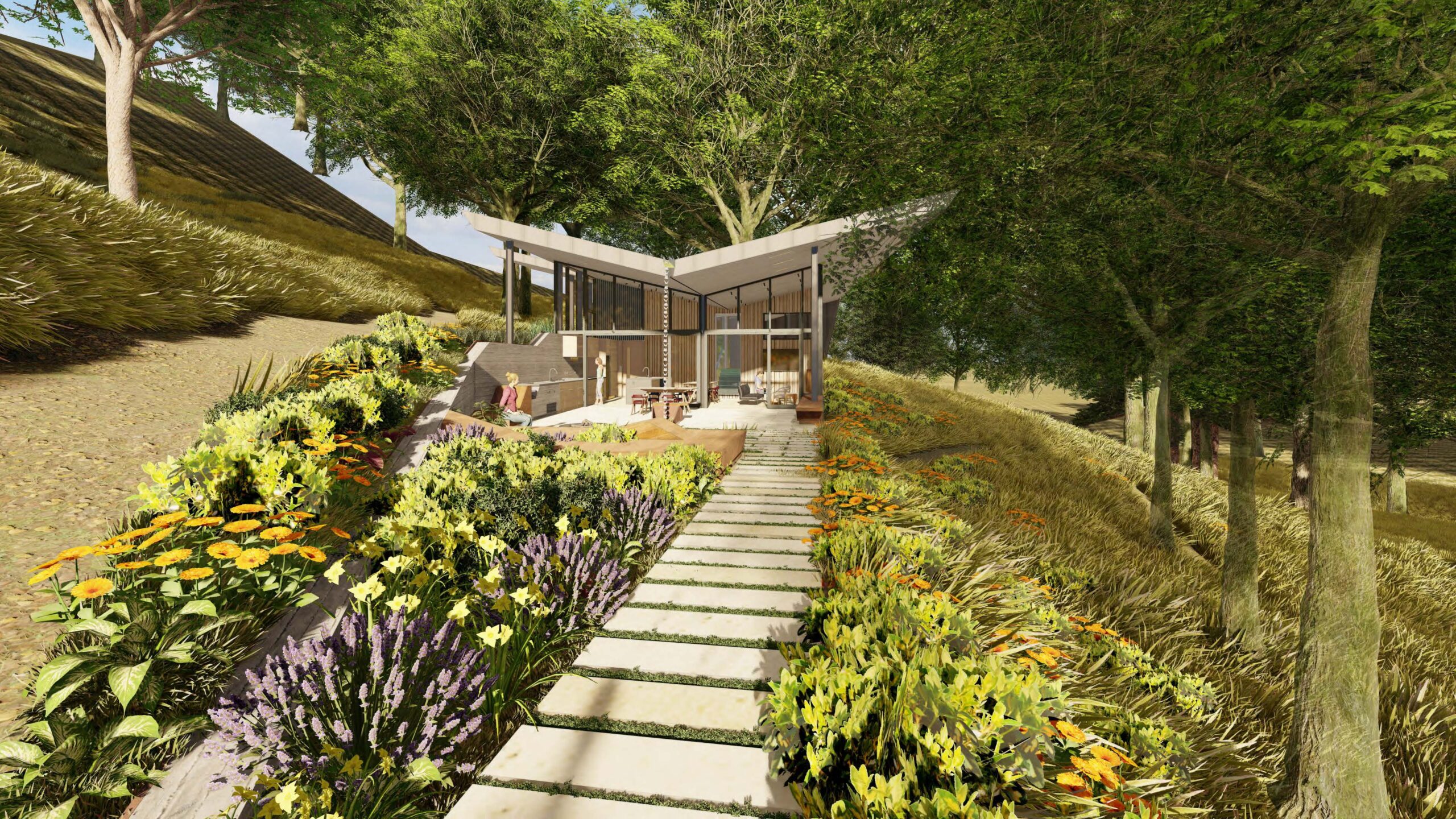
En-Folded towards the Light
The butterfly-roof form allows views to the sun-speckled uphill meadows and also downhill towards the high mountain ridged horizon beyond the creek, where meadows cascade towards the road below, over orchards and gardens that serve the home. The Metal Roofs form an open shell that descends to enclose the rear forest-facing bedroom wing of the house while opening like wings to reveal the interior soft wood soffits that extend the interior ceilings outwards into the landscape.
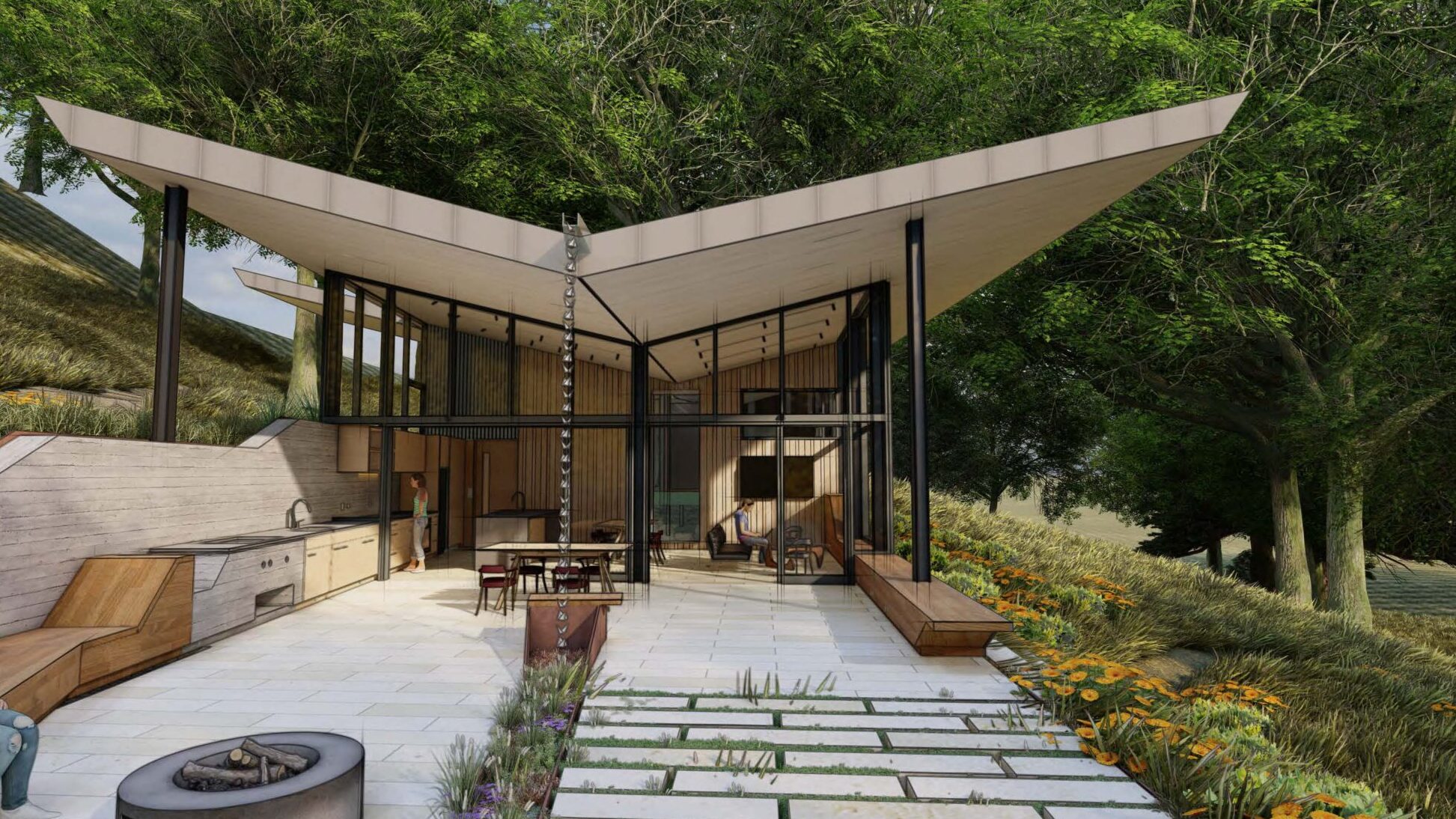
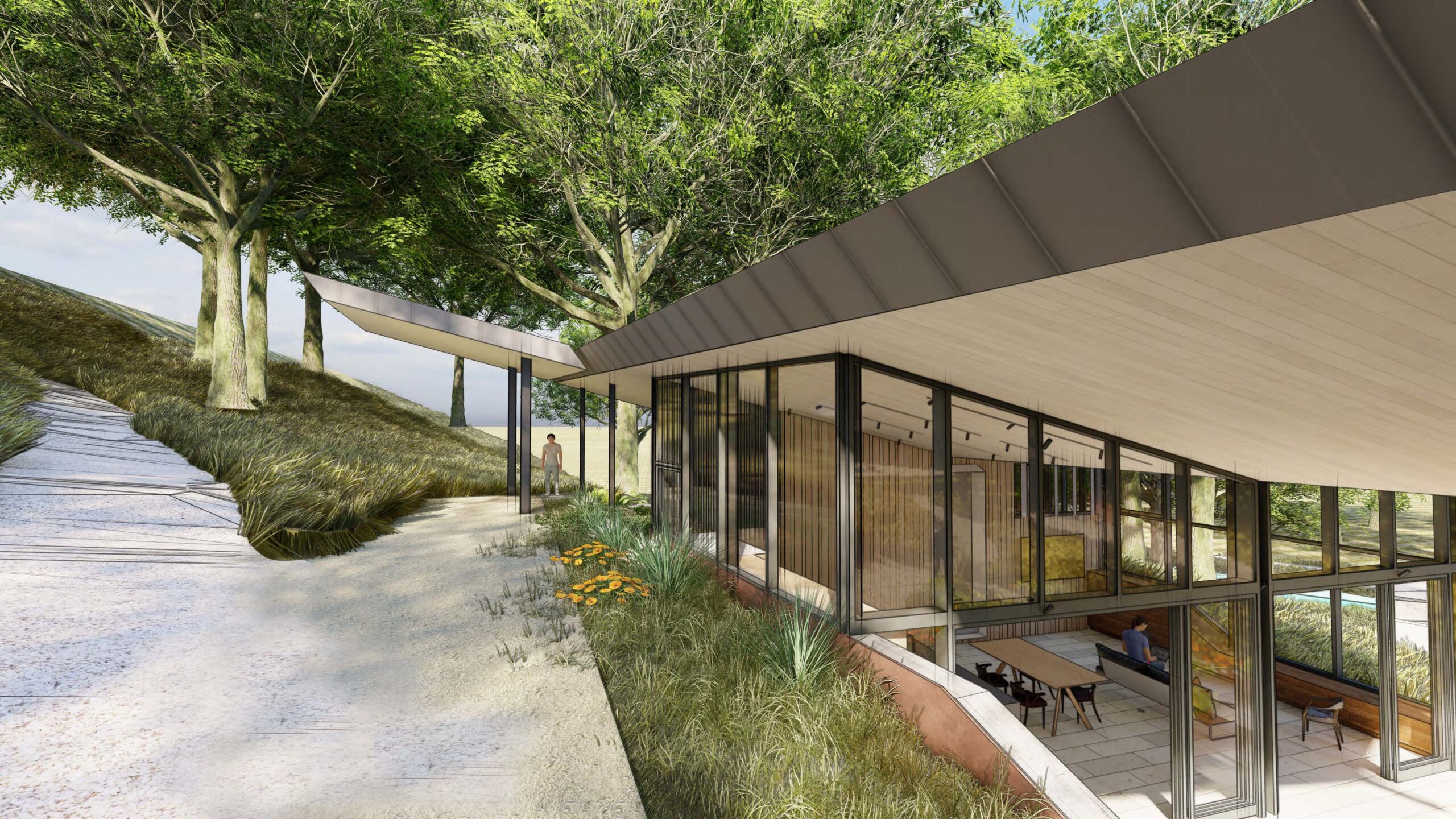
Exterior Connected Living
The exterior finishes travel inside just as those within travel outwards – and there is a breezy openness to the home that allows the family to live “outside” within the cozy, warmly textured interior. The bench-low walls extend the indoor kitchen outwards to an exterior kitchen and second living room focused on wide wood benches and a protected fire pit that catches the last rays of the setting sun each day.
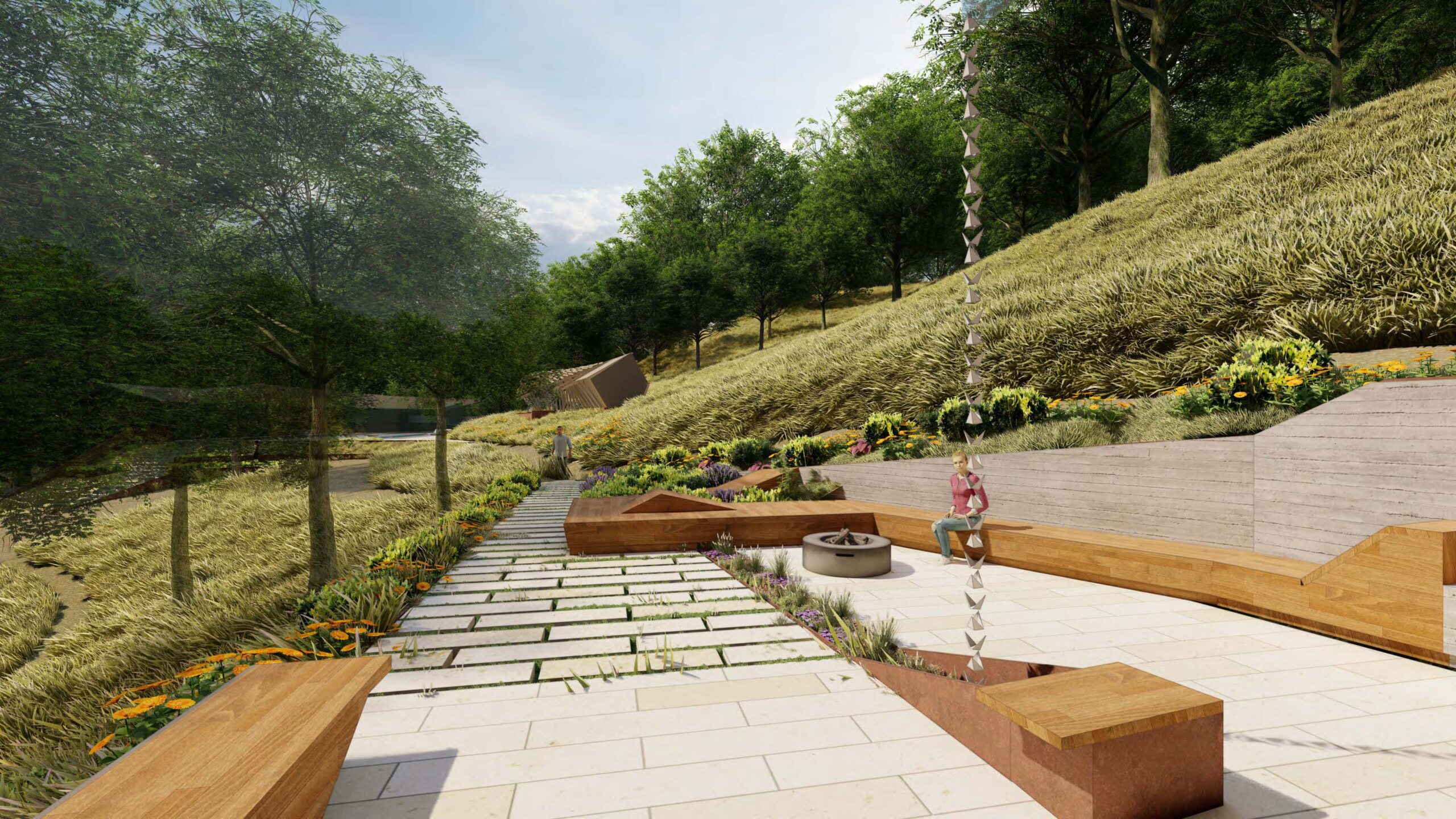
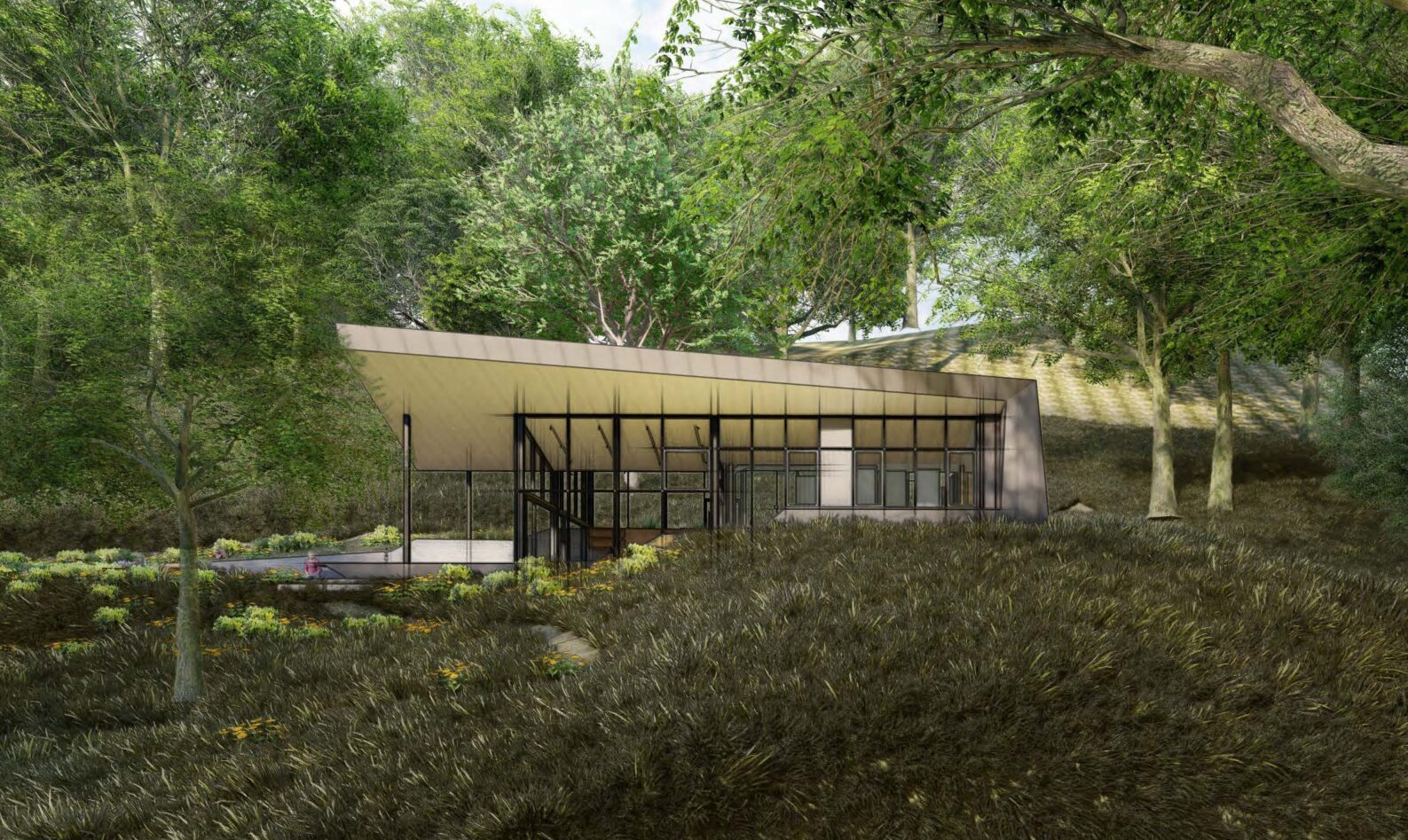
A Water’s Tale
The Solar paneled roof also collects and concentrates water towards the patio garden and herb beds that line the entry path beside the sunny orchards. A small corten steel channel bisects the patio social space becoming a vertical water feature with every storm while channeling water to the south where the gardens surround the sitting areas, pathways, and gathering spaces.

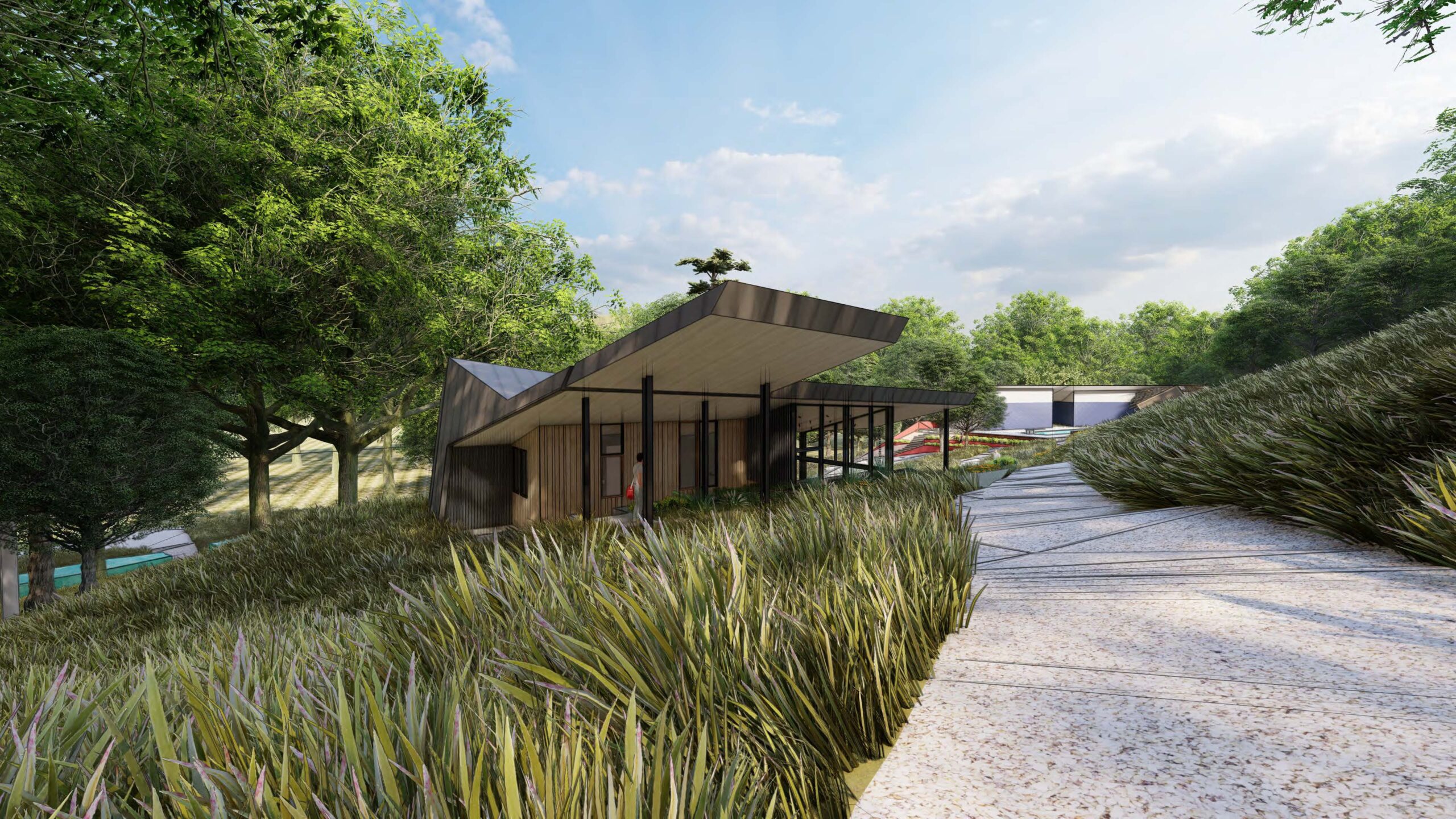
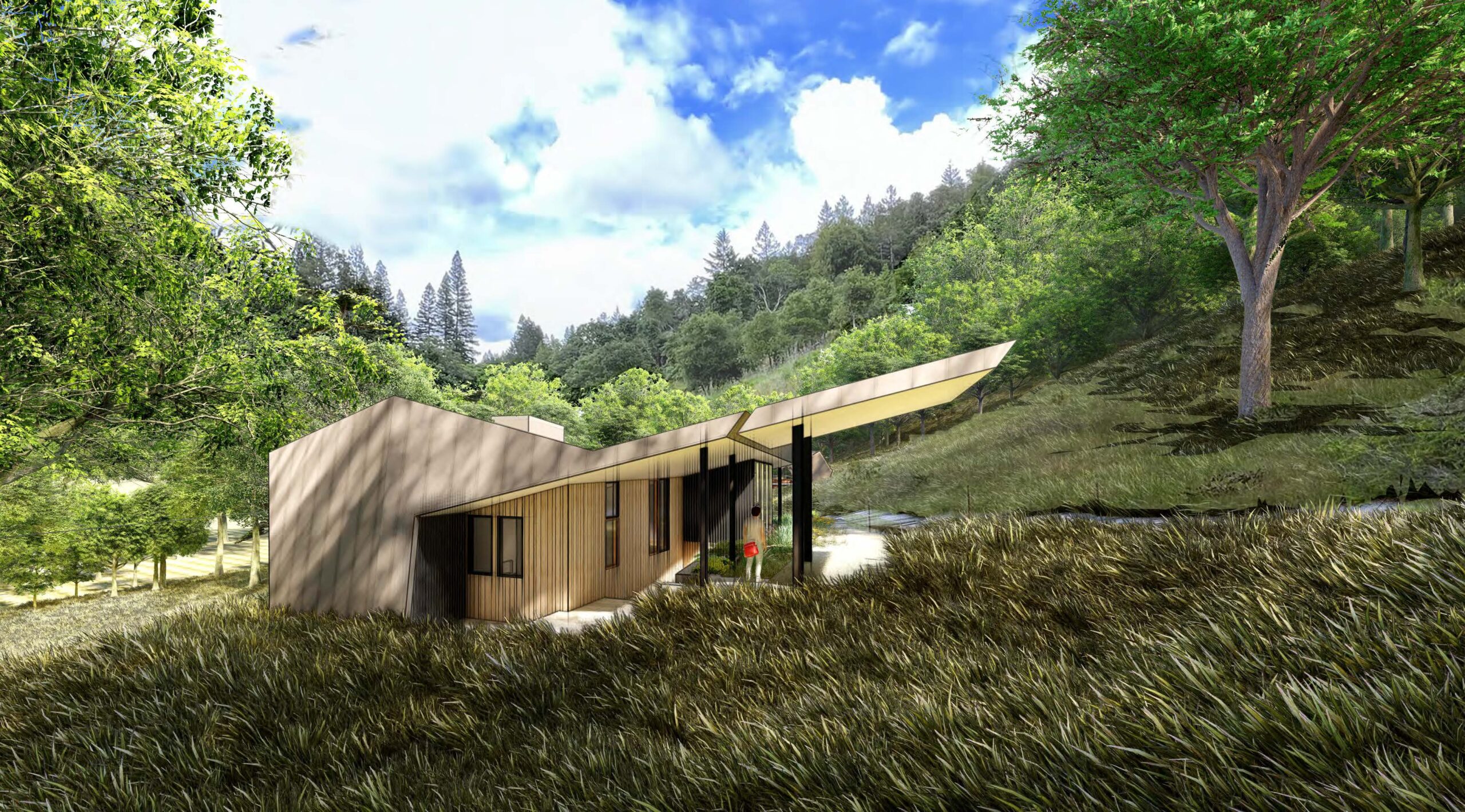
Location:
Owner/Client:
Scope:
Status:
Park Pavilions
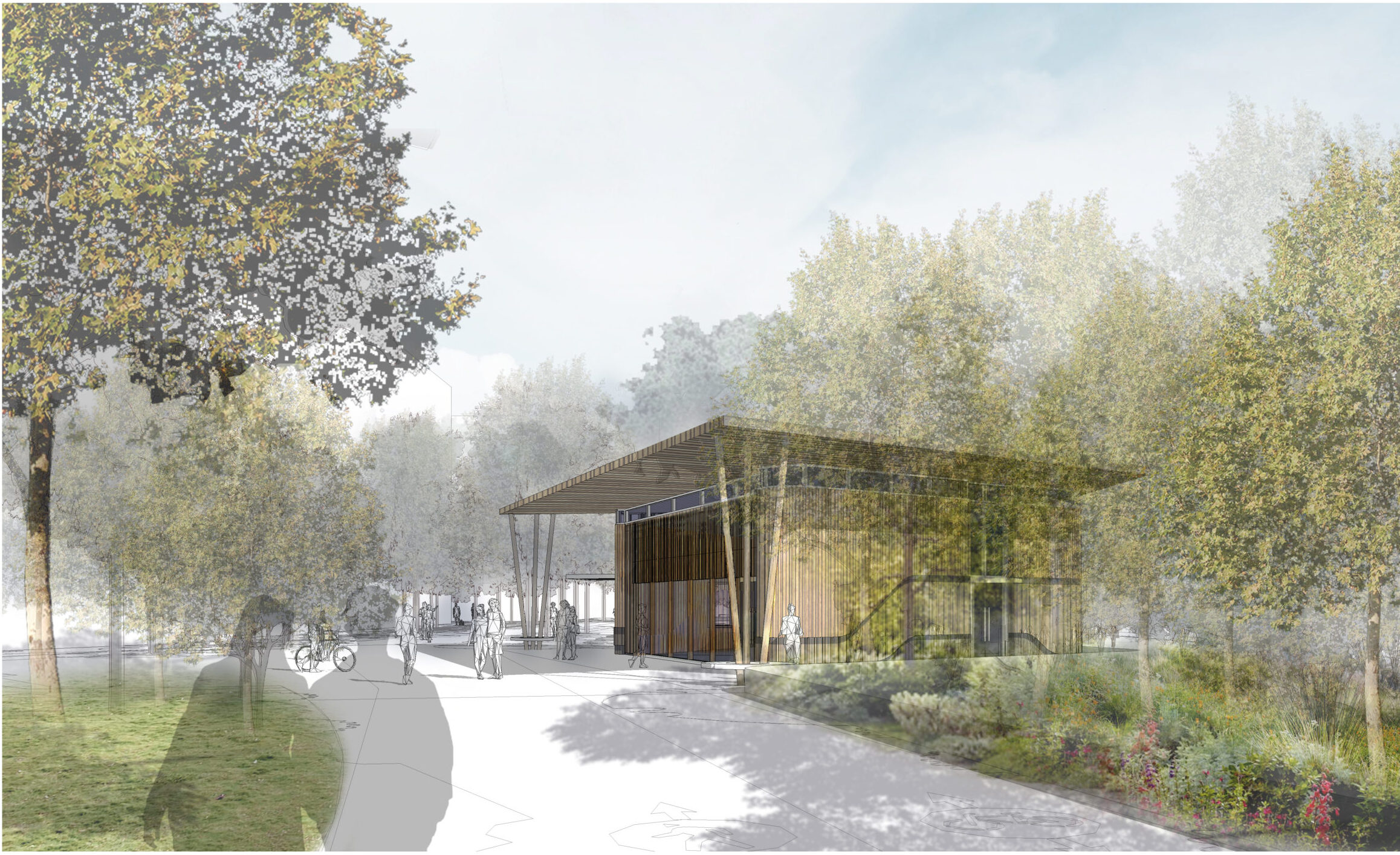
A Forest of Buildings
A new planned community serving thousands of new homes in mixed-use development will have as its central feature a large park that borders a regional transit line station. INTERSTICE was asked to design a series of five separate park structures from a shared Community Center, Food kiosk, Community Garden Trellis, Art Focused Orientation Beacon, and Transit Shelter that would be distributed along the 32-acre linear Park Promenade. The Park is to be a new forested amenity for the many medium-density buildings planned over the next ten years serving as the heart of the community-shared public commons.

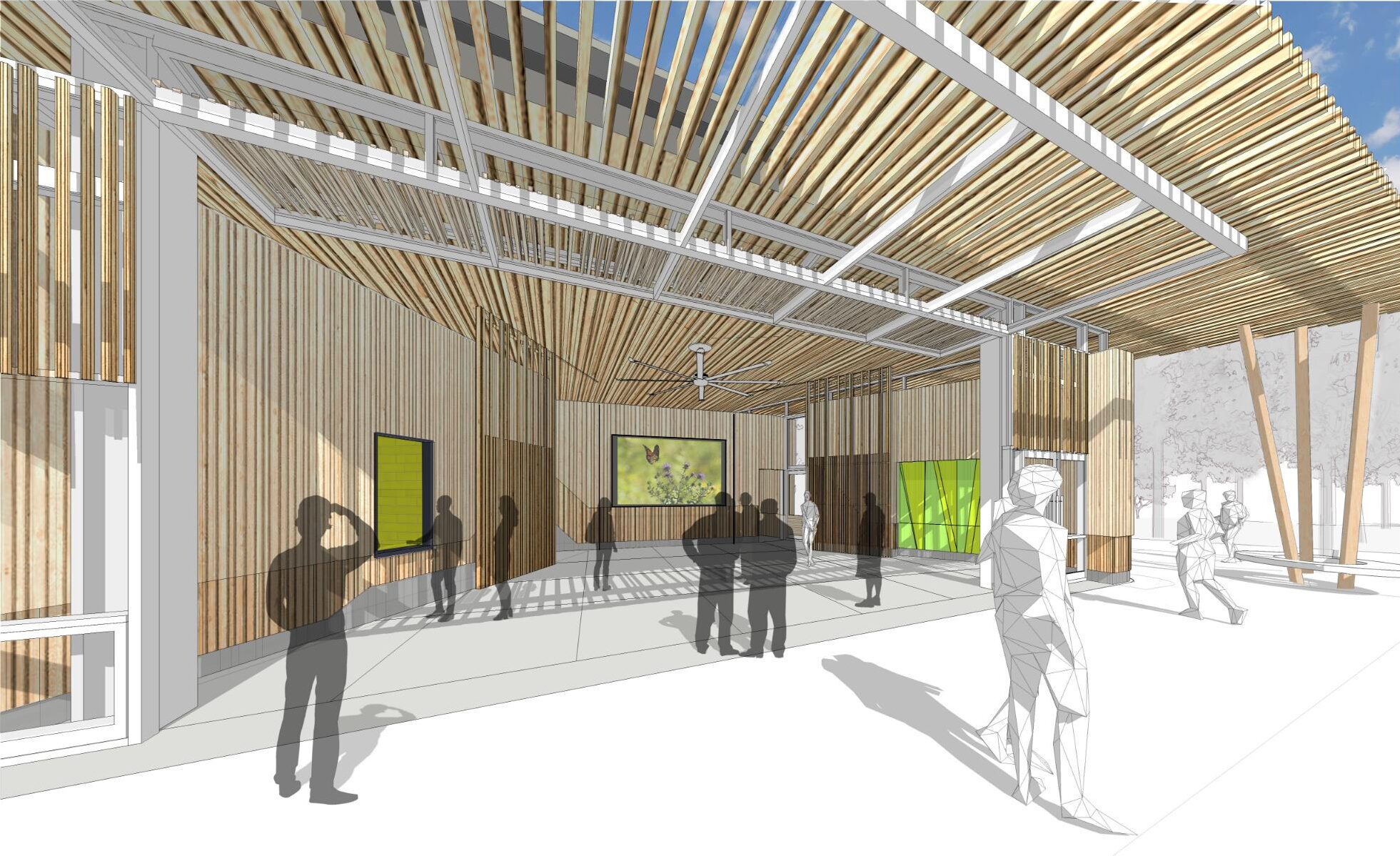
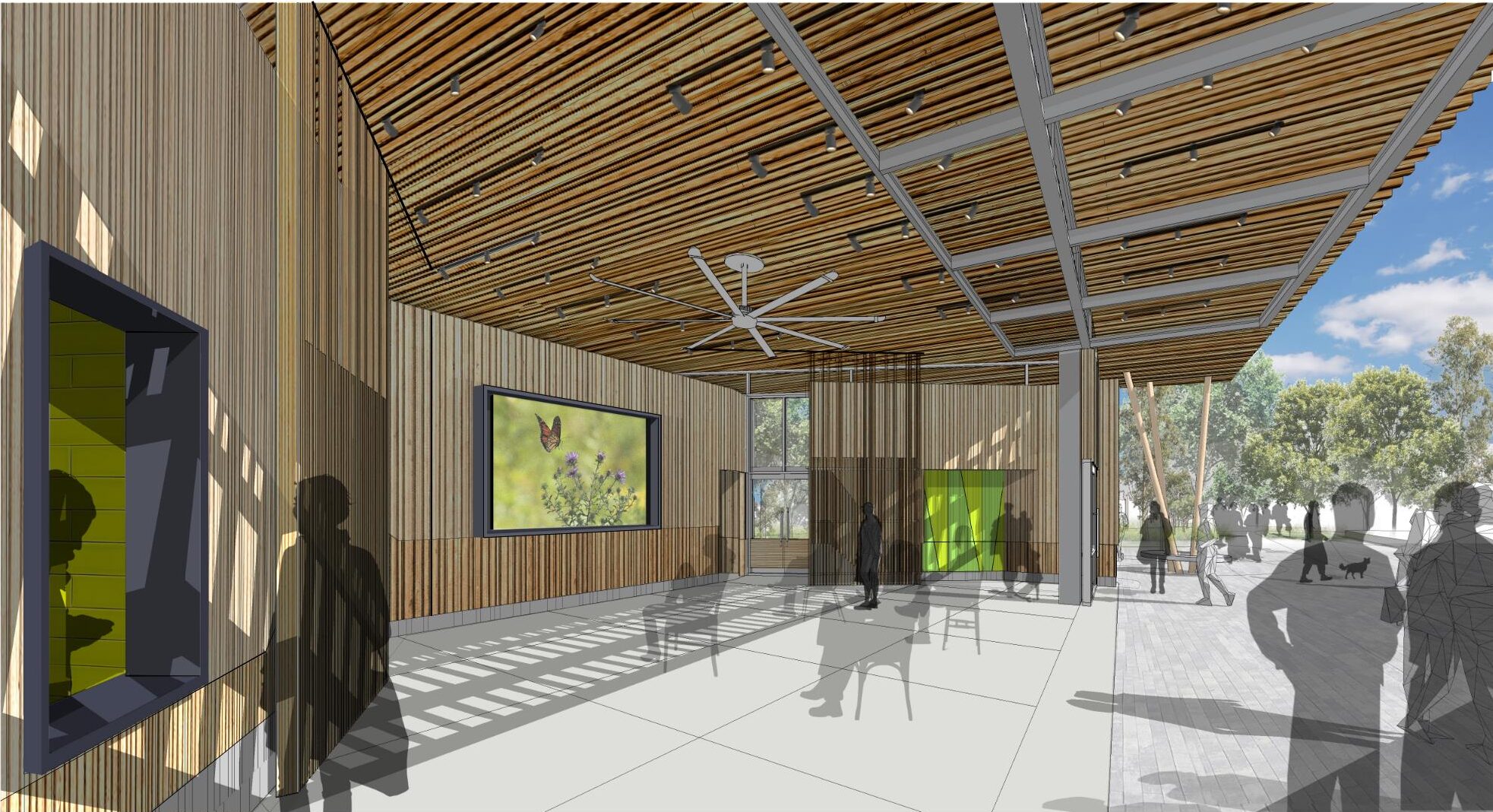
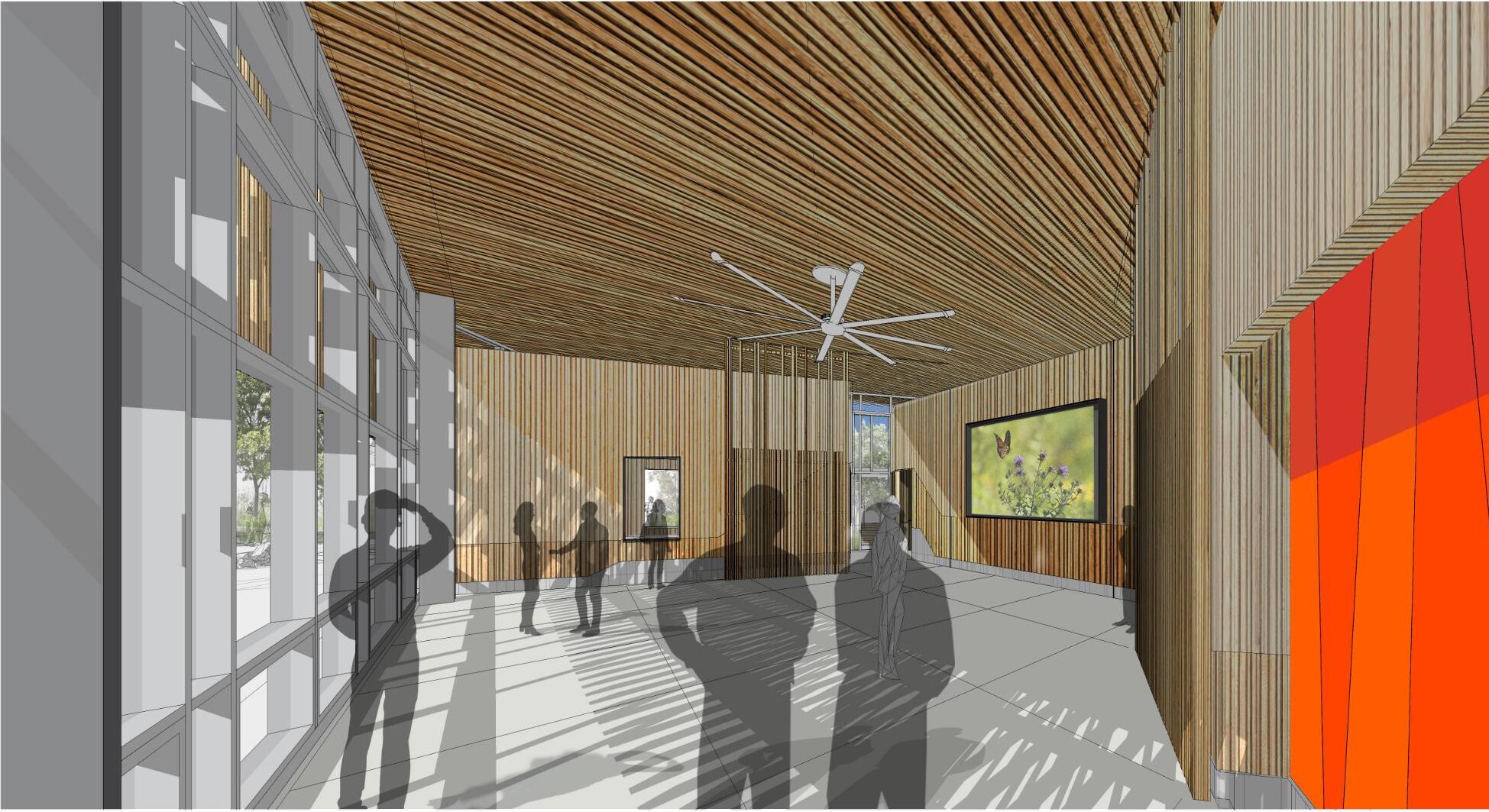
In this early design phase, three of the structures were developed to be complementary multi-use public pavilions with a shared architectural expression and formal language designed within the evolving forest and its maturation over time. The soft curvilinear forms clad in reclaimed woods from the surrounding landscape will blend into and extend the forest canopy of shade and filtered light.
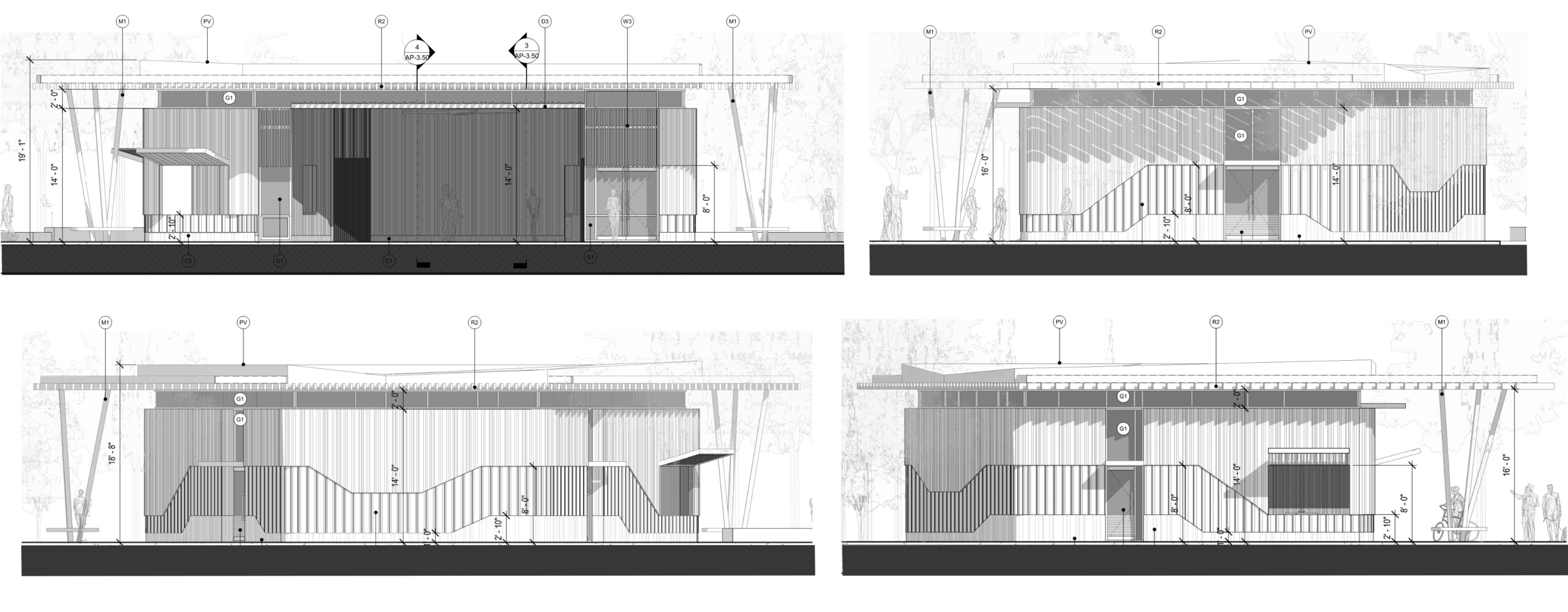



The porosity and shape of the pavilions allow for them to be read as both inhabitable “trunks” within the larger forest, and as porous social filters allowing space to flow between and around them; merging inside and outside spaces through dynamic walls and deep overhangs – while at night becoming lanterns that sparkle and glow within the parks seasonal vocabulary of change.
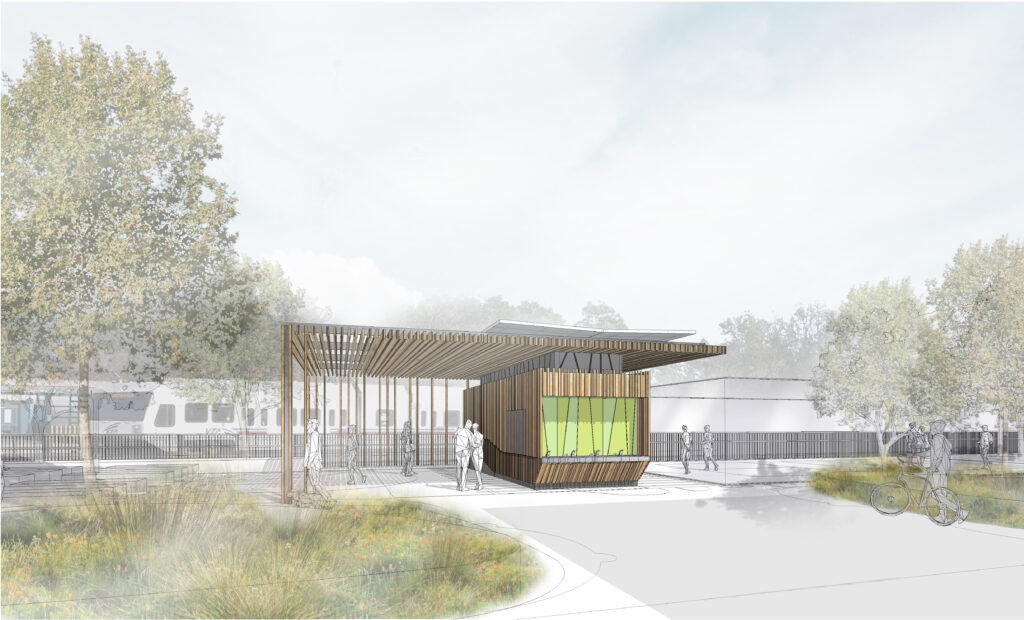
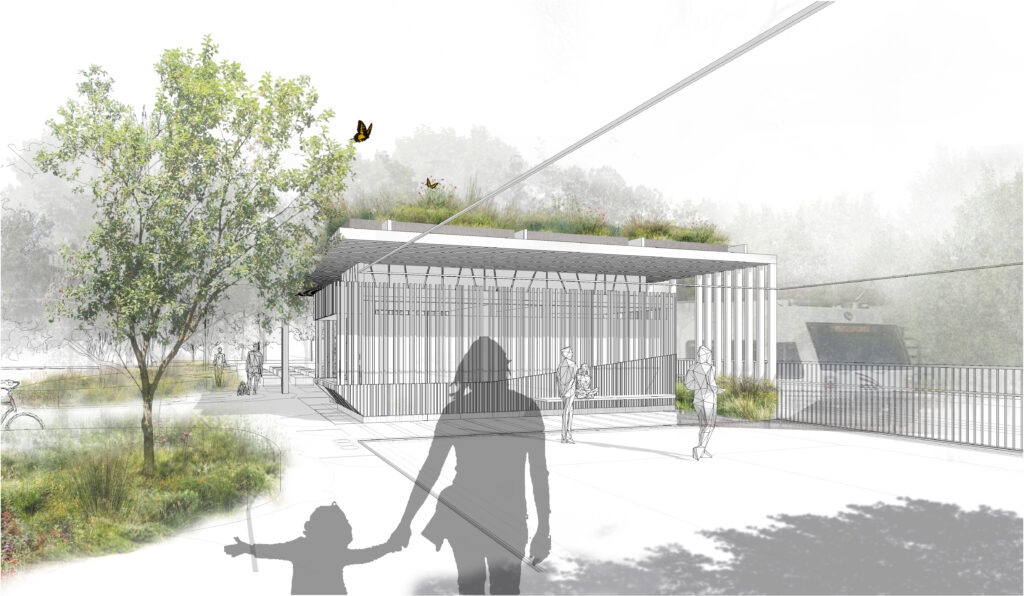
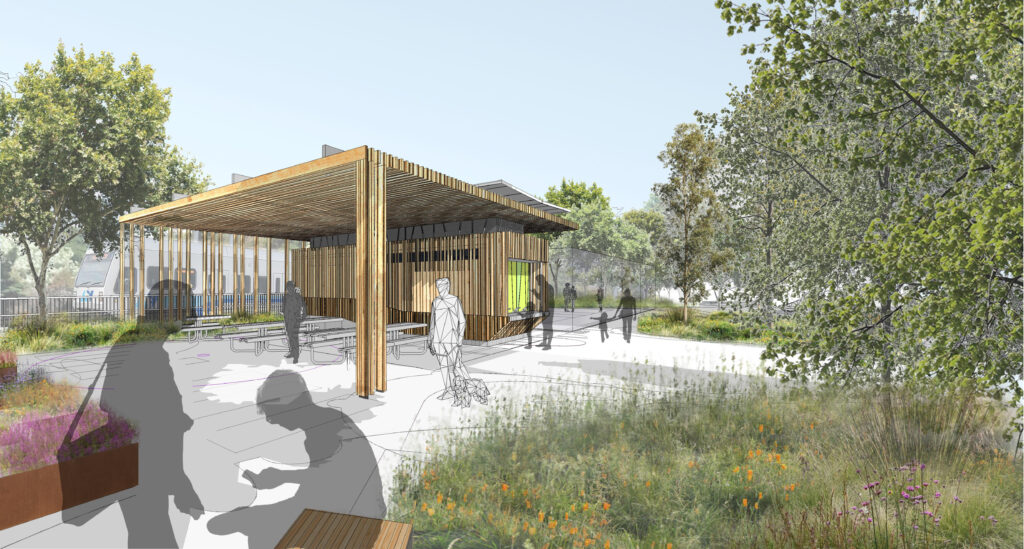
Location: Mountain View, CA
Owner/Client: Undisclosed Developer Joint Venture
Scope: Architecture
Status: Schematic Design
Project type: Civic/Institutional/Community
Russian River Residence
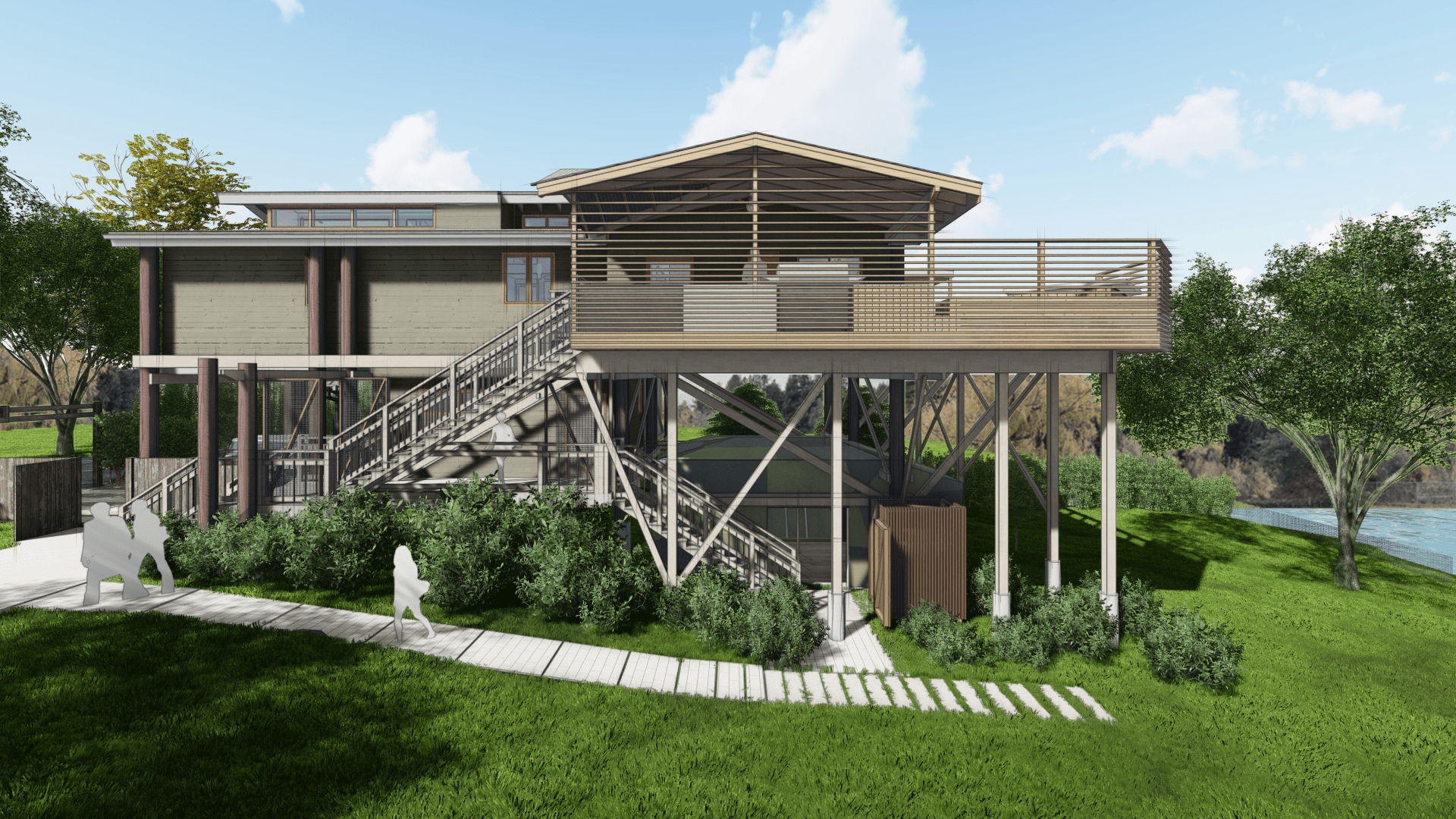
Elevated Housing
Up on stilts – to avoid the 100 year flood level the house is 30 feet up in the air – creating a ship-like detachment from elevated “deck” of this renovated house along the Russian River. Like a home perched between giant wood peers the original home is enlarged by INTERSTICE architects to provide a lighter, expanded home, better connected to the lake, and the new shared social spaces – some of which can occupy the comfortable shade of the flood zone volume “under the boardwalk.”
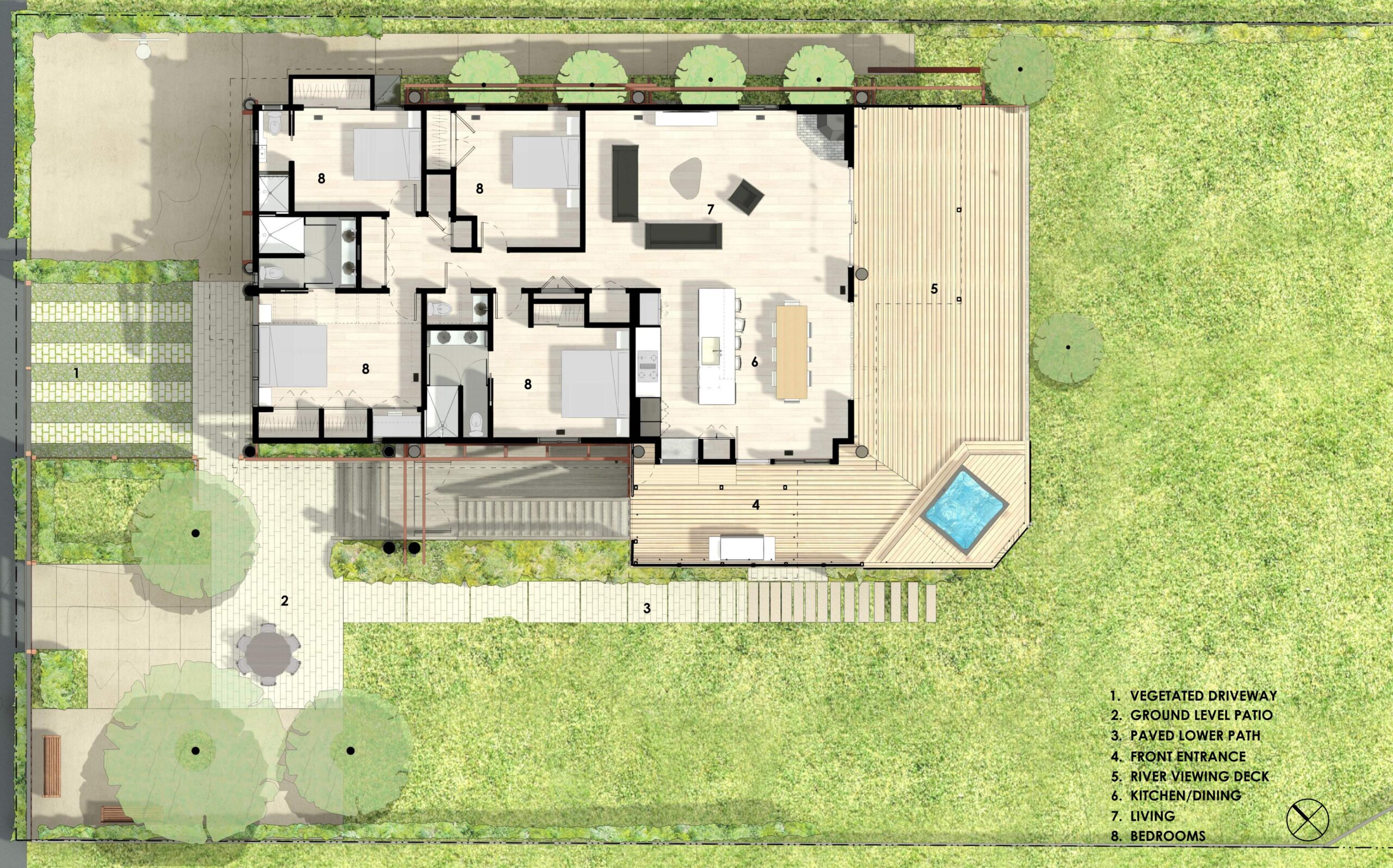
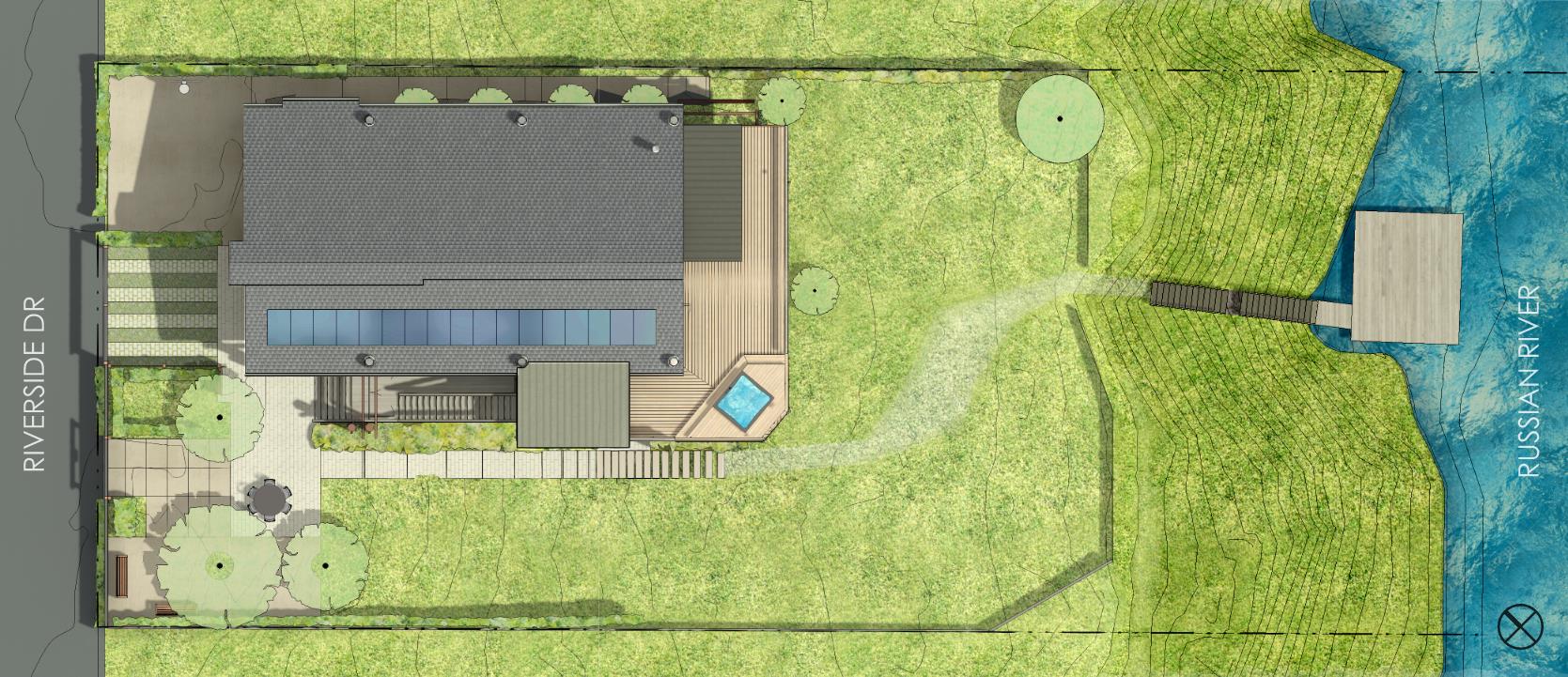
Extruding the Section
To honor the earlier structure INTERSTICE designed the extension to extruded the clerestory roof break so that it could provide an organizing feature for the new interiors – allowing light into the core areas of the home and connecting rooms – this element is then expressed as an entry feature toward the street. New stairs on peers allow an simple direct route past outdoor games porch, gardens, boat shed, utility and water-toy storage areas, all en-route from lake to house and back again.
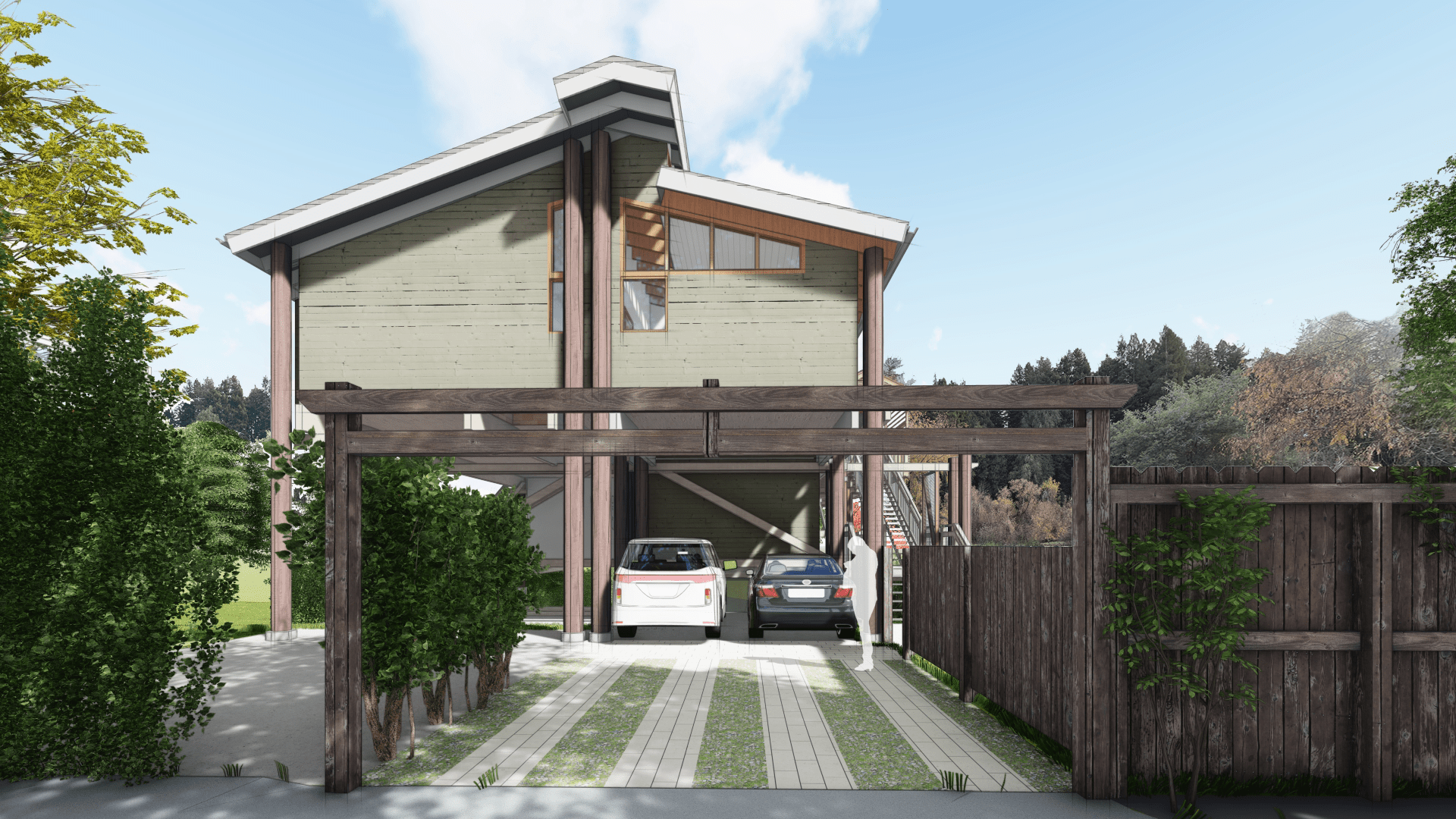

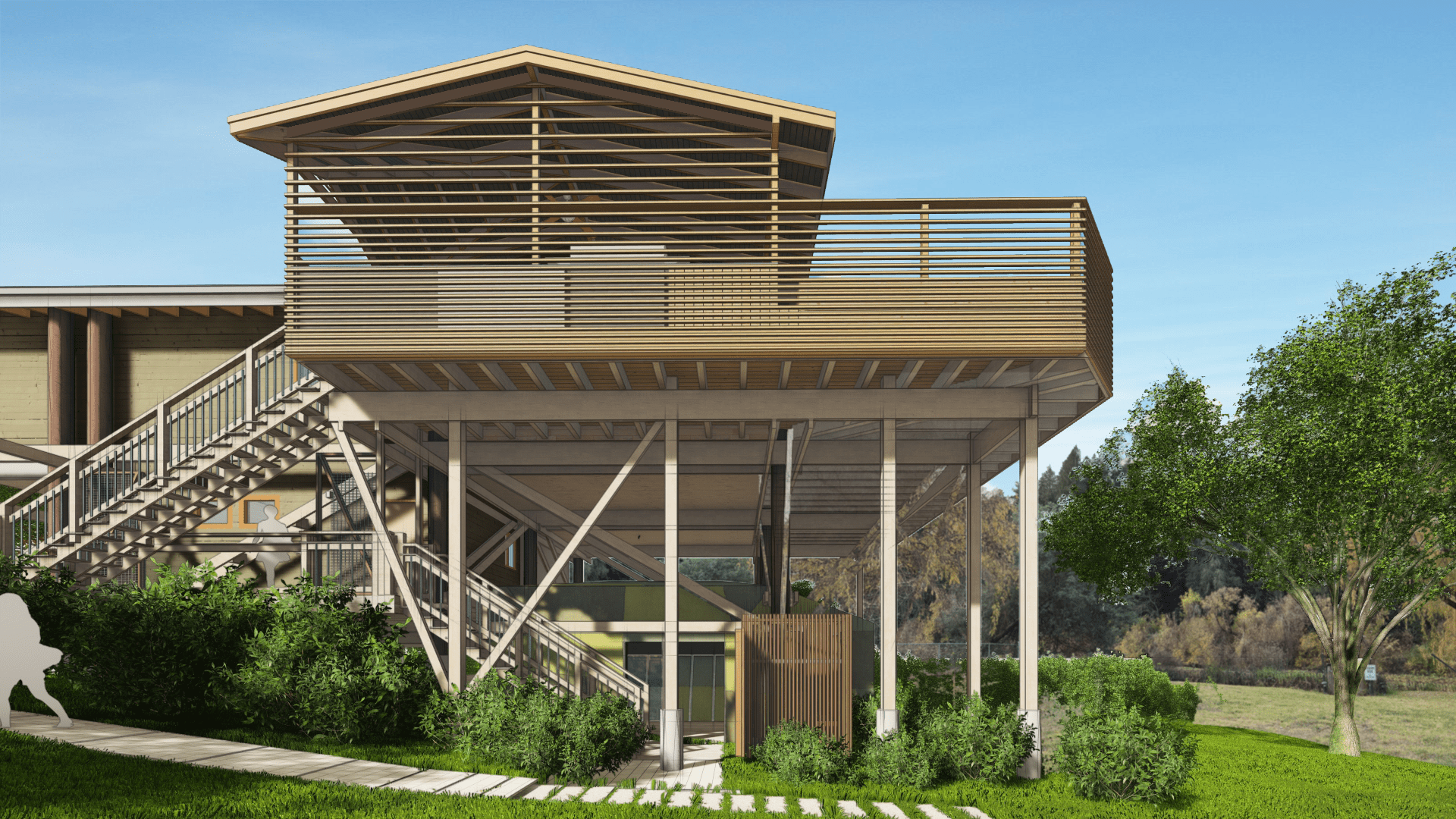
The Buoy Pod
Like a flotsam geodesic mystery pod clinging to the lower (sometimes submerged) peers below the house is an open program game-pod – an informal boat shed, and camp-out space provides at grade enclosure for recreation paraphernalia. The tessellated fiber-concrete panel structure is supported on a triangulated structure built off a reinforced rectangular chassis in order to resist flood intrusion, while allowing water to flow through, and yet be easily hosed down after major seasonal flood events; which are more common with every passing year.
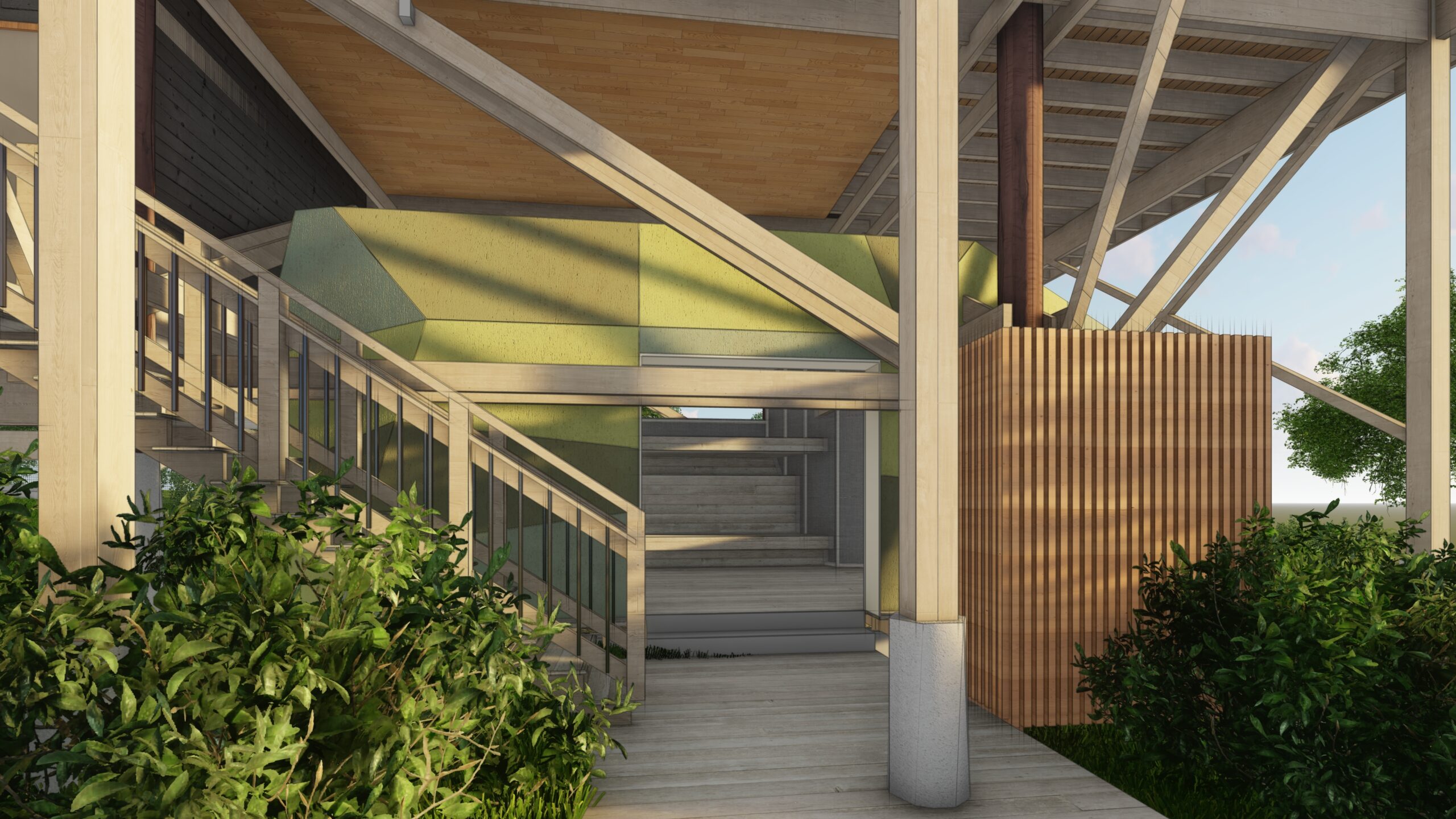
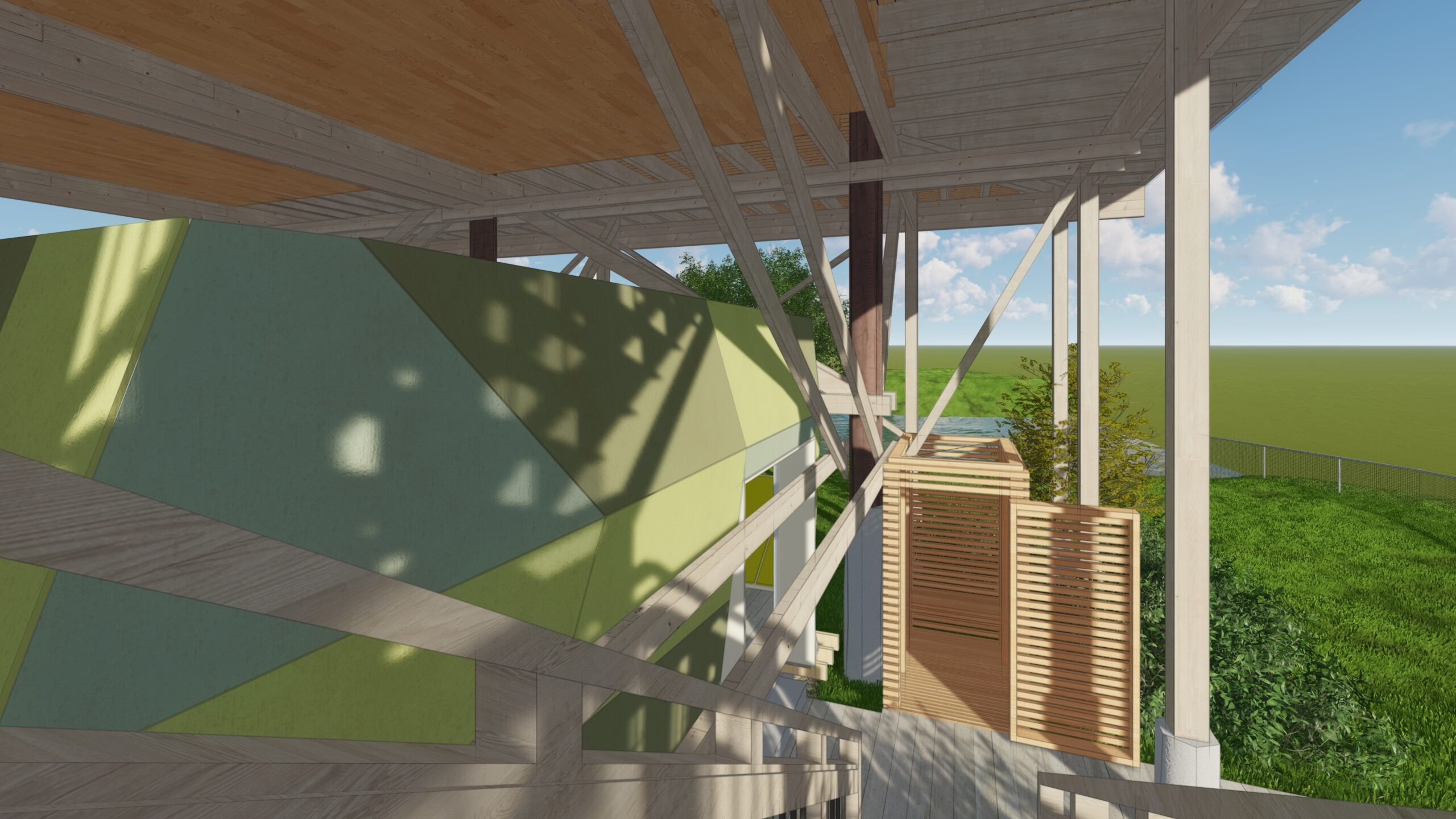
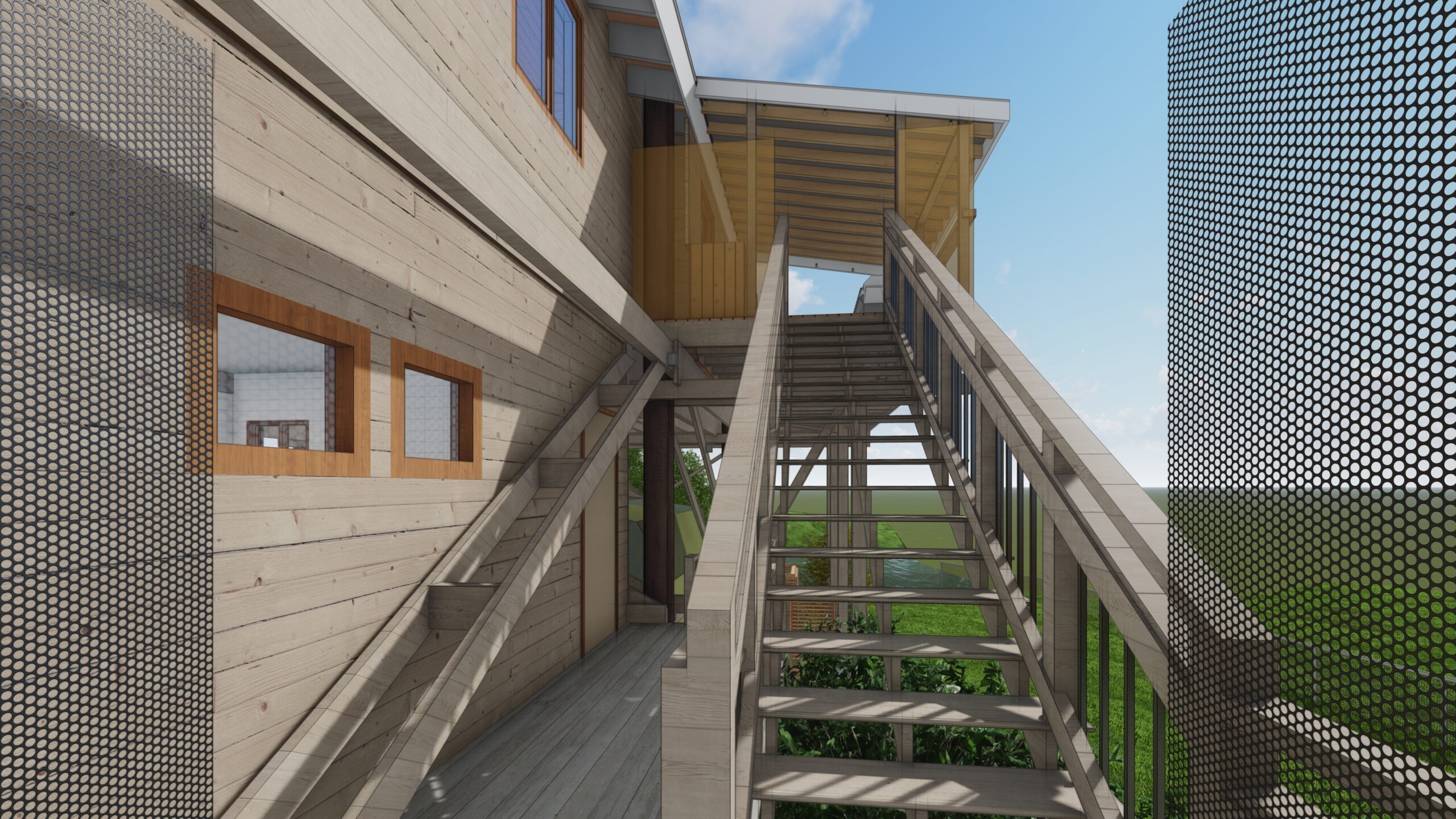
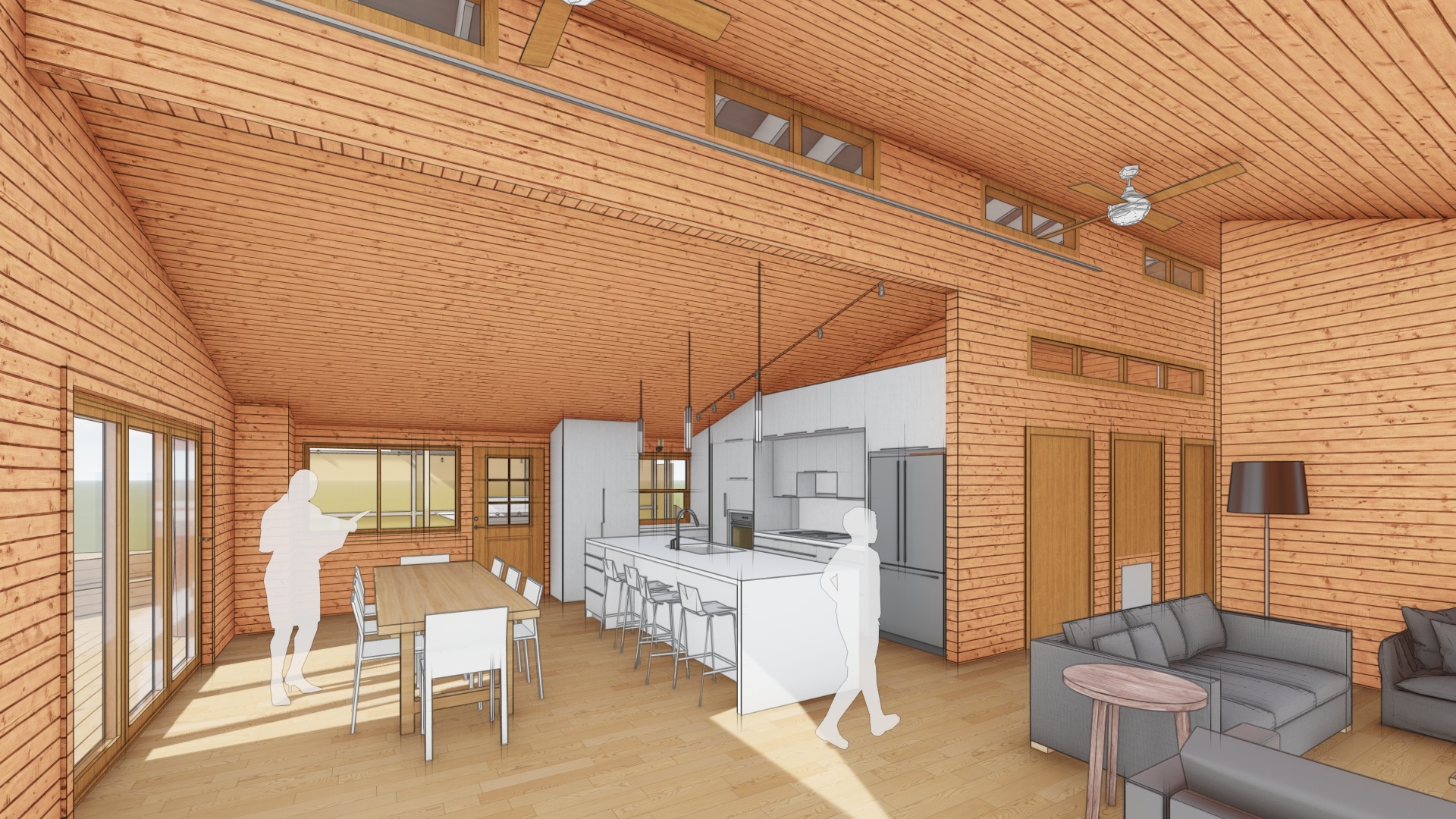
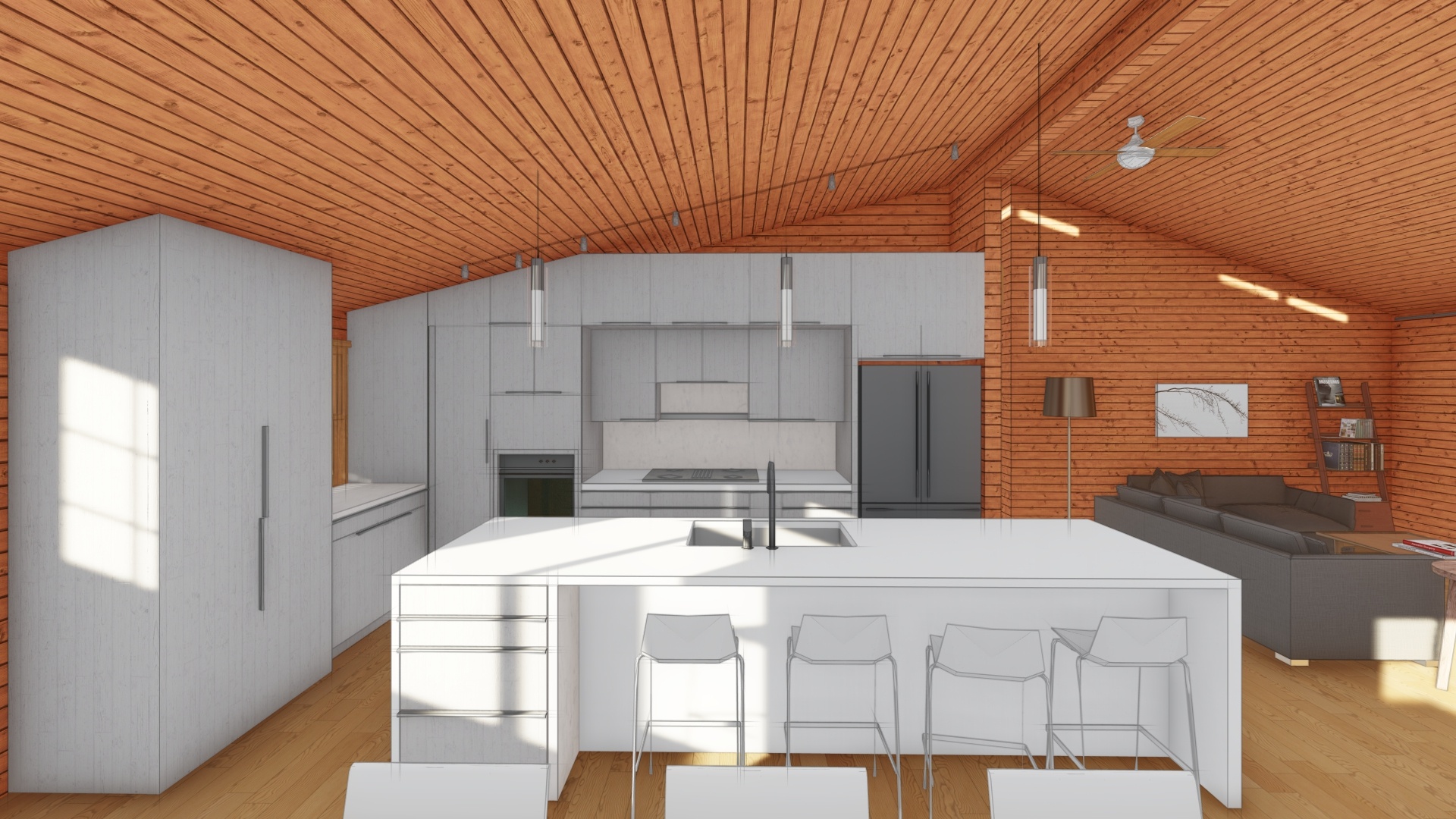
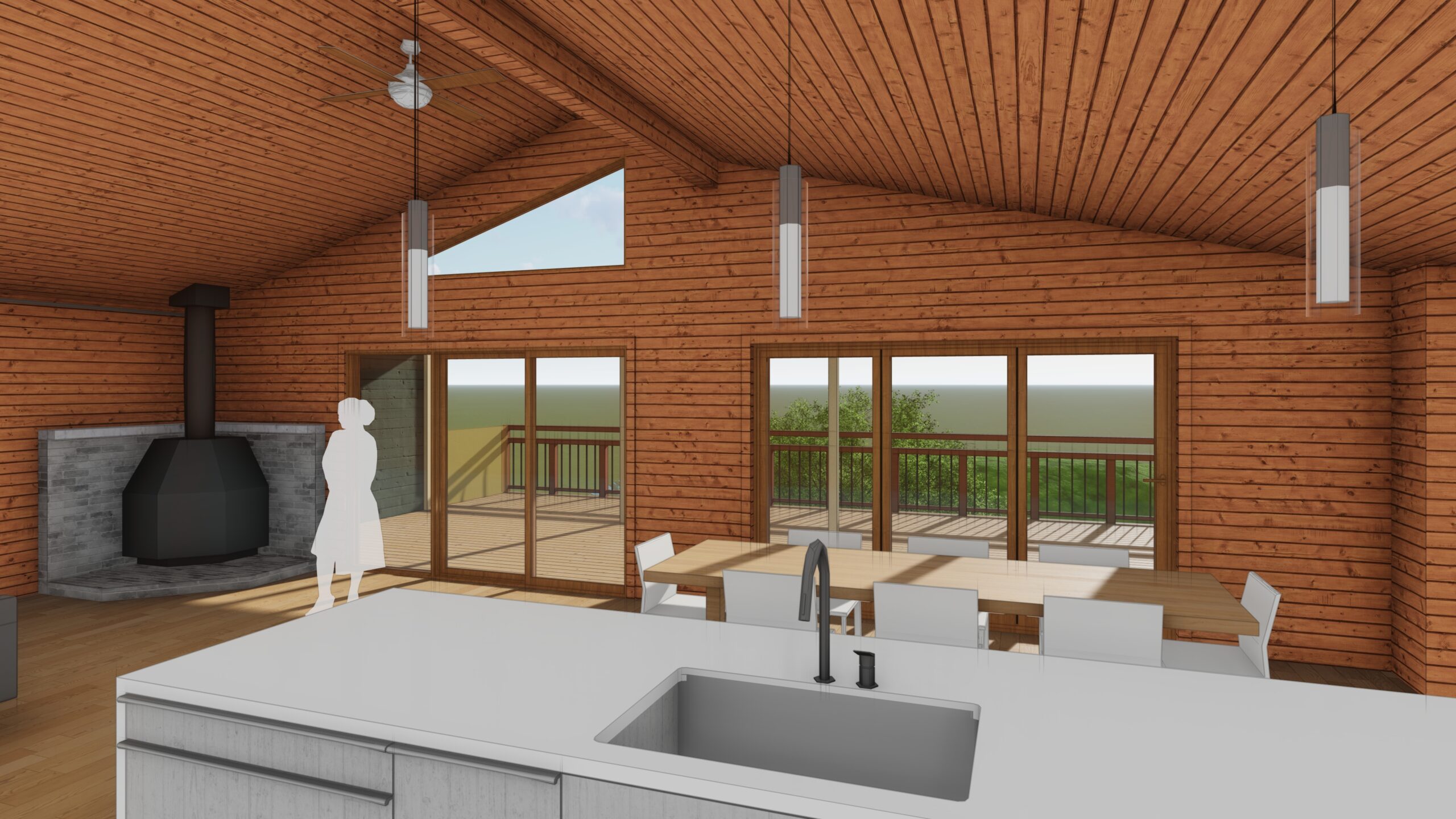
Location: Guerneville, CA
Owner/Client: Private
Scope: Addition & Renovation; Architecture, Interiors, Landscape
Status: Under Construction, Complete 2024
Project type: Residential
Castro Hillside Duplex
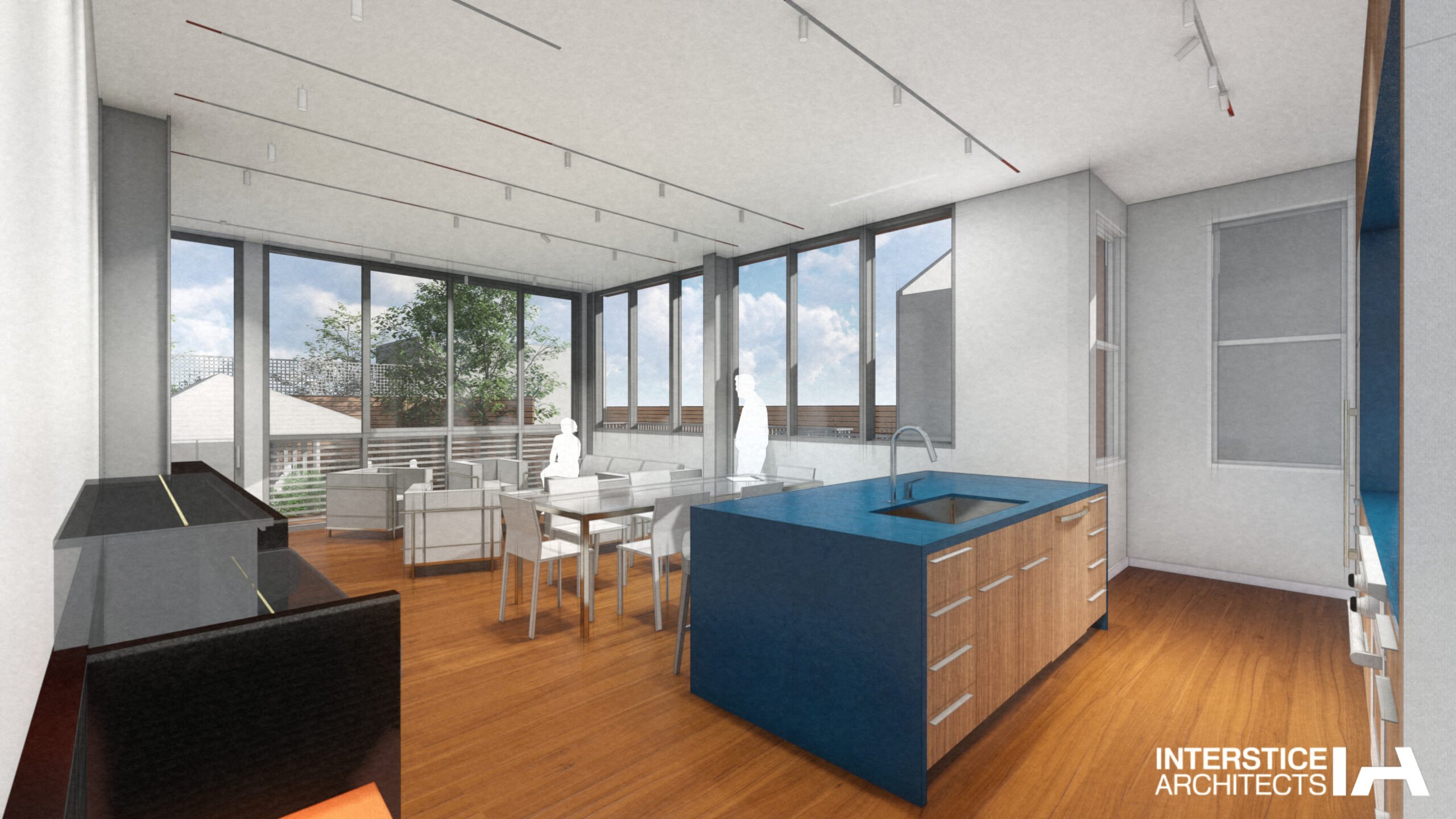
Castro Wedge Site
This two-story duplex is located on a classic San Francisco steeply sloped site in the Castro district. The building was in desperate need of a renovation of both its architecture, and its dilapidated site, which were working against one another. The lower unit was buried at the rear into the steep site, and the upper unit’s access further hampered the lower’s units light and possible ground floor use of the generous open space typical on these deep lots.
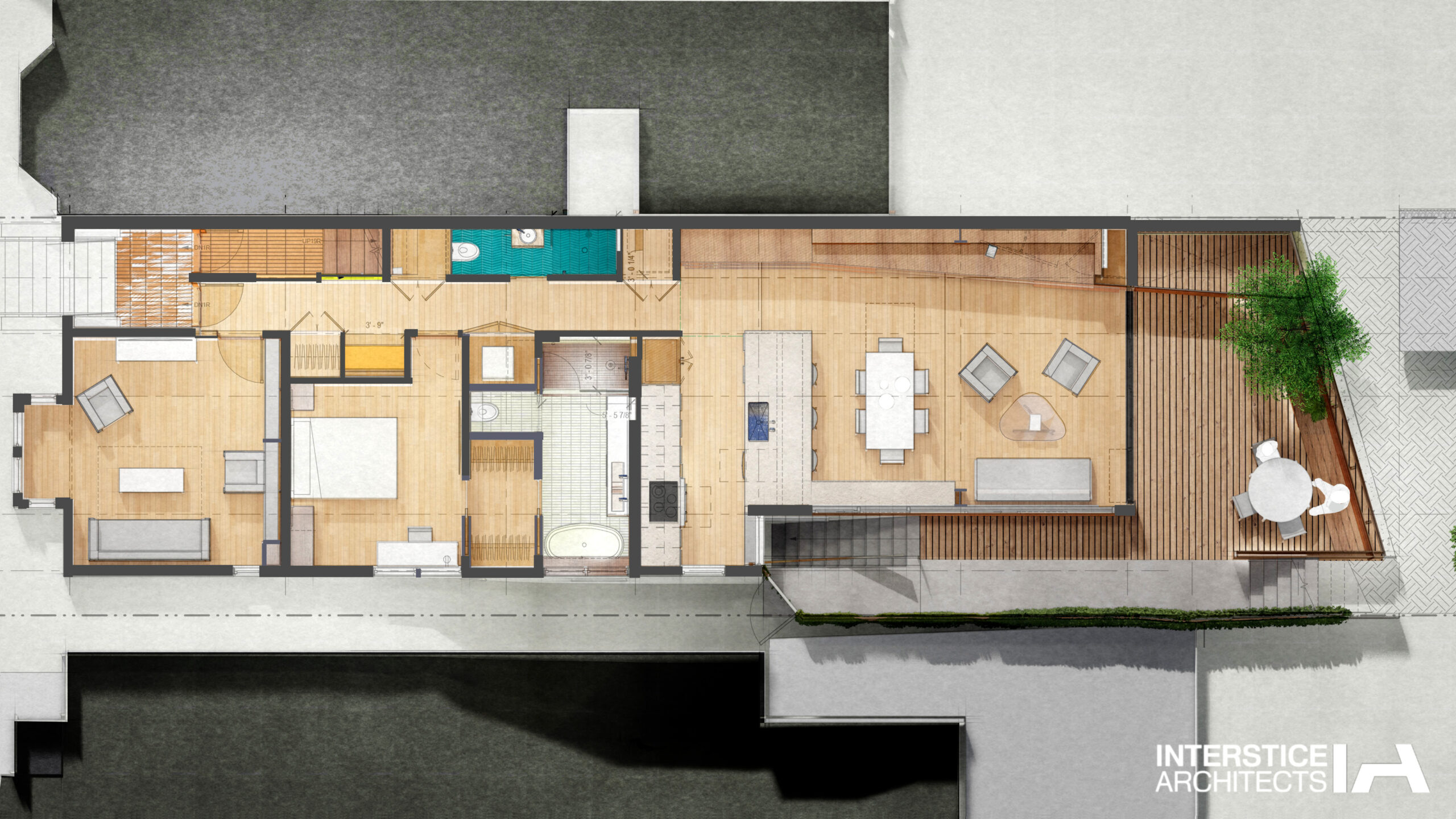

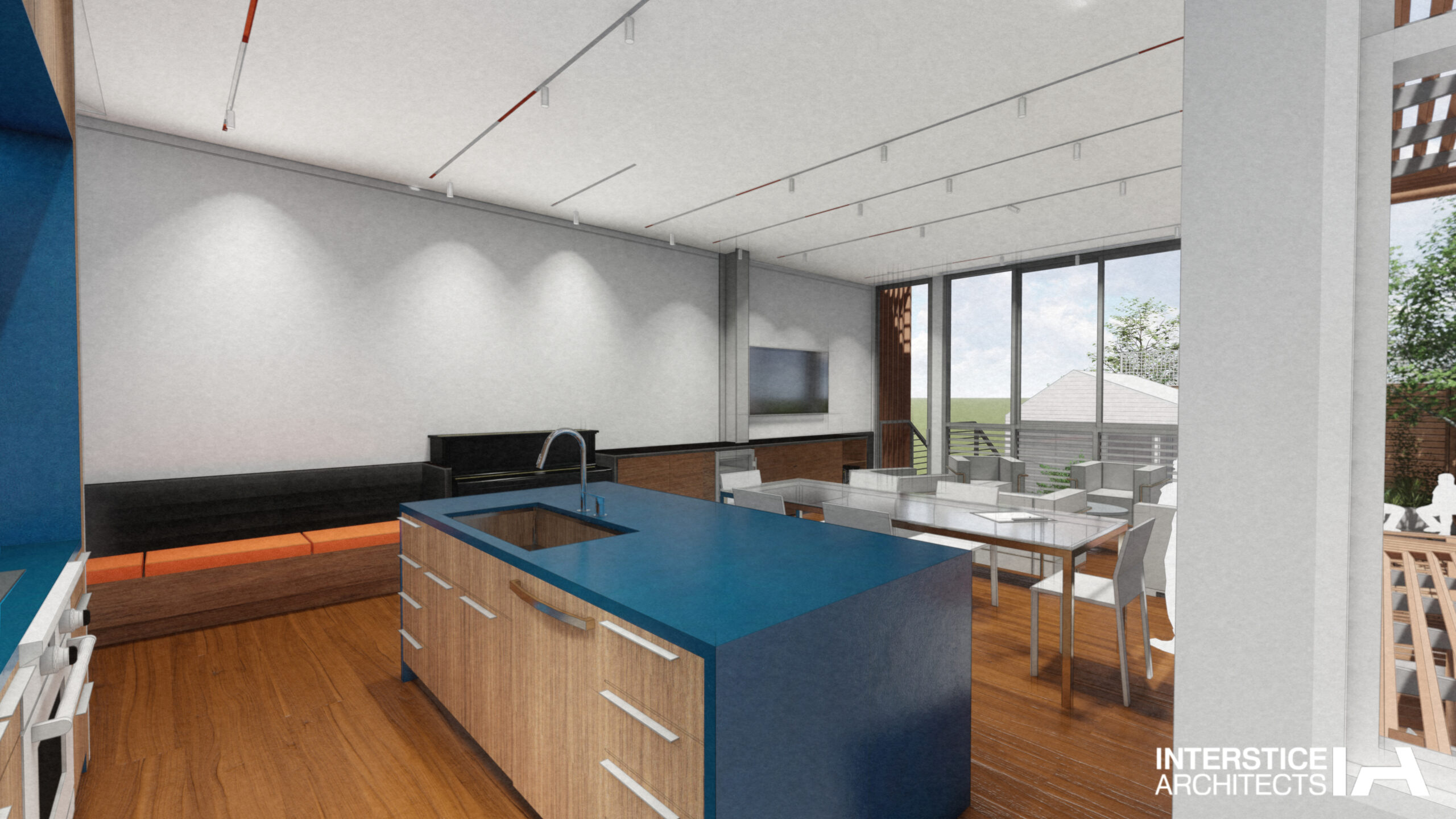

Historic Facade Dissolves into a Modern Garden Home
The Design leverages the site’s great orientation, and shared South alley to bring light into the long side of the building, and deep into the now opened-up public spaces of the two units. Starting at the street the project upgrades a forlornly stripped façade, to return it to its historical craftsman’s character, while the interiors are completely transformed into a fluid open “raumplan” that allows space to flow continuously, just as the envelope dissolves into glass towards the private rear garden, where patio decks terrace into the hillside allowing maximum use of this protected outdoor space.
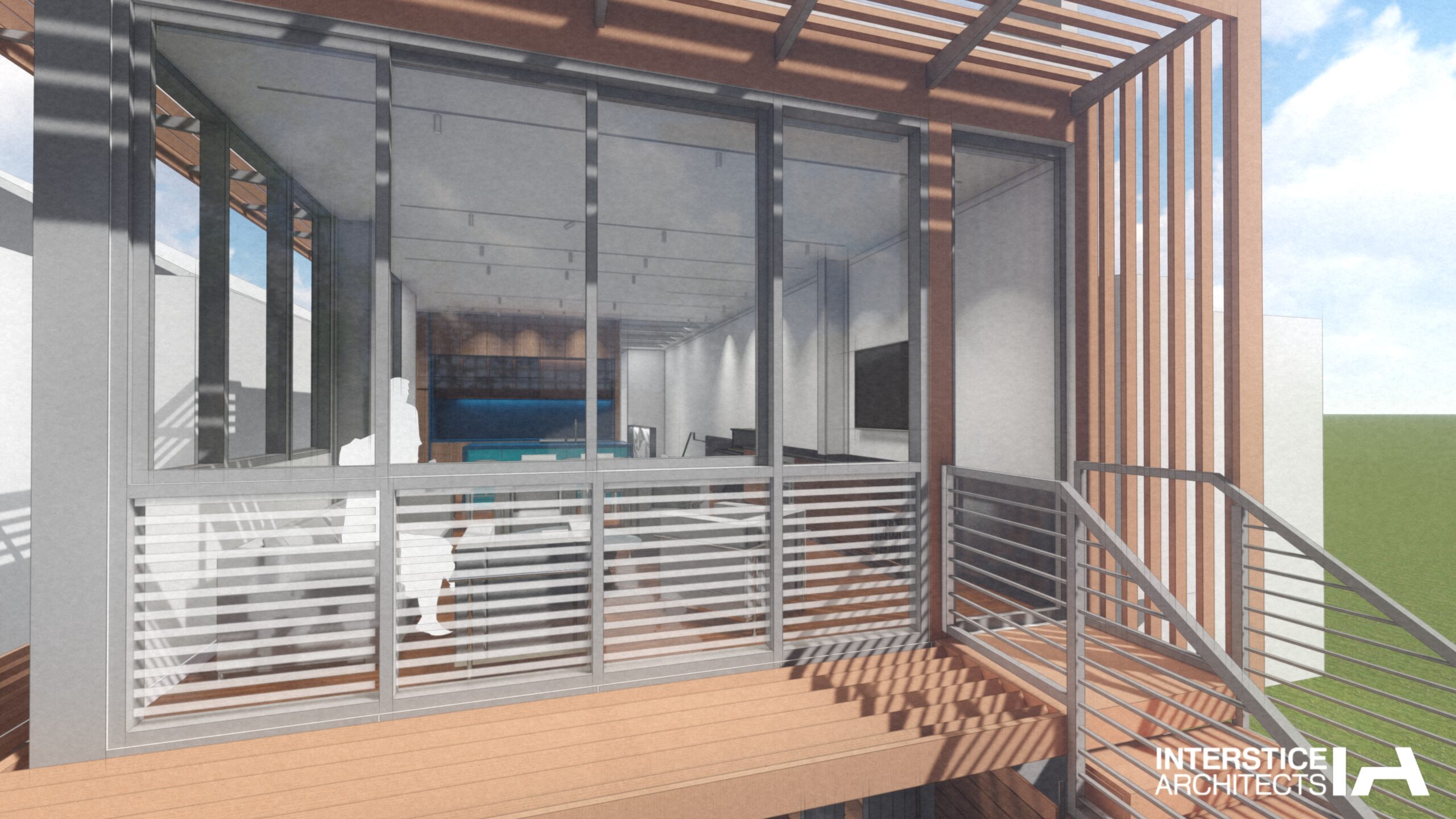
An Open Garden “Room”
A small existing shed becomes the focal point of the new landscape that creates an extended living room from the lower unit to a garden wall which provides an ample deck for the rear yard between new planting and fruit trees that provide shade and frame the volume of the rear shared social space of the backyard commons. Brick foundations were replaced, and steel infrastructure installed making the seamless open spaces possible – as the new home is now structurally up to code, and a perfect fit for the California lifestyle the is the hallmark of great modern architecture in the Bay Area.
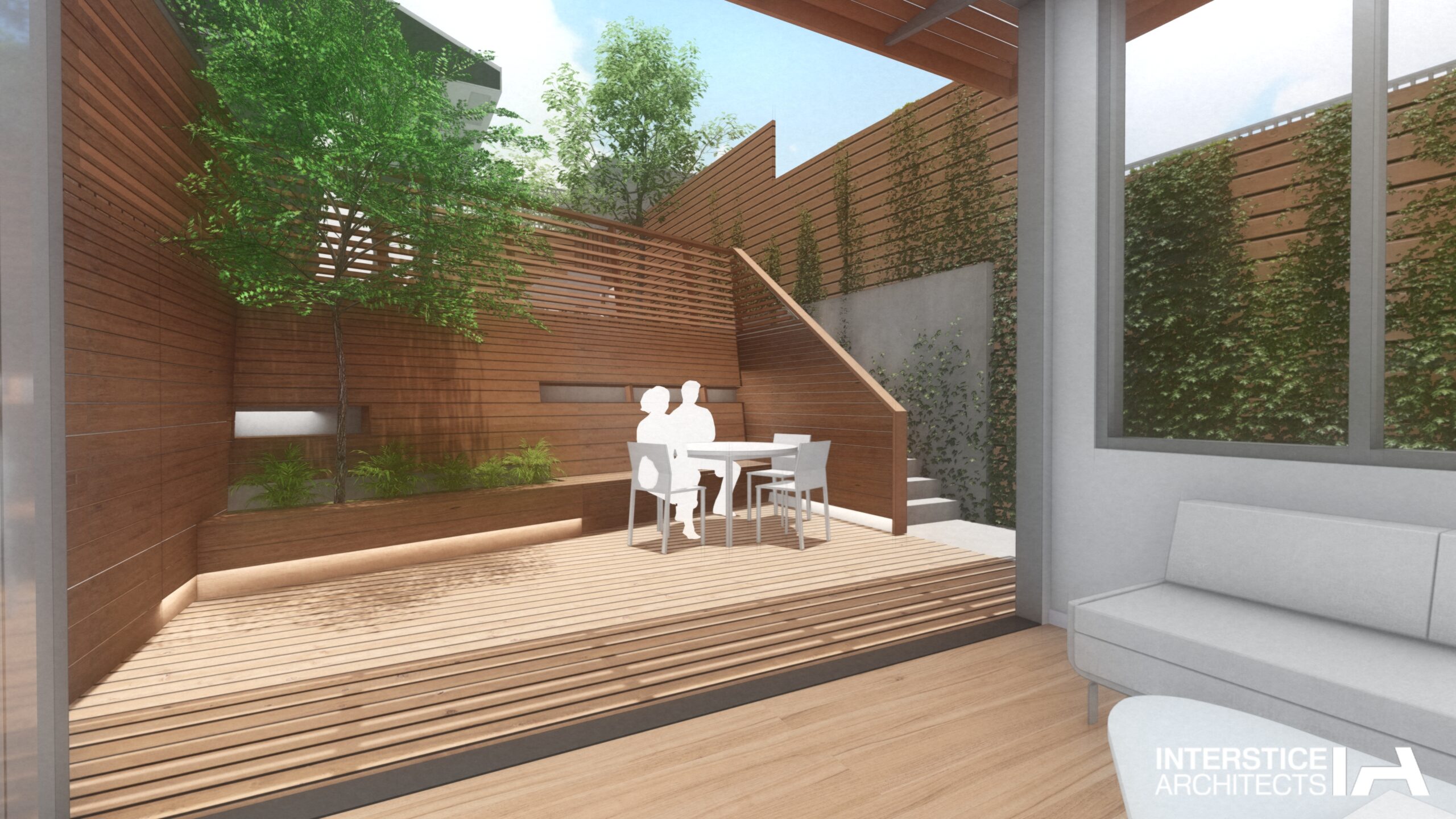

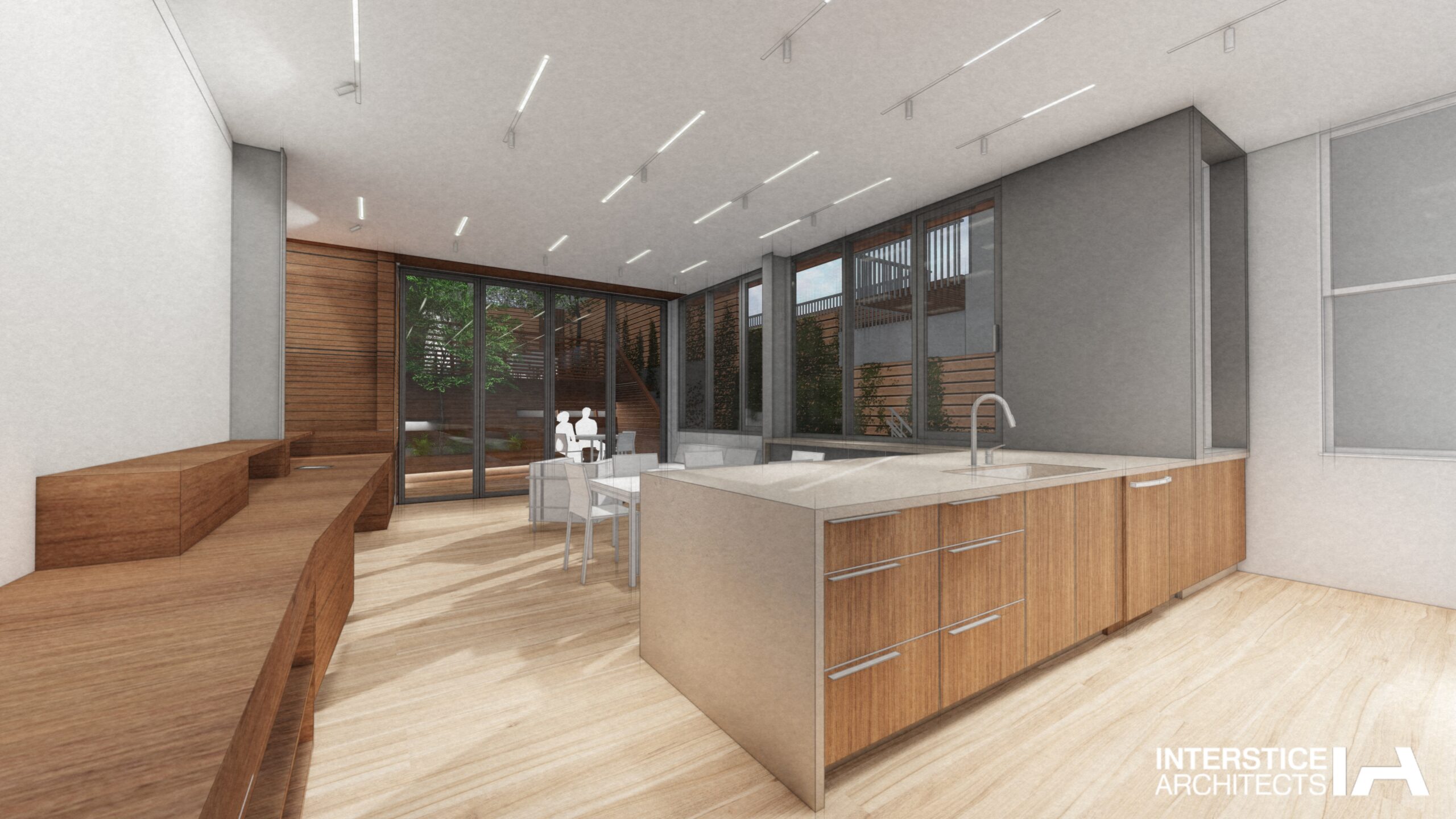

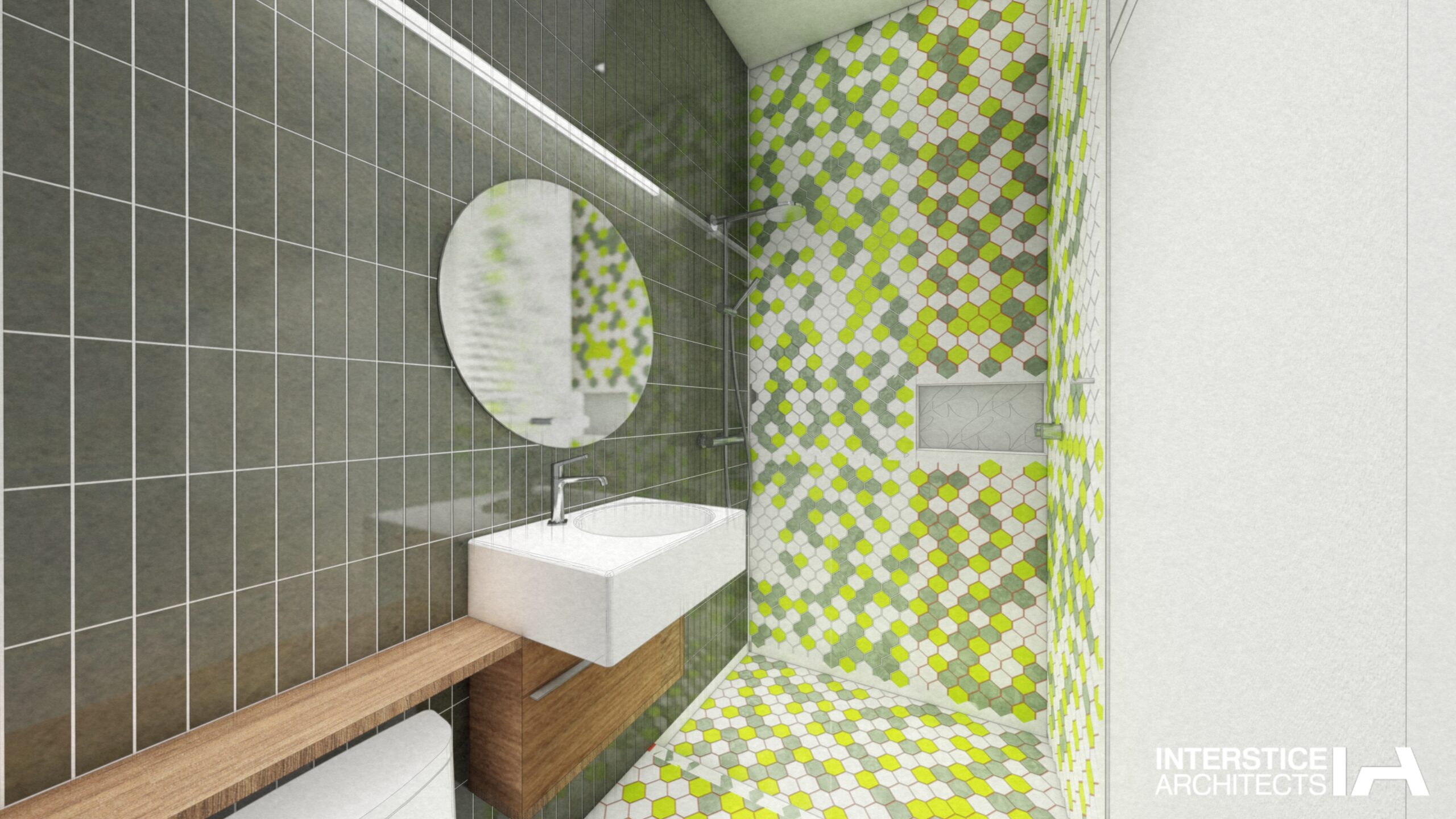
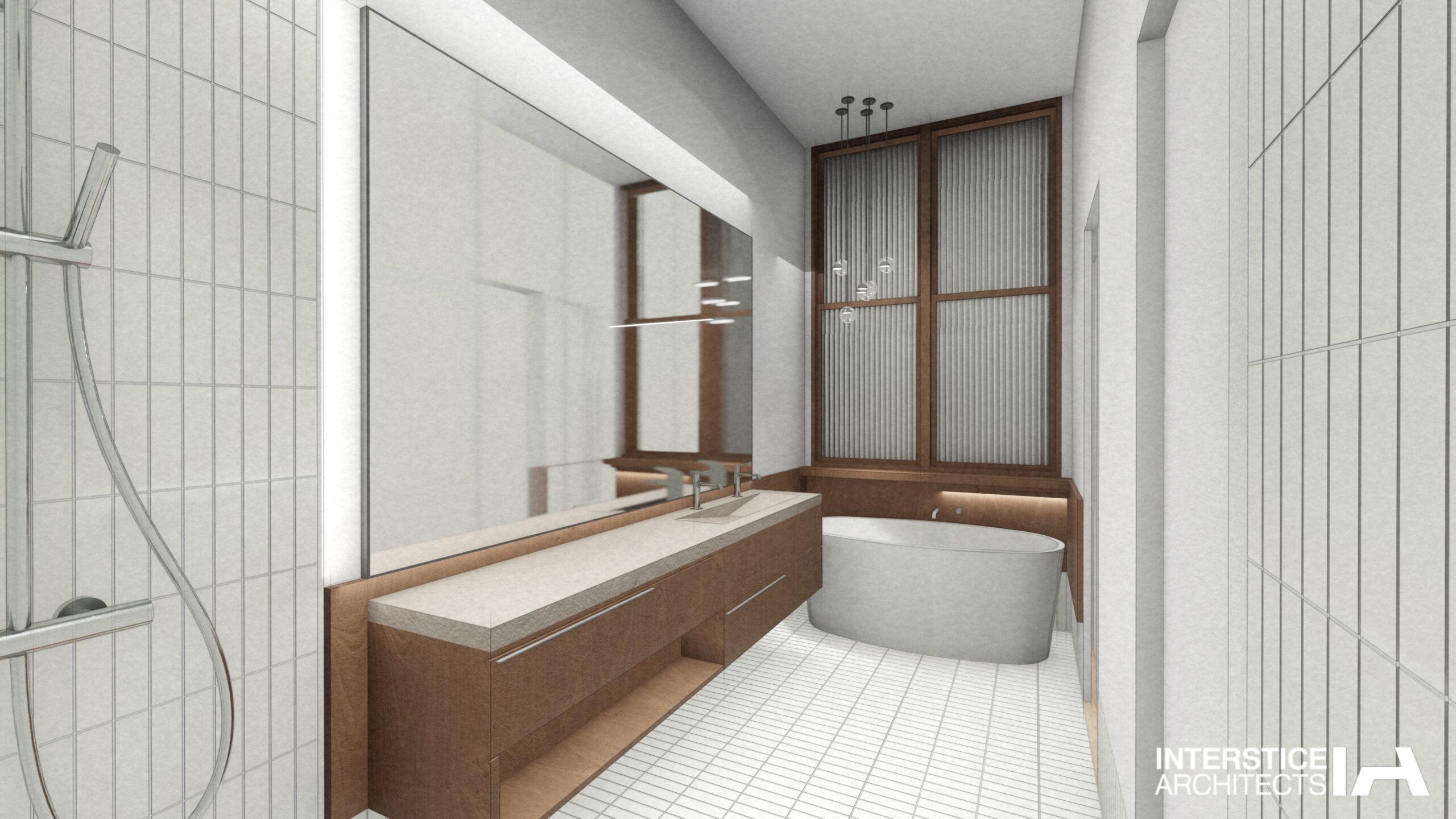
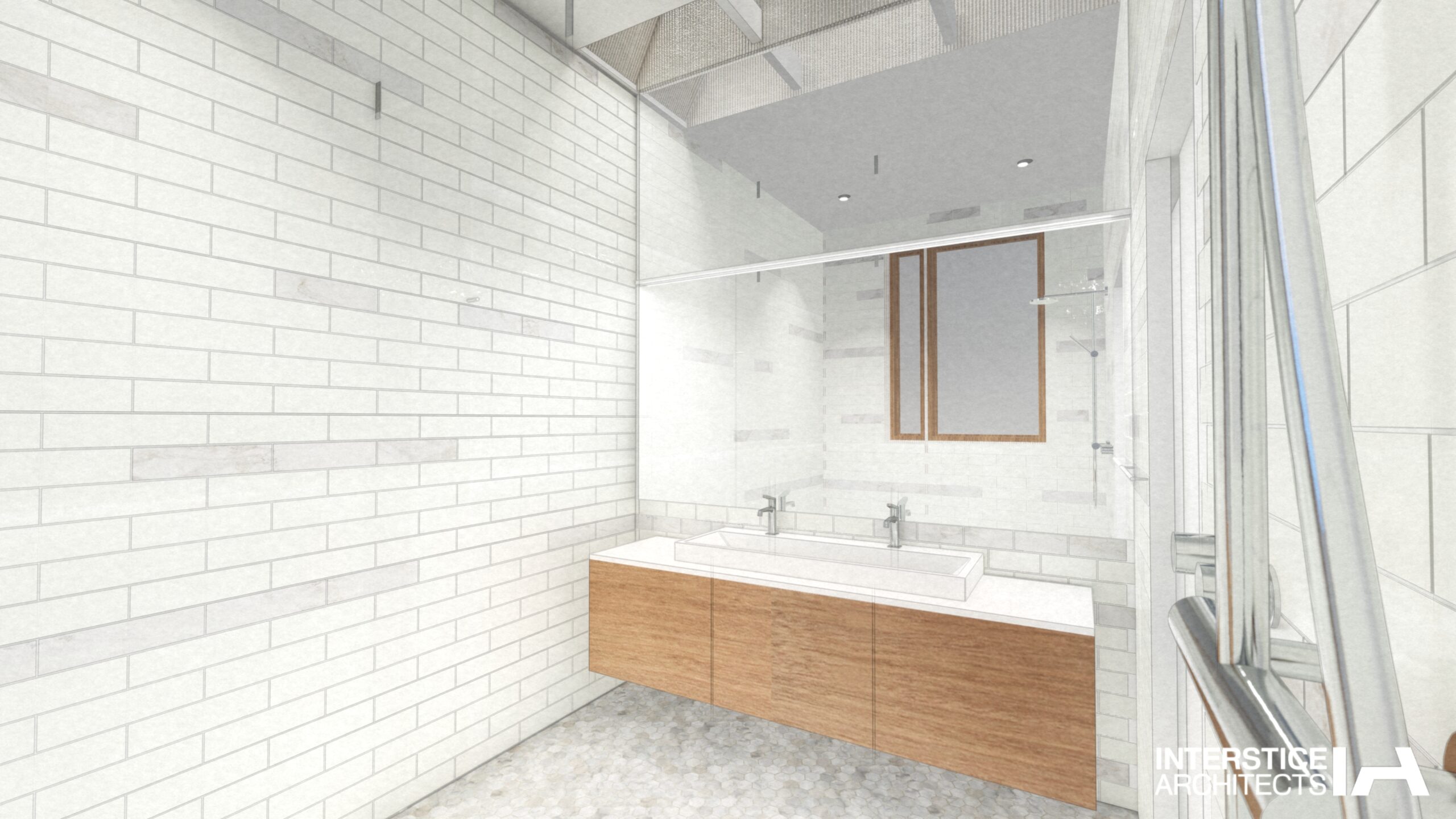
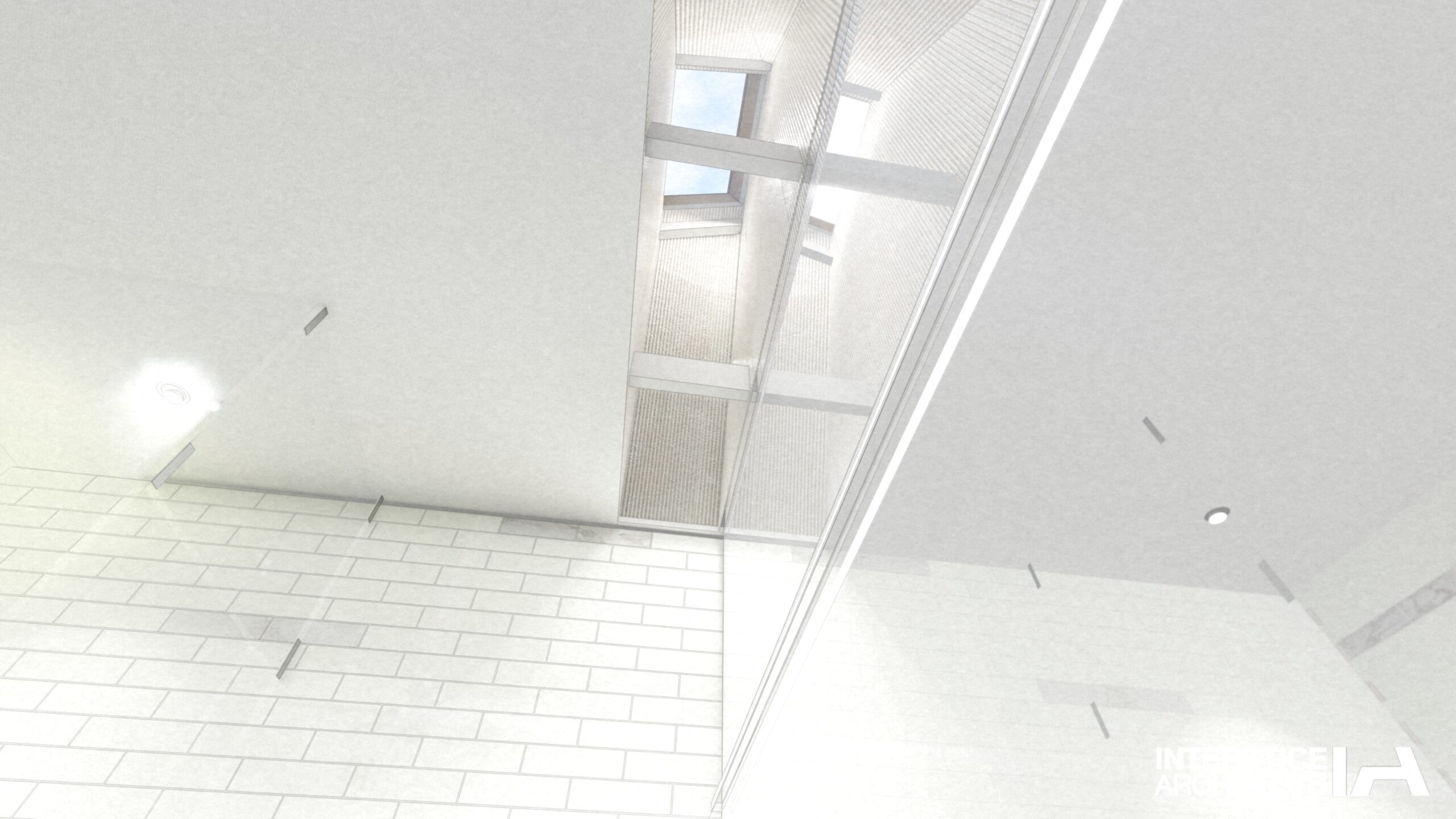
Location: Hartford Street, Castro, San Francisco.
Owner/Client: Undisclosed
Scope: Residential Renovation & Garden Design
Status: Design
Mission Garden Unit
A Secret Garden
This once commercial unit in the heart of the Mission District of San Francisco was converted into a uniquely grounded single-family home. Historically, this century old 2-story wood frame building built in the 1890’s was part of a dispersed 26th Street merchant corridor, which over time has gradually migrated to nearby Mission and Valencia Streets, as housing pressures in the city have steadily increased. The shop front has been updated to a compressed front yard, while the rear “yard” is transformed into a completive garden – enclosed as is a typical condition in the dense Mission District, transformed here into a quiet, private and nature-animated oasis which the new home relies on for air, light, color and texture.
Space dissolves into a bamboo grove
This new ground floor unit connects the busy street front through an ordered façade of 100% reclaimed glass arranged like scales in a steel matrix, to the quite rear grove of timber bamboo, ferns and Japanese maple. The architectural space moves through an open glass wall into dappled shade and the sound of wind rustles the 40ft lush canopy. A customized fence unifies the edges with a color palette derived from the life cycle of the timber bamboo trunks.
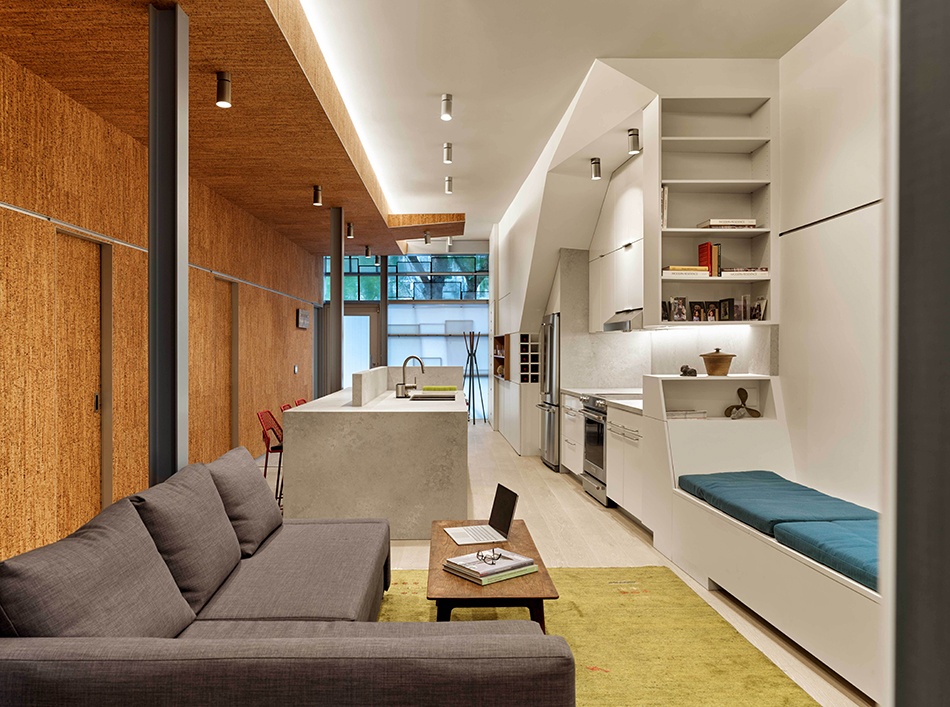
A river of cork runs through it
The interior plan is inverted – to provide bedroom and a private office off the garden while the core of the home is an open plan of living and dining around an open kitchen. The living space is organized by a continuous long and high surface of cork meant to create a soft acoustic environment and flexible display throughout the home, while also concealing the volumes for mechanical, storage and bathrooms. The floor to ceiling expanses of cork surface eventually envelope an entire sensual enclosure at the master bedroom, where the cork surround one on walls, doors and ceilings.
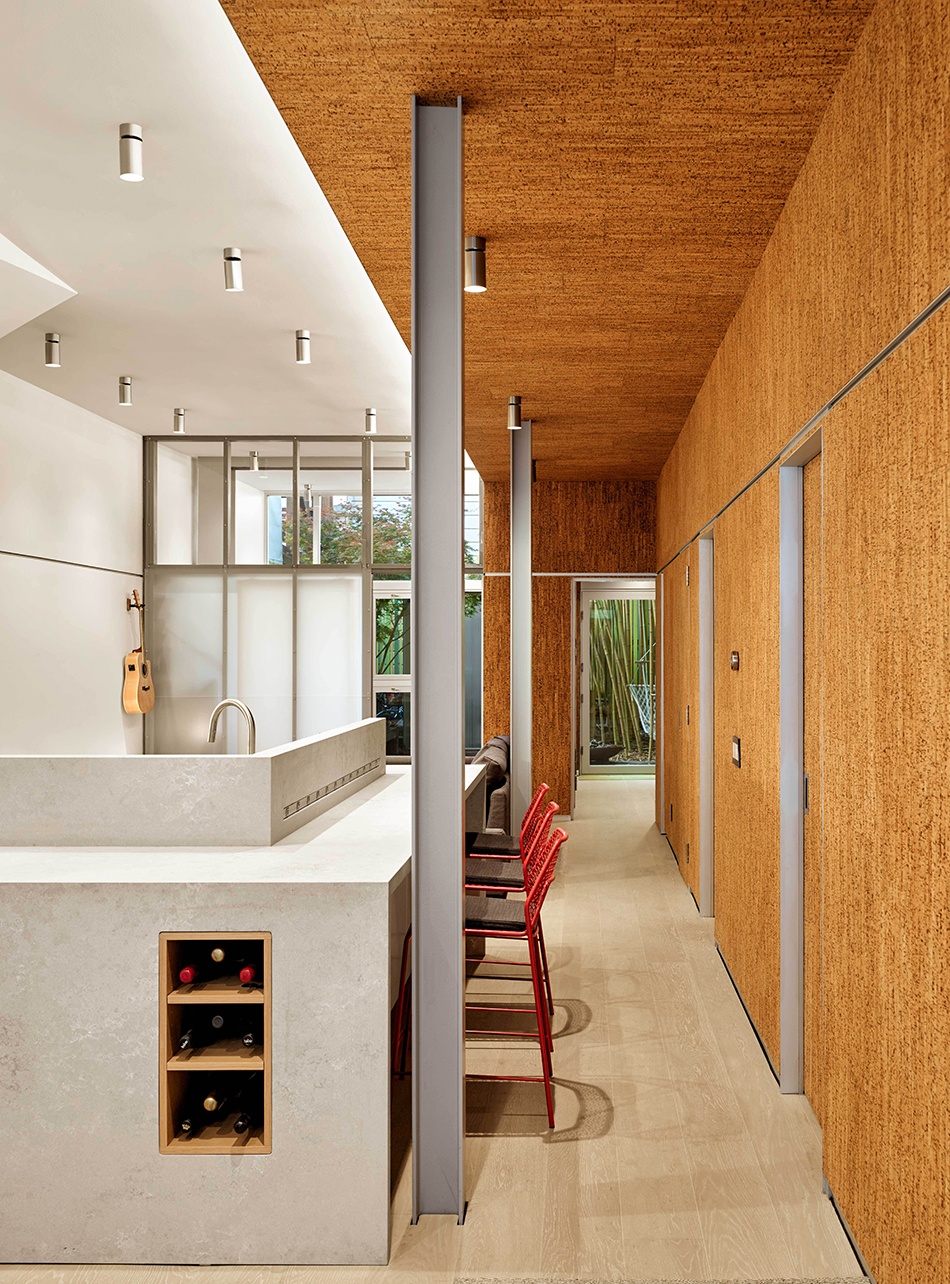
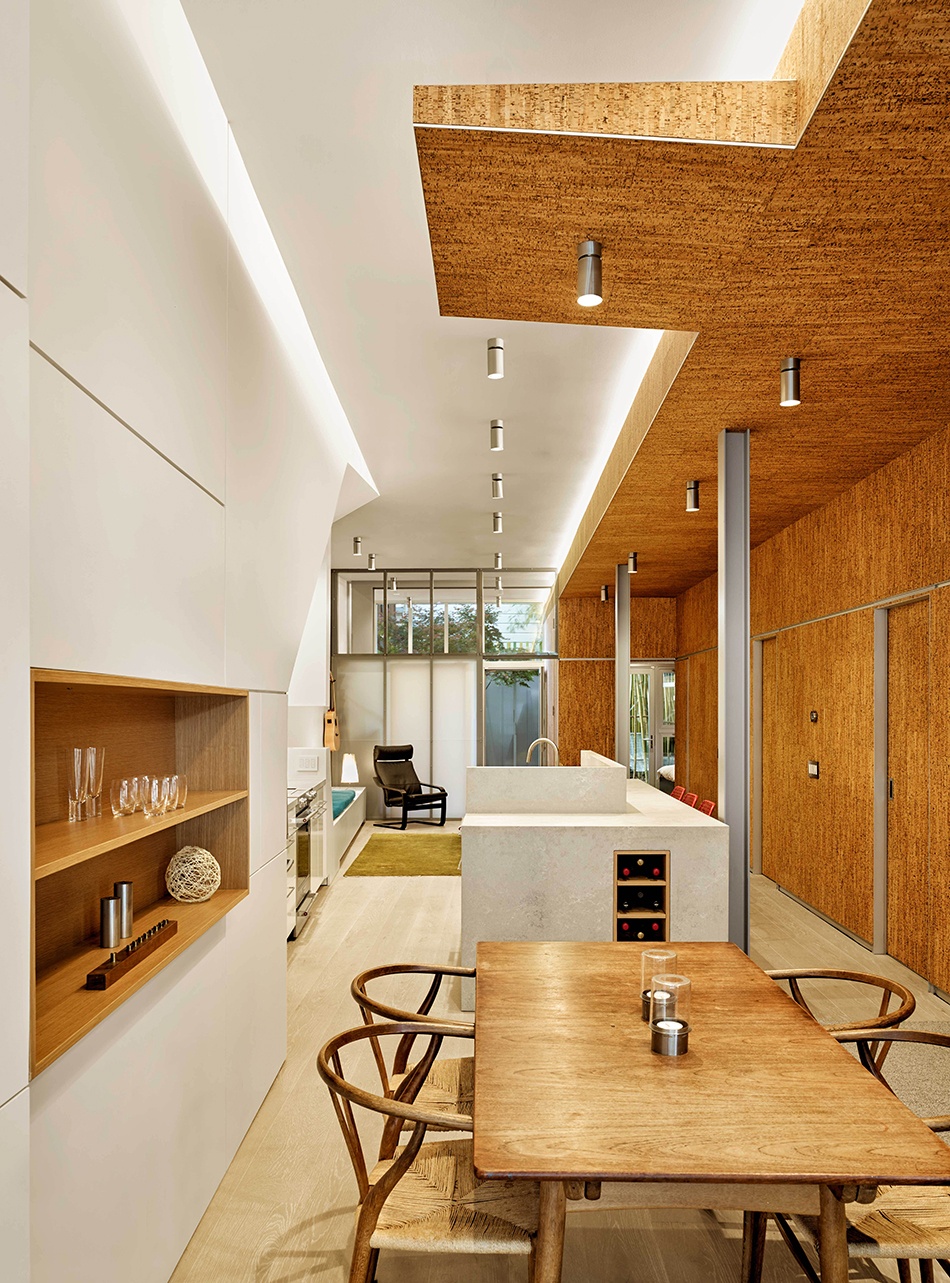
Space and Light in balance with Nature
The interior space maximizes the limited 1,200 sf. floor plan by way of integrating storage within the sculpted cabinets and built-in seating volumes. The storage perforates and frames the unencumbered space, along with the use of glass walls and sliding partitions to allow for functionally distinct areas to work in concert with one another – providing openness, privacy and separation as needed, and allowing natural light to reach deep into the narrow home.
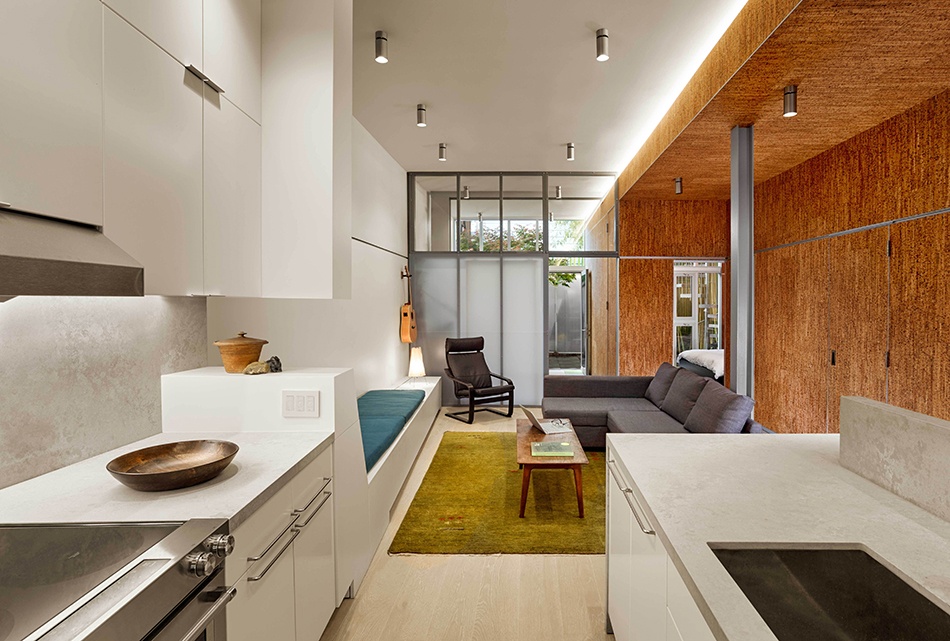
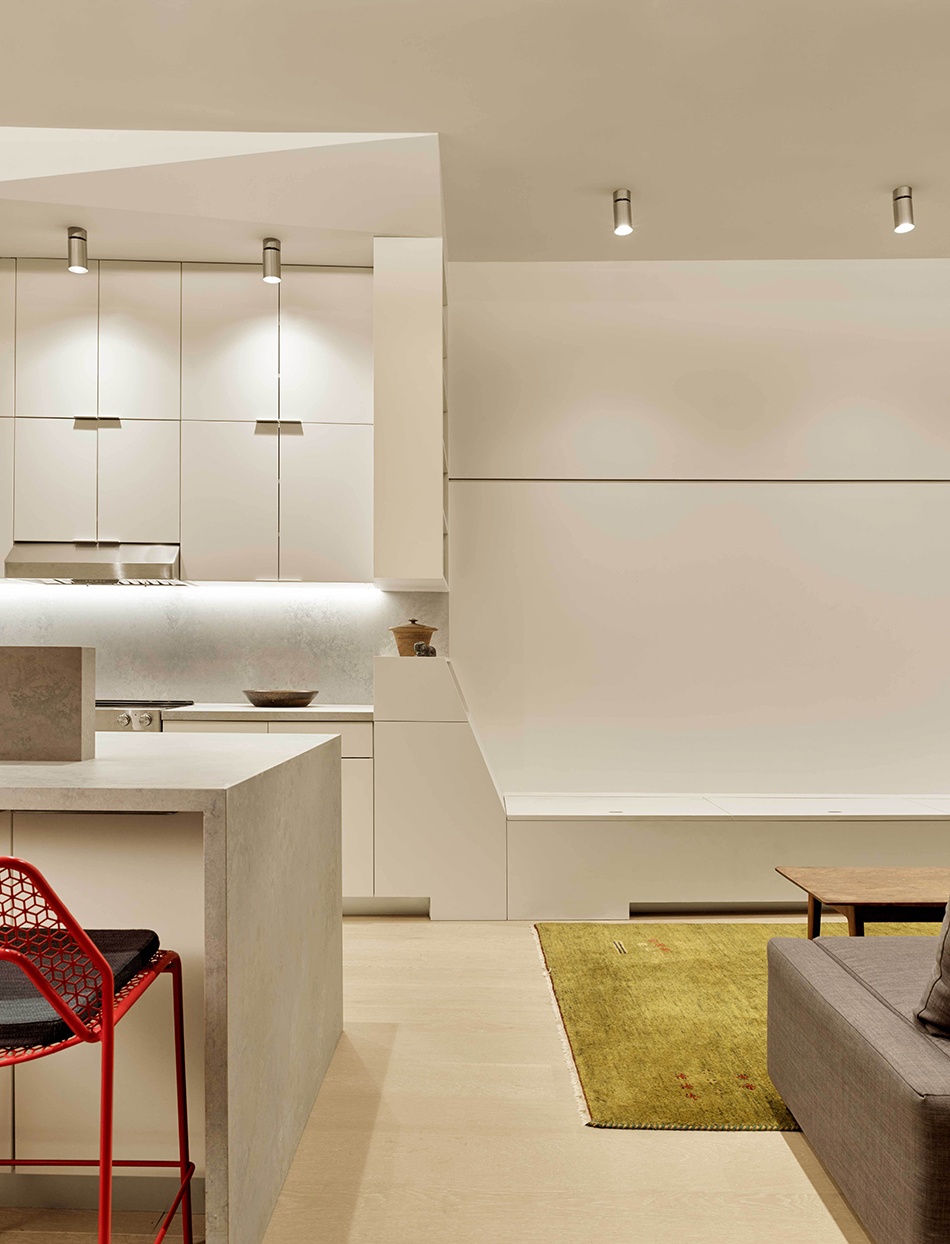
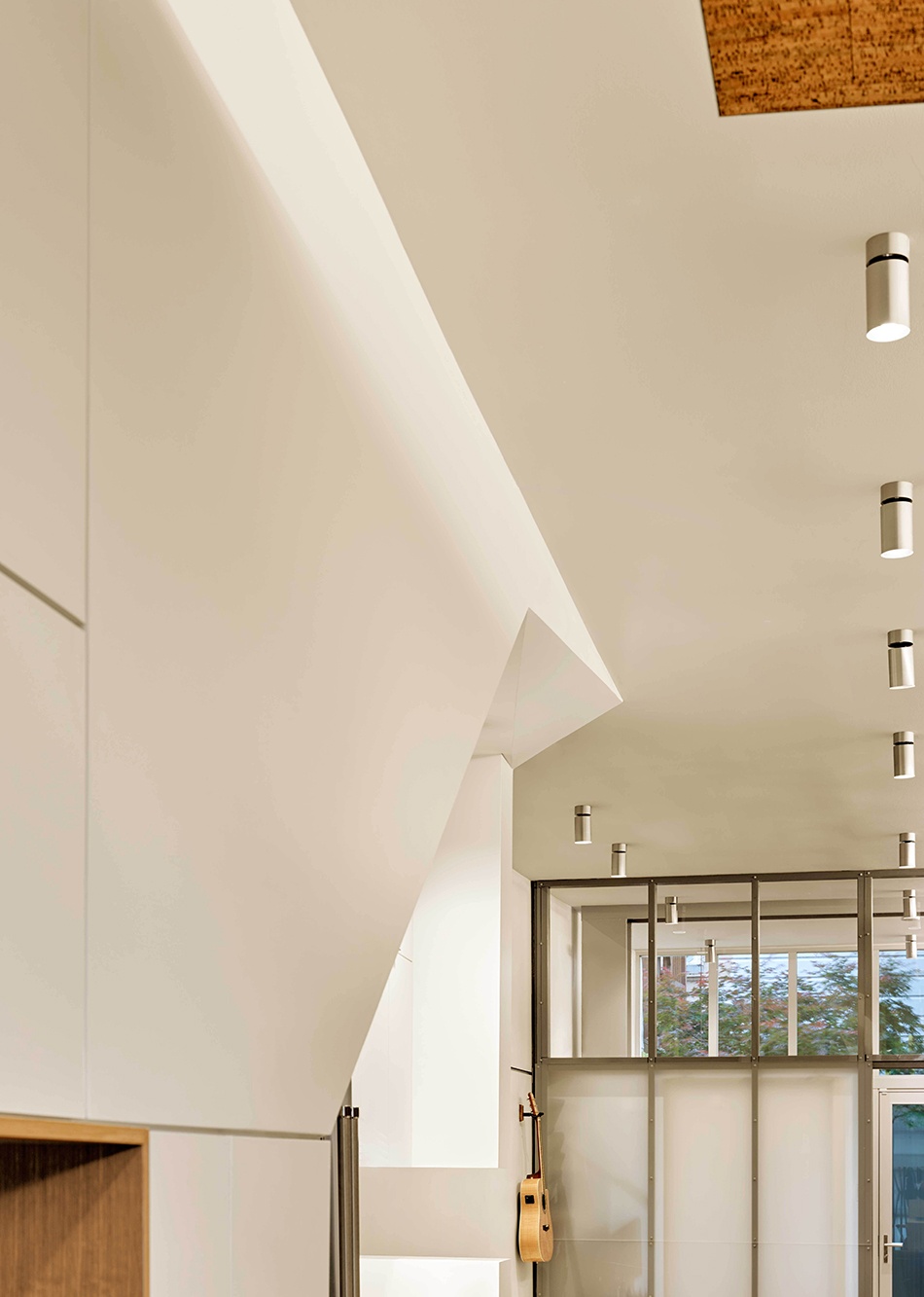
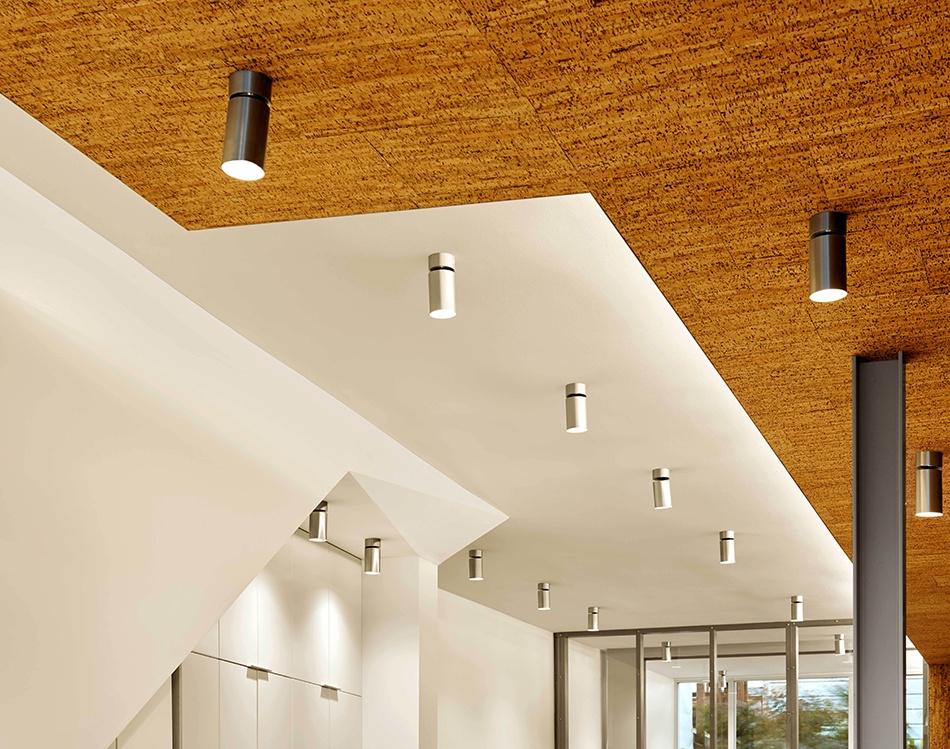

Location: San Francisco, California
Owner/Client: Undisclosed
Scope: Interior Renovation / Garden Space
Status: Completed 2020
Photography: Cesar Rubio




